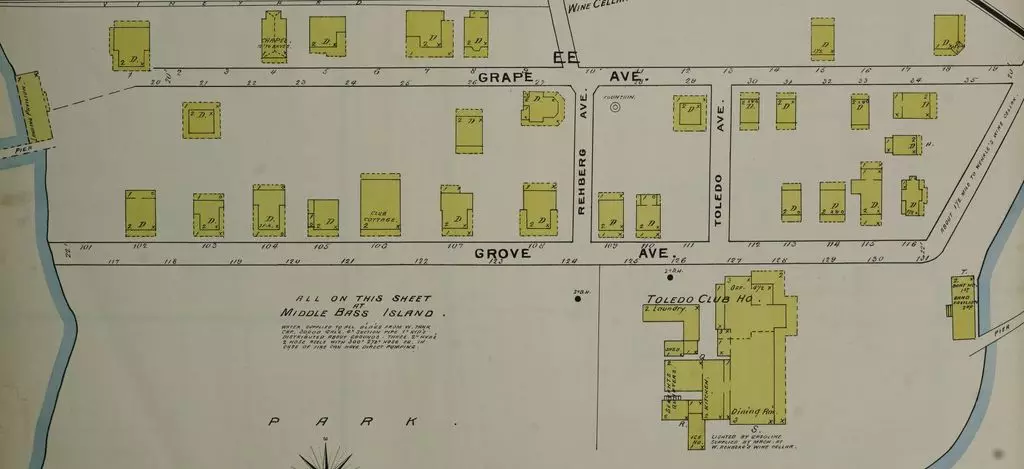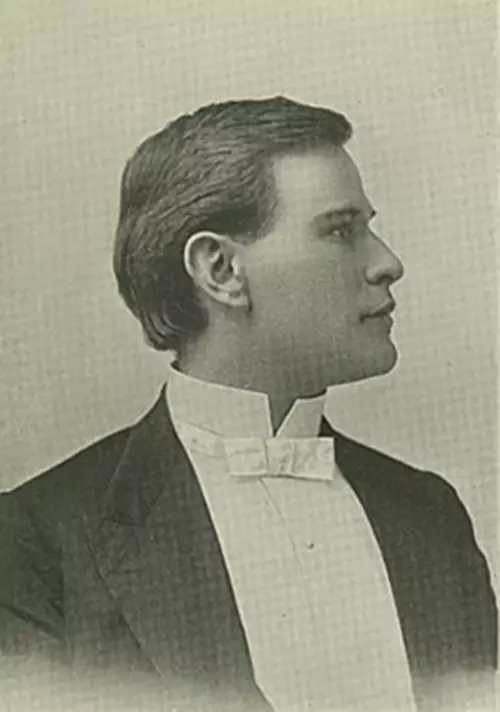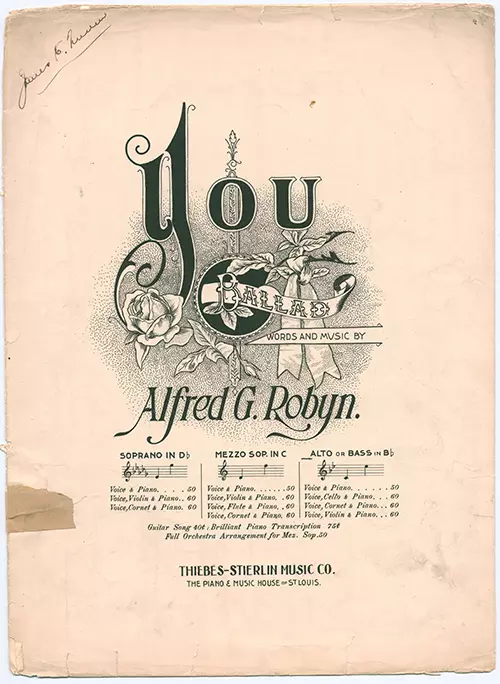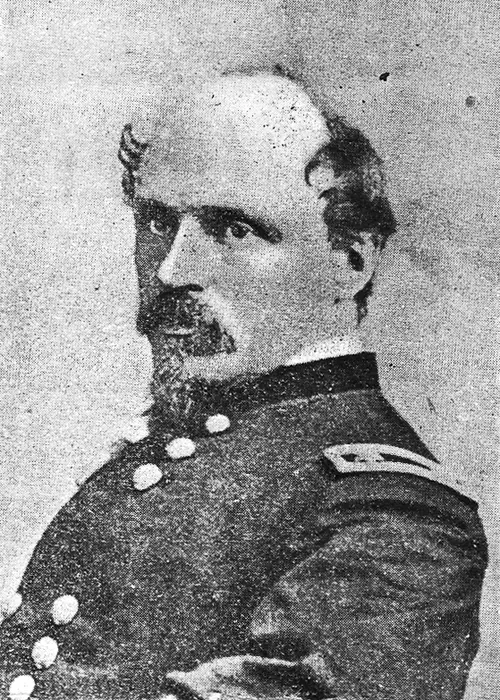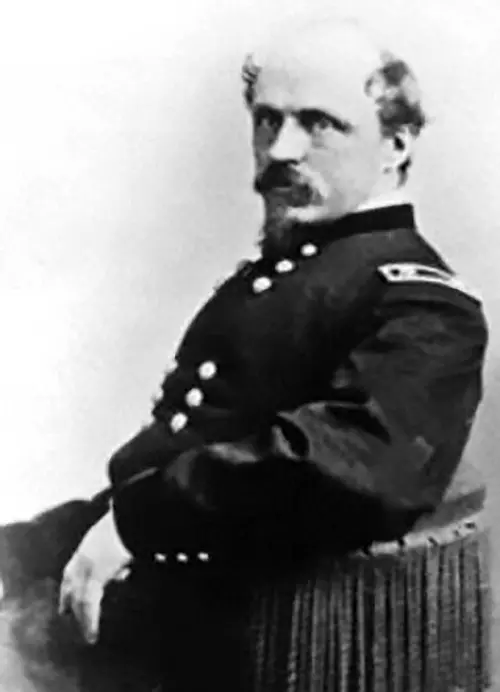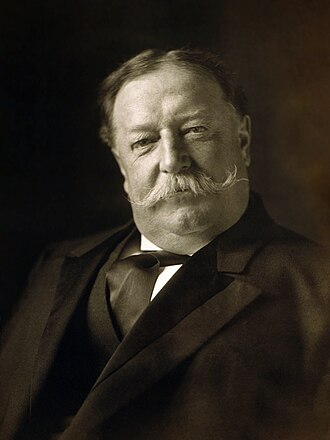
The History of the Toledo and Lake Erie Boating and Fishing Association and The Middle Bass Club
By Marie Demer Rader, July 2021
Original Club (1874-1922)
The Original Club consisted of the Toledo and Lake Erie Boating and Fishing Association (1874-1894) and the renamed Middle Bass Club (1894-1922). The prominent Toledo families that started the Original Club and remained members for a number of years include: Barbers, Barbours, Baumgardners, Berdans, Bodmans, Bonds, Burdicks, Childs’s, Collins’s, Coltons, Curtis’s, Cummings, Davis’s, Dodges, Doyles, Goslines, Hamiltons, Hardees, Isherwoods, Kelseys, Ketchams, Lockes, Poes, Potters, Rodgers’s, Shoemakers, Smiths, Standarts, Stars, Stevens, Swaynes, Taylors, Waites and Youngs to name a few.
“In the year 1872 twenty gentlemen of the City of Toledo associated themselves together for the purpose of establishing and maintaining suitable conveniences for boating and fishing at Ten-Mile Creek, which empties into the Maumee Bay northwest of Toledo (several miles from the city.) Their experience during that and the following year demonstrated that the location was not well chosen for the purpose of the Association. In view of this fact it was decided to increase its membership and form a perfect organization, which was done at a meeting, called for that purpose, at Odeon Hall, in the City of Toledo, March 16, 1874, at which time a Board of Trustees was elected for the ensuing year, consisting of the following named gentlemen: Matthew Shoemaker, Stephen H. Standart, Harry J. Chase, James B. Monroe, Edward O. Brown, Valentine Hicks Ketcham, and Horatio E. Bangs; also a Constitution, By-Laws and name of the Association were adopted.
On the following day, March 17th, the Board of Trustees met at the Northern National Bank, in the City of Toledo, and organized by electing Matthew Shoemaker, President; James B. Monroe, First Vice-President; Stephen H. Standard, Second Vice-President; Francis Pilgrim Isherwood, Secretary; and Frederick B. Shoemaker, Treasurer. A committee on location, buildings, boats and supplies was appointed by the Board, consisting of Harry J. Chase, Matthew Shoemaker, Stephen H. Standart, and J. H. Morehouse. This committee made a personal examination of several locations on Middle Bass and Put-in-Bay Islands, and finally recommended the present location, which was adopted at a meeting of the Association, held at the Northern National Bank, in Toledo, on April 13, 1874.
At a meeting of the Board of Trustees, held at the same place on April 22, 1874, bids were received for the construction of the main part of the first Club House, and a contract was made with T. H. Hamilton & Co. to erect the building at a cost of $2,340, and to be finished by June 1, 1874, each member having contributed a membership fee of $25 to meet the cost. Mr. Matthew Shoemaker and Mr. Emery D. Potter, Jr., were appointed a committee to make a lease of the ground on which the Club House was to be built, which they perfected with Mr. William Rehberg on May 5, 1874, for all time, without rent, and covering an area of a little less than one acre. On the 16th of May following a contract was made by the Trustees with Mr. J. D. Bourn to take charge of, and keep the Club House during the ensuing season. “ 1
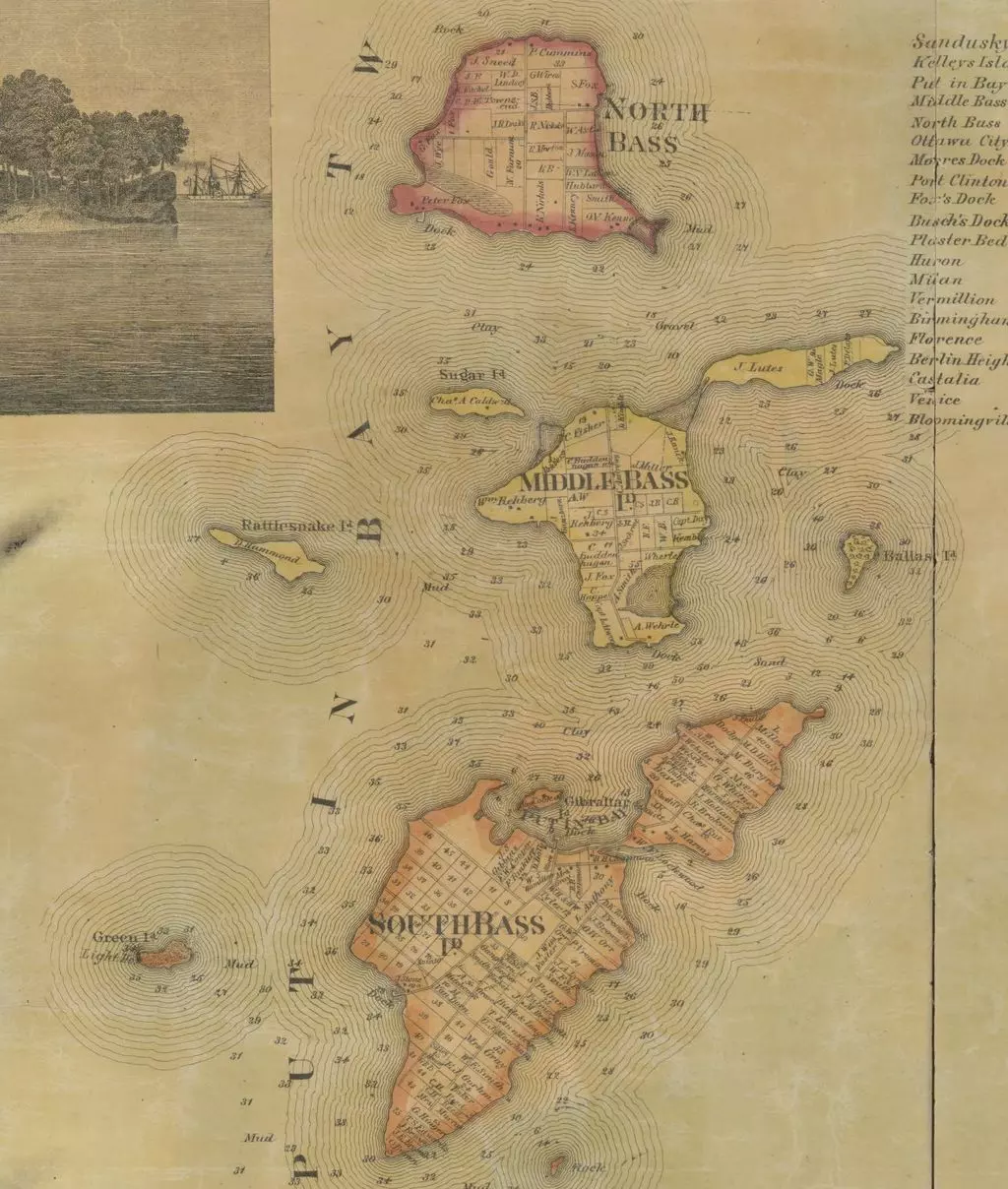 1863 Map of Middle Bass Island (Source: Library of Congress)
1863 Map of Middle Bass Island (Source: Library of Congress)
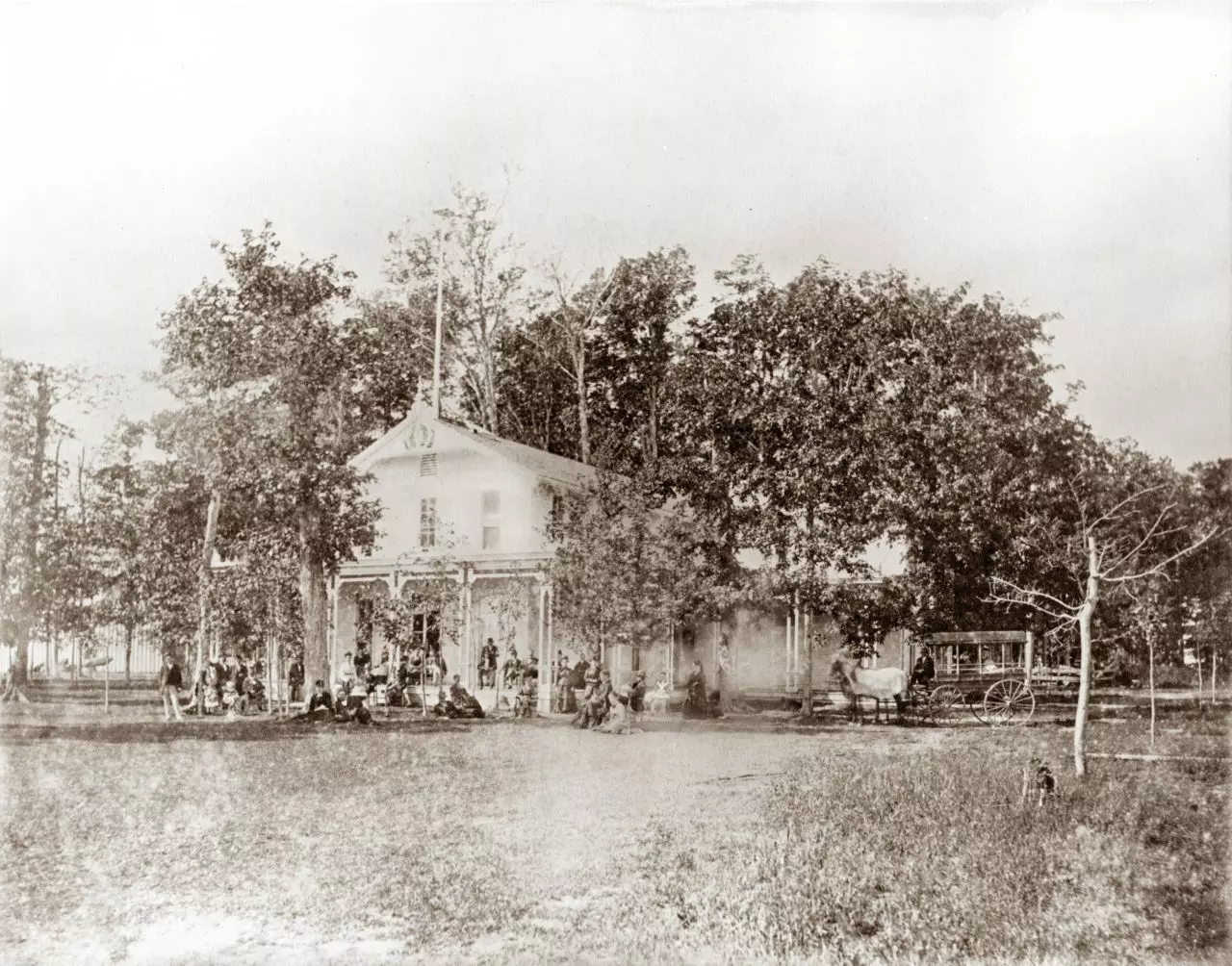 Original Club House Built 1874, cost of $2,340 (Source: Dr. Martin Taliak Collection)
Original Club House Built 1874, cost of $2,340 (Source: Dr. Martin Taliak Collection)
“From the experience of the members of the Association at the Club House during the summer of that year, the idea that the location chosen would be a very favorable one for their families and guests as a summer resort in connection with the purpose for which the Association was originally formed, became a conviction in their minds. With this view, the Club House having been finished and furnished in a very cheap manner inside, certain changes and improvements were decided upon, to better adapt the building and its surroundings to the new purpose. At a meeting of the Association, held at the office of Messrs Brown & Dodge, in the City of Toledo, on September 11, 1874, Mr. Edward O. Brown was appointed a committee of one to solicit a donation of $20 each from one hundred members to aid in carrying out the proposed changes and improvements. Mr. Harry J. Chase and Mr. Stephen H. Standart, were subsequently added to this committee, and the full subscription was obtained in the spring of 1875.
A number of members who seemed to be somewhat more zealous than the rest, purchased lots adjoining the Club House grounds, in 1874, from Mr. William Rehberg, on which to erect cottages, and Mr. Francis Pilgrim Isherwood built his cottage that year.
In 1875 the improvements contemplated the previous year were made, which included a small dock and boat house, wind-mill and water works, laundry, changes in and addition to Club House and furniture, and a donation to Mr. William Rehberg of $400 to aid in enlarging what is known as “Rehberg’s Dock.”
The improvements made since 1875 consist of the dock or breakwater outside the boat house, a new kitchen and the present boat house and bath house in 1879.
The Association deemed it to their interest to have full control of the grove and ground occupied by the Club buildings, purchased that portion of Middle Bass Island lying west of Grove avenue, and decided to incorporate the Association, at its annual meeting held March 1, 1880, adopted resolutions to that effect, and took the necessary steps to become an incorporated body under the Statutes of Ohio.” 2
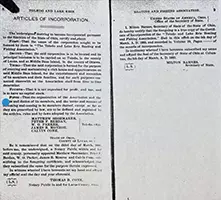 Articles of Incorporation, 1880, Middle Bass Club
Articles of Incorporation, 1880, Middle Bass Club
“The rapid growth in membership and popularity of the Association, made it evident that larger and better accommodations must be provided, but the annual assessments being limited to ten dollars (which could only be increased by an amendment to the Constitution at the next annual meeting), and it being very desirable to commence improvements in the fall of 1881 in order to complete them for the next season, Messrs. Edward O. Brown and Edward C. Bodman, in May 1881, drew up an agreement to be signed by the members whereby they pledged themselves to pay $100 extra building assessment, and to vote at the next annual meeting for an amendment that could enable the trustees to make such an assessment upon each member of the Association. By the first of September the agreement had been signed by a large majority of the members, when it was deemed expedient to commence the improvements at once. Several plans for building were obtained, and that known as the “Fallis Plan” was finally adopted at a special meeting of the Association held in Toledo on the 19th day of September, 1881. To the committee on Building and Grounds, viz: Matthew Shoemaker, Welcome Otis Parker and Calvin Cone, were added the names of Messrs. George Milmine, John M. Fiske, Sheldon Clark Reynolds and Elijah H. Norton, who were directed to receive bids and close a contract for the moving of the old and erection of the present handsome and commodious Club House. The contract was let to Messrs. Kerruish & Branderbury, the improvements to be completed June 1, 1882.” 3
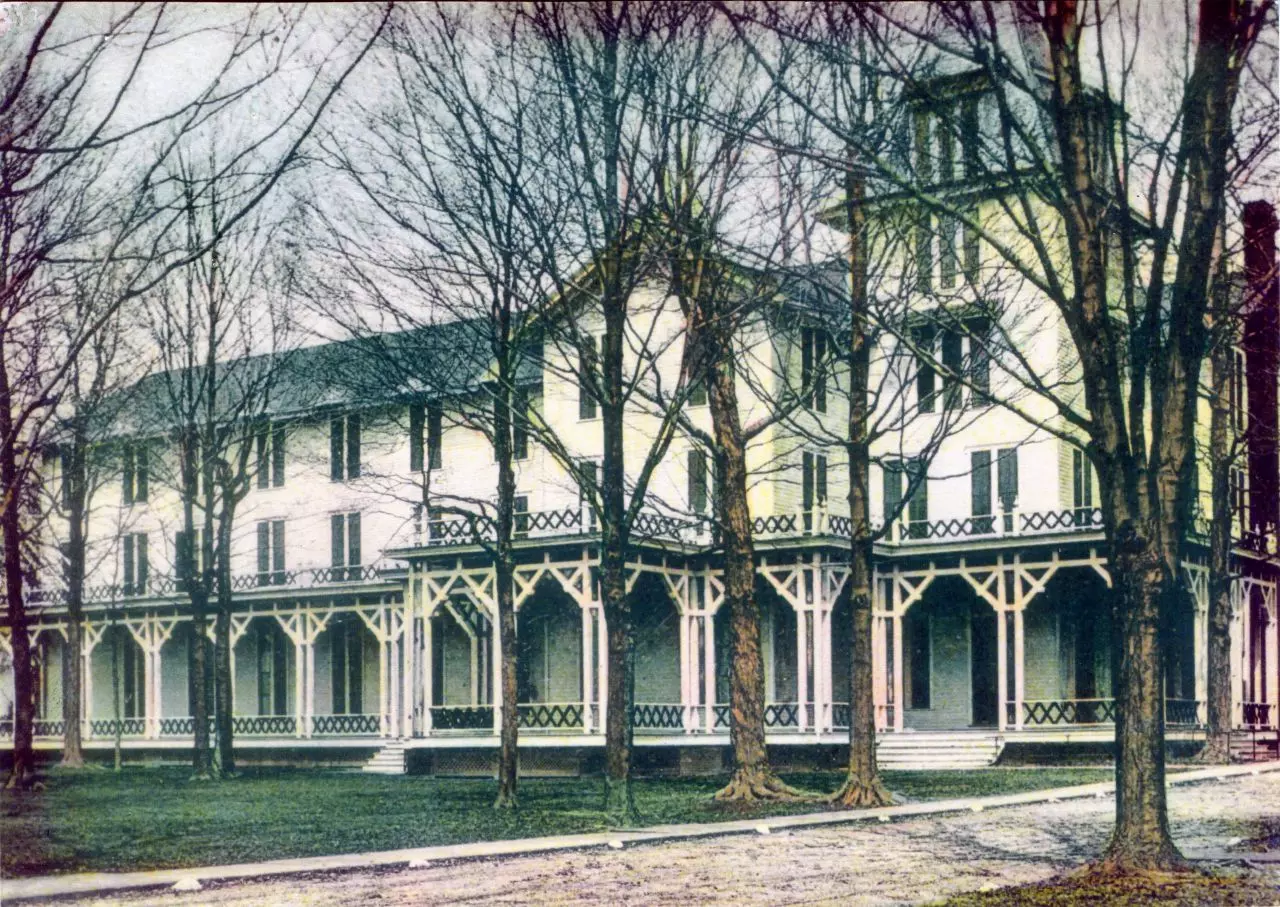 New Club House Built 1882, cost of $25,000 (Source: Dr. Martin Taliak Collection)
New Club House Built 1882, cost of $25,000 (Source: Dr. Martin Taliak Collection)
The Original Club House was moved to William Rehberg’s 1st Addition lots 35 and 36 and was called “Club Cottage.” The Club Cottage was used to house additional guests when the New Club House was at full capacity. In 1881, lots 35 & 36 were purchased from William Rehberg by the following members: Leander Solomon Baumgardner, Frederick B. Dodge, William Alonso Gosline, Epaphras Lord Barber, Marcus V. Barbour, Adam Burgert, Arthur D. Howell and George Douglass. Each member owned 1/8 portion undivided of each lot.
In 1882 a handsome chapel was built on the Association grounds (William Rehberg’s 2nd Addition, Lot 45) through the efforts of ladies of the Club who formed the Middle Bass Chapel Association. “The need of a Chapel, on Middle Bass Island, having been recognized by many of the members of the Middle Bass Club, a meeting of persons interested in the erection of such building, to be used for religious and literary purposes – was held at the cottage of Mrs. D. H. Mears on the 10th Day of August, 1881. The chapel was designed by E. O. Fallis, the same architect of the New Club House, and built by Joseph Brady. The chapel was built by obtaining donations from Club members and was formally dedicated on July 4, 1882. The chapel had its first church service and Sunday school on July 8, 1882. At the Annual Meeting of the Chapel Association held in the chapel on Monday, August 7, 1882 at ten o’clock it was announced, “The chapel is now completed and entirely free from debt as will be shown in the report of the Treasurer of the Association.” 4
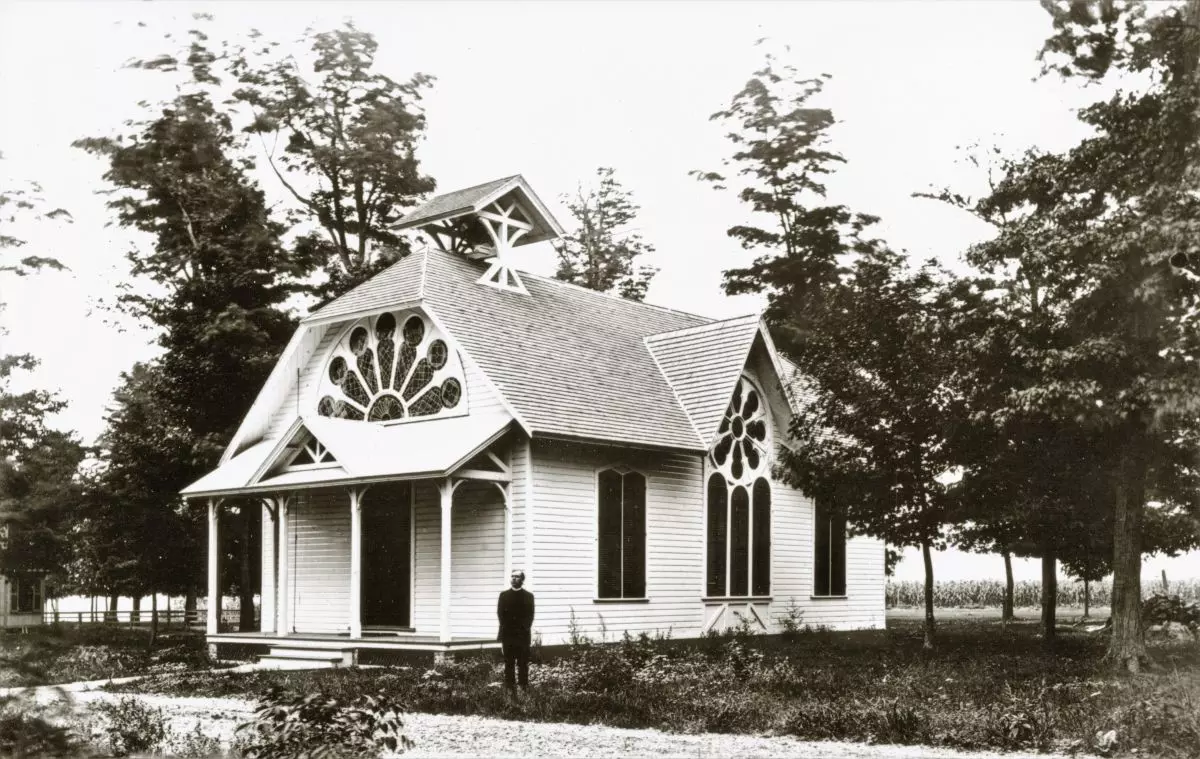 Chapel Built 1882, cost of $1,500 (Source: Dr. Martin Taliak Collection)
Chapel Built 1882, cost of $1,500 (Source: Dr. Martin Taliak Collection)
Related Exhibit: The Middle Bass Club Chapel Story
“In 1882 there were 23 member cottages providing accommodations for 120 people. An increased water supply being an urgent necessity, a fine steam pumping apparatus was purchased, a strong and substantial trestle, surmounted by a large iron tank sixteen feet height and sixteen feet in diameter, was erected, and affords an ample supply of water for the new Club House and cottages of the members.
In 1885, the Trustees decided to protect the Association’s property by the construction of a substantial sea wall. The work was commenced that year and was continued in 1886 and was wholly completed in 1887.
In 1886 the boat house dock, or break water, was extended out into the lake 114 feet.” 5
“The limit of membership (200) has been full for some time, the value now being $300 or a total of $60,000. The aggregate value of the property of the Association and of the cottages of members, is about $100,000 which is steadily growing through the increase in the number of cottages and other improvements. It is probably the most successful establishment of its kind on the Great Lakes. With good steamboat connections with Toledo, Detroit, Sandusky and Cleveland, it is made accessible from every direction, while the range for fishing, boating, bathing and other exercise, is exceptionally fine.” 6
A tennis court was constructed in 1891.
An ice house was built and filled during the winter of 1893. The water works burned in July 1893. Temporary works were improvised, on the Holly system, for the balance of that season.
The new works now in operation were built in 1894. The name of the organization was changed in 1894 to the Middle Bass Club. 7
“The property now owned by the Association, together with the twenty-three cottages (the private property of the members), and the handsome chapel built through the efforts of the ladies of the club represent a value of nearly $100,000, the whole constituting one of the finest private summer resorts on the great chain of lakes; and the members of the Association have good cause for congratulation in the possession of such a beautiful retreat from the busy cares of life. “ 8
“A bicycle track was constructed in 1897.” 9
1893 Sanford Fire Map of The Toledo and Lake Erie Boating and Fishing Association Grounds: Club House, Boat House and Member Cottages. (Source: Library of Congress)
A bowling alley was built in 1900. The gas plant was purchased from Mr. Herman Rehberg in 1900, and in addition to it, the pump-house was built by the Club the same year.
A new kitchen was erected in 1901. Amendments to the Constitution and By-Laws were adopted at the annual meeting in 1901, substituting the word “Club” in place of “Association” in these documents.
Extensive repairs and improvements were made in 1902.” 10
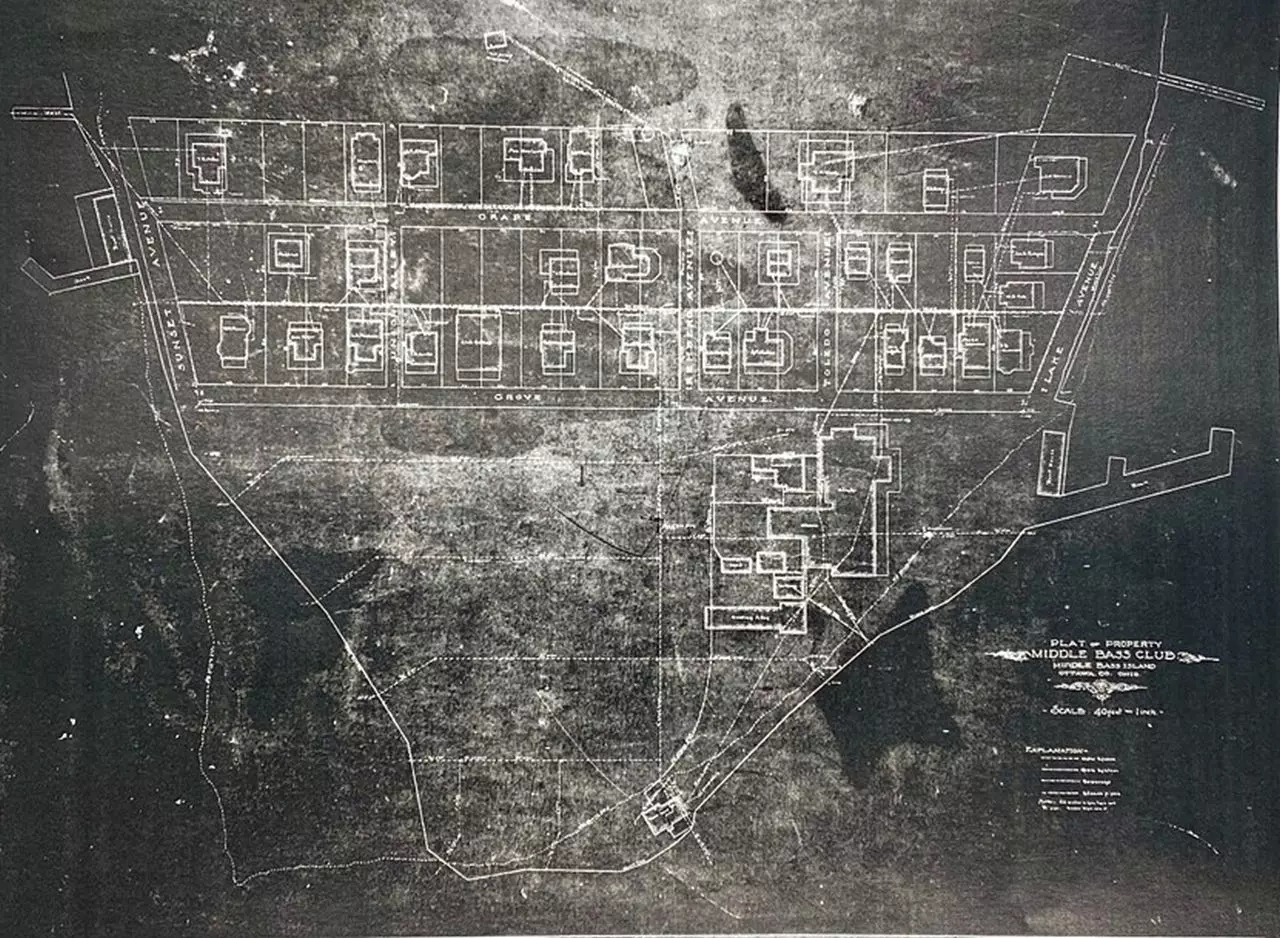 Plat of the Middle Bass Club, Approx. 1898-1904. (Source: Dr. Martin Taliak Collection)
Plat of the Middle Bass Club, Approx. 1898-1904. (Source: Dr. Martin Taliak Collection)
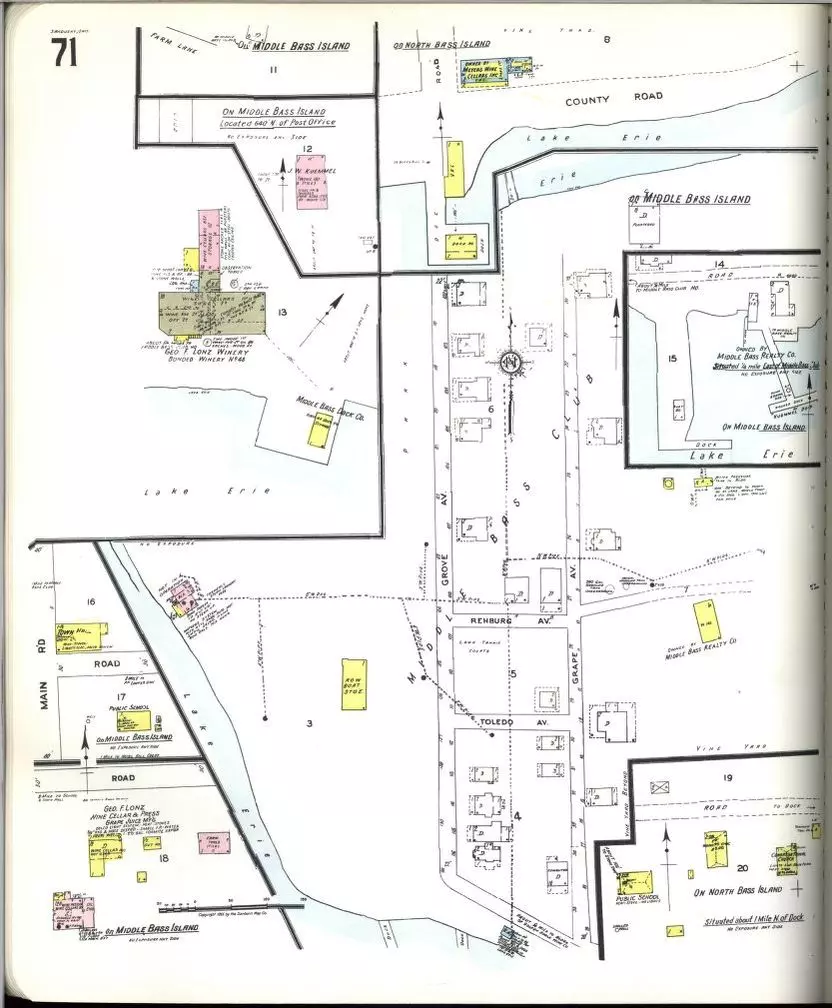 1905 Sanford Fire Map (Source: Library of Congress)
1905 Sanford Fire Map (Source: Library of Congress)
In the above 1905 Fire Map, there is no Club House building depicted in the Middle Bass Club’s Grove. Thus, we have to assume that the Club House burned down or was torn down after the 1898 Fire Map and another Club House was built in the same location after 1905.
In 1910 there were thirty member cottages. 11
Original Club Recollections:
“The Toledo and Lake Erie Boating and Fishing Association (later the Middle Bass Club) was extremely popular from the start; there never was quite enough accommodation for all of the members and when one of the big lake steamers would land at “Rehberg’s Dock” some of the gentlemen would send their small boys running ahead of them to book a room at the Club House. There was a strict rule that no one could have a room longer than two weeks if the Clubhouse were full up. The Original Club was during a period of the great steamers which plied the Lakes including “Chief Justice Waite,” “City of Toledo” and “Greyhound” from Toledo, the “Kirby” and the “Put-in-Bay” from Detroit and the “Arrow” from Sandusky.
Jimmy Johnson’s orchestra of Cleveland played there every afternoon of the season for 25 years beginning about 1897. During the dinner hour the orchestra played near the dining room. Captain Rutherford managed the Club and Mrs. Miller gave readings for the young ladies in English Literature. The young gentlemen would spend many of their evenings at the bench half way down the walk to “Rehberg’s Dock,” harmonizing “Moonlight Bay” or others of the classics. The Chapel hosted Sunday school classes, Sunday services as well as other literary and intellectual pursuits. Alfred Robyn, a talented composer from St. Louis played at the Chapel for hours. It was a time of formality in dress and actions. Swimming (women in stockings and skirts and men in full suits) was at a small stretch of beach where bath houses had been built. Swimming consisted of standing in whatever little surf there was and jumping up and down amid squeals from the ladies. Members and their families spent the evenings at “Rehberg Hall” where the members could enjoy a drink, dance in the ballroom, play cards and billiards or listen to music or plays held on the bandstand. From Rehberg Hall’s porch, you could also watch tennis on the courts below. In 1910, there were a few major tennis tournaments held on the grounds. In 1913, Perry’s Monument on Put-in-Bay was dedicated representing the 150th anniversary of the Battle of Lake Erie. The Club Members would often travel to Put in Bay to have lunch at the Hotel Victory (until it burned in 1919). The Original Club died slowly due to assessments in 1922, a lack of golf and facilities for automobiling.” 12
“The Middle Bass Club, located on the west end of Middle Bass Island and directly across from Put-in-Bay, is surrounded by unusual natural beauties. Sheltered from heavy storms by many islands, yet receiving from all sides the refreshing lake breezes, it is the ideal spot at which to spend your summer vacation. The sunsets, as seen from the Club grounds, are unsurpassed in their gorgeousness, and in themselves are worth a visit to the island. The Club formed forty-three years ago, has made a continuous effort toward comfort and health, and to this is due the fact that never in its history has there been a serious illness at the Club nor accident in its waters.
For older members it insures rest and diversion from the cares and worries of business and housekeeping’; for the young people, all types of amusements and sports; for the children – a wonderfully healthful place to romp and play without danger.
With all isolation and freedom form the noise and wear of the city, it is far more accessible than most watering places – and each member finds that instead of the loneliness of the usual summer resort, he spends a delightful and beneficial vacation among new and hospitable acquaintances.
There is excellent boating and bathing, under the supervision of a competent care taker, which insures full protection to those participating in these healthful amusements.
During the fishing season the followers of Isaac Walton have the wonderful advantage of being in the very heart of the famous fishing grounds of Lake Erie, and the Club boats make them very accessible.” 13
Interim Period (1923-1925)
“During the Interim Period, Mrs. Smith rented the Club House and ran it as a resort hotel.” 14
Prohibition (1920-1933)
Prohibition Recollections:
“During Prohibition days, members of the New Club never ran out of drink because the friendly Canadian shore was always quite close. There was a well-established routine. Club members would organize an expedition, hire a speedboat and head for Pelee Island. Once there you had but to spend a dollar, register at a Canadian Hotel, and for purposes of visiting the liquor store, you were then a full-fledged Canadian resident. The store was quite handy to the boat landing.” 15
Two couples from the Middle Bass Club (who shall remain anonymous) found a clever way to go to Pelee Island, Canada in a speedboat for a “booze run” during Prohibition. They asked a pregnant woman to sit in the front seat of the boat, wearing her “Mother Hubbard” style maternity dress. After purchasing the booze at Pelee Island, the contraband alcohol was placed on the floor of the boat hidden underneath the pregnant woman’s “Mother Hubbard” maternity dress. At that time, it was well understood that a Customs Agent would never dare to ask a pregnant lady to stand if the boat was pulled over by the authorities… 16
One Club member (who shall remain anonymous) carried a glass flask in his back pocket during Prohibition while vacationing at the Middle Bass Club. Unfortunately, one time when he was swinging on a tree playing with the children, he fell on his backside and broke the glass flask; he had to go to Put-in-Bay to get his backside stitched up… 17
New Club (1926-1939)
“The New Club consisted of descendants of old members; especially the Walbridges, Bakers, Berdans, Beckwiths, Baumgardners, Kinseys, MacAbees, Brooks, Mennels, Logans, Hixons, Wrights, Straters and Harold Norton. Most of the New Club members were from prominent Toledo families. The tempo of life had changed significantly. Morals, manners and dress were all far more casual. Hard drinking and informality were probably the hallmarks of this younger generation just as a heavy and somewhat pompous stiffness, formality and correctness was the hallmark of the Old Club. Back in 1928 all the young people were well-to-do and everyone owned a speedboat buzzing around at great speed over the lake and accomplishing just nothing. Swimming consisted of changing into swimsuits then walking down to the Club dock to dive right into the lake.” 18
“Circa 1926-1928 some of the cottage owners anted up enough money to buy the Old Middle Bass Hotel, grounds and Rehberg Hall. The reason was there were no kitchens in the cottages and the hotel was the only place to eat. Rehberg was the German family who actually lived year round and ran the winery; mother told me stories of the small catholic school operated there and the anti German sentiment during WWI towards the Rehbergs.
In the 1890s the hotel had been a big summer resort and flourished until WWI. The attempted revival was moderately successful but there was not a Middle Bass Club per se.
Alphonse Mennel (my great grandfather) was NOT one of the buyers; the Stranahan family from Toledo ws never involved with the enterprise. Most of the cottage owners were from Ohio (Toledo, Cleveland, Cincinnati) and one from Indiana. The day trip steamers went to Put-in-Bay not Middle Bass; the boat’s names were “Greyhound” from Toledo, “Put-in-Bay” from Detroit, “City of Cleveland” from Cleveland and “Chippewa” from Sandusky. The “Chippewa” carried supplies to and from North Bass, Middle Bass and South Bass Islands.
There were no permanent houses on the so called Club property.
By the late 1930s, early 1940s the organization ceased to function and only one of the cottage owners returned after 1945.” 19
The Middle Bass Club was a family place in the late 1920s, early 1930’s. Families, mostly from Toledo, shared summers together; the Club members were a close knit group with the kids referring to the adults as “Aunts” and “Uncles” even though they were not actual relations. The Members would ride the Old Erie Isle ferry from Port Clinton to Middle Bass and get off at Rehberg Dock. The ferry had penny slot machines on the lower level and a bar on the upper level. Kids would be given a roll of pennies to play the slot machines while the parents would go upstairs to the bar to have a drink. Families would take their Model T cars over on the ferry so they could drive to their cottage or the Club House as well as visit all parts of Middle Bass Island.
Most cottages had added in a small kitchen, basically a sink and a burner, so breakfast could be eaten at home. Lunch and dinner were to be eaten with other members in the Club House. The cottages had big claw foot bathtubs where you turned on a heater (kerosene?) to get hot water. People spent little time in their cottages; they were mostly at the Club House or outside.
Members and guests signed into a Guest Book at the reception desk when they arrived at the Middle Bass Club so that their meals and rooms could be charged to the members appropriately. The reception desk had a glass case where the children could buy candy and adults could buy cigarettes without having to travel to Put-in-Bay to purchase them.
Behind the reception desk, there was a staircase which led to the guest rooms. Upstairs, the guest rooms (which all had a view of Lake Erie) had iron beds with brass knobs. The mattresses were placed on top of a “flat” metal spring.
In the parlor on the main level of the Club House, there were wicker love seats where the seats faced opposite directions, not the traditional love seat that has seats side by side. This type of love seat was known as a conversation bench where members could have private conversations without anyone in the room overhearing their discussion.
The Club House had two slot machines that were in the hallway just past the reception desk toward the dining room.
In the Club House dining room, the children sat together at round tables while the adults sat at long tables. It was elegant with tables adorned in white linen tablecloths. The manager at the Club House realized that the children’s table was always dirty, and it was costing the Club a lot of money to launder the tablecloths after each meal, so he came up with an idea of how to reduce the laundry bills. He asked all the parents to give their children an allowance. If a child made a “spot” on the clean tablecloth, he or she had to cover up the entire mess with coin(s) from their allowance. Children under five used pennies, children under ten used nickels and teenagers used dimes and quarters. The manager’s idea really made the children eat carefully because they wanted to save their allowance to buy candy or play the slot machines.
The Club House had a big front porch which faced south, toward Put-in-Bay and the Club Dock. Club members enjoyed sitting in rocking chairs on the porch enjoying the lake breeze.
The Boat House was no longer in existence, but the Club Dock was still used for small boats and swimming. Club Members enjoyed swimming off the Club dock and would also swim at “Sandy Beach” on the east side of the island because the shore around the Middle Bass Club was very rocky.
The Chapel was still in good shape, but it was “deserted” and no longer used for church services. There was a bible open on the pulpit and hymnals in the pews. The children would play inside the chapel on rainy days but were extremely careful to keep the chapel as they found it.
Rehberg Hall and some cottages were “deserted.” The children enjoyed exploring the “haunted houses” and playing inside them even though their parents were concerned that they might get hurt. The children enjoyed the island: swimming, sailing, fishing, looking for beach glass, hunting snakes, putting on plays and concerts and exploring the attics of old cottages with trunks filled with dress up clothes. The adults enjoyed swimming and diving off the dock, sailing, fishing and enjoying alcohol (especially during Prohibition).
Excursions to Put-in-Bay were common to explore the caves, ride the carousel, go to the roller rink or bowling alley, go to Jim’s Place to hear the piano player or get something to eat. 20
Middle Bass Club (Present)
The Middle Bass Club today contains twenty six family cottages of which the majority were the original structures built on the William Rehberg Subdivisions over a hundred years ago. The oldest cottage built by Francis Pilgrim Isherwood was completed in 1874 at the time the Original Club House was built within the Toledo and Lake Erie Boating and Fishing Association. Francis Pilgrim Isherwood’s cottage and the Original Club House were moved from their original, prominent locations to make way for a bigger, grander Club House and a larger, more ornate member cottage around 1882. Thankfully, the oldest cottage of Francis Pilgrim Isherwood is preserved and enjoyed today by a family at its location on Grape Avenue.
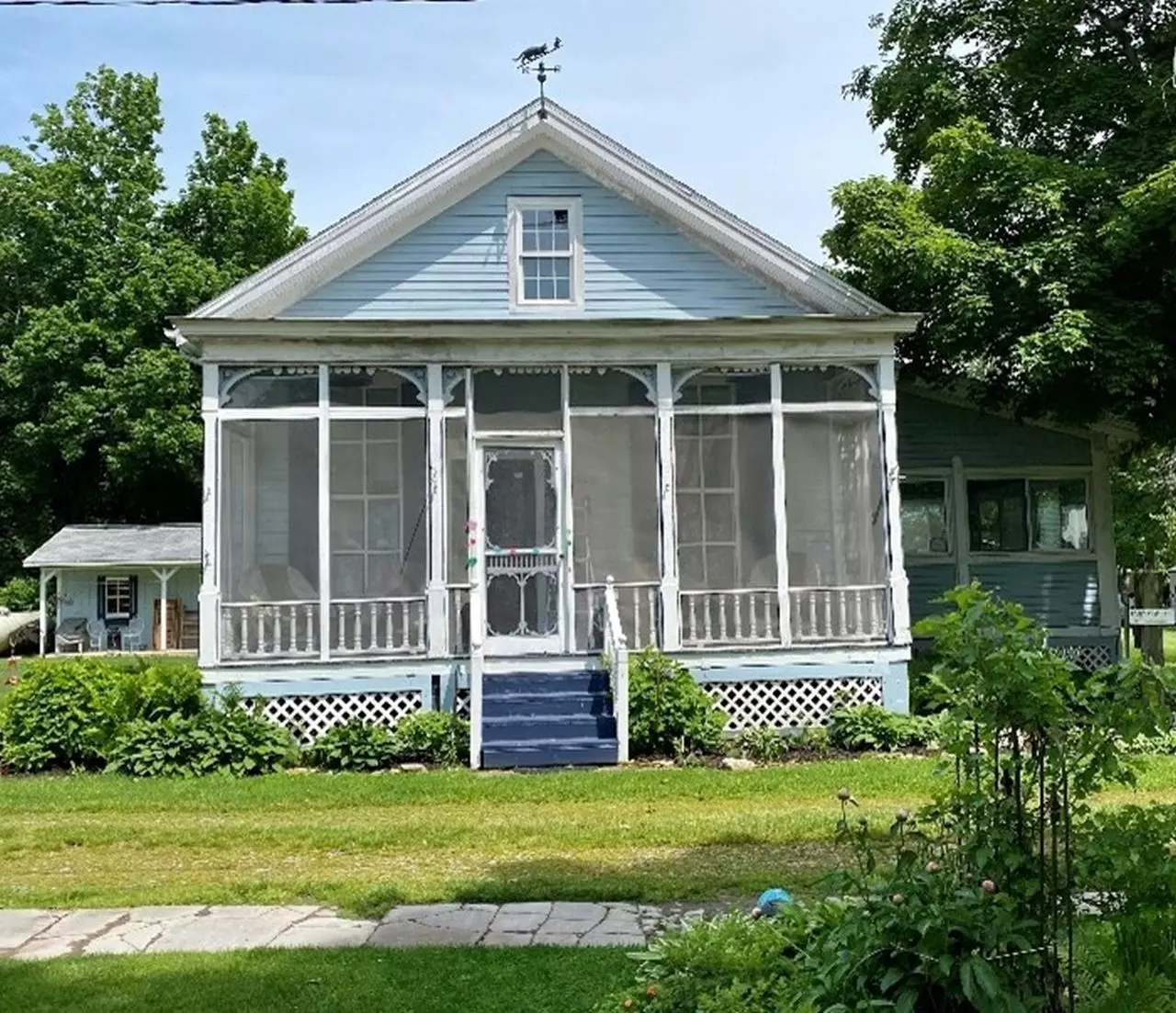 First Middle Bass Club Cottage, as it looks today in 2021. Photograph by Marie Rader
First Middle Bass Club Cottage, as it looks today in 2021. Photograph by Marie Rader
Unfortunately, both the Original and New Club Houses were eventually torn down so the location in the Grove (New Club House) and William Rehberg’s 1st Addition lots 36 and 37 (Original Club House) are empty. The “Grove” where the Club House once stood is a park with access to Lake Erie to the south, west and north sides. It’s remains an amazing place from which to view the Lake Erie sunsets and spectacular sky post sunset.
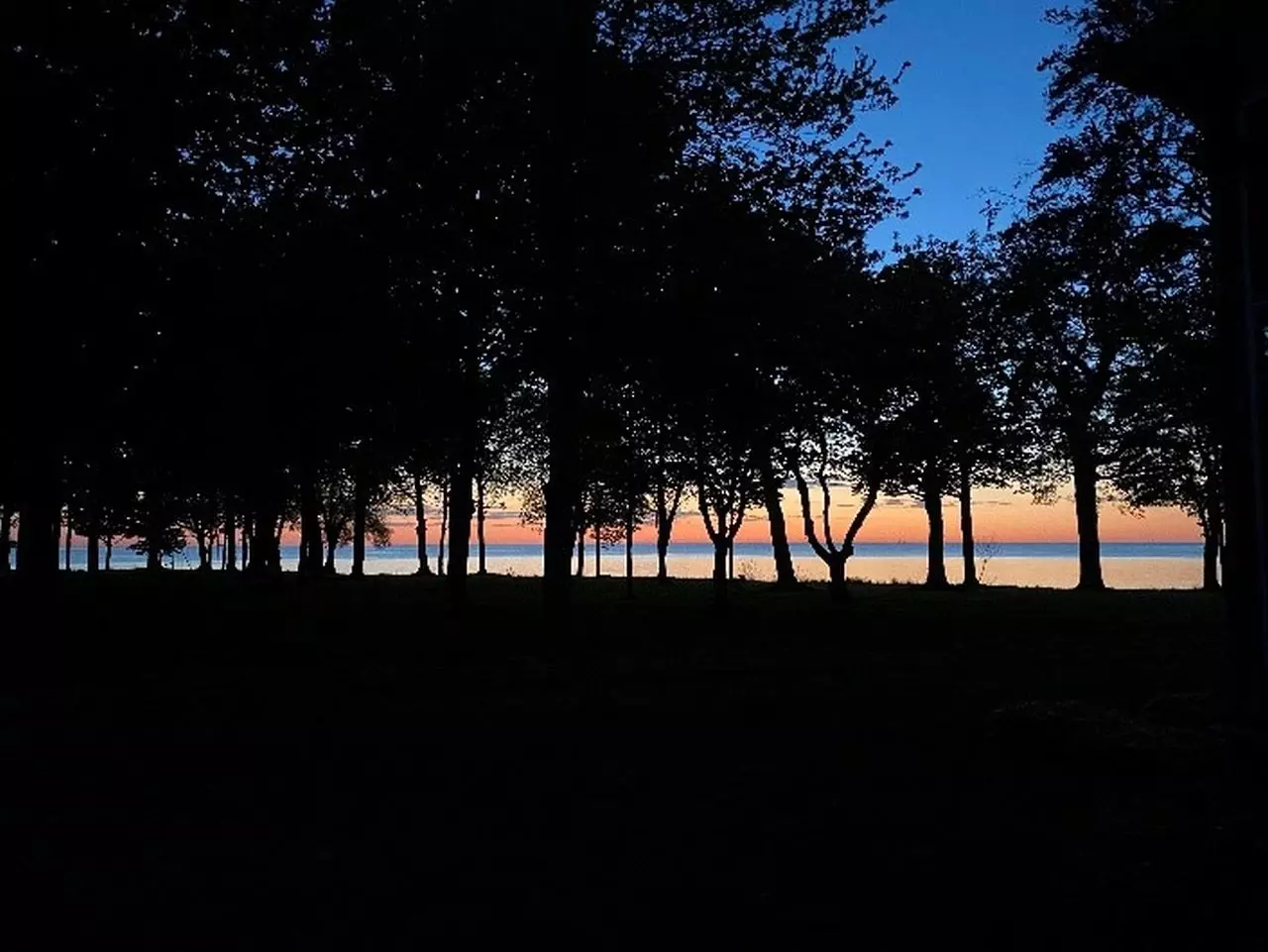 Sunset View from the Middle Bass Club’s Grove, 2021. Photograph by Marie Rader
Sunset View from the Middle Bass Club’s Grove, 2021. Photograph by Marie Rader
The only hints of the past life of the Toledo and Lake Erie Boating and Fishing Association, besides member cottages, are pieces of the Club Dock and seawall (that only show when the Lake Erie water is low), concrete patches in the Grove from the Club House, big sandstone sidewalks along Grove Avenue and Grape Avenue, cottage sidewalks that stand alone in the grass because a cottage burned or was torn down and a few pieces of the Delco system.
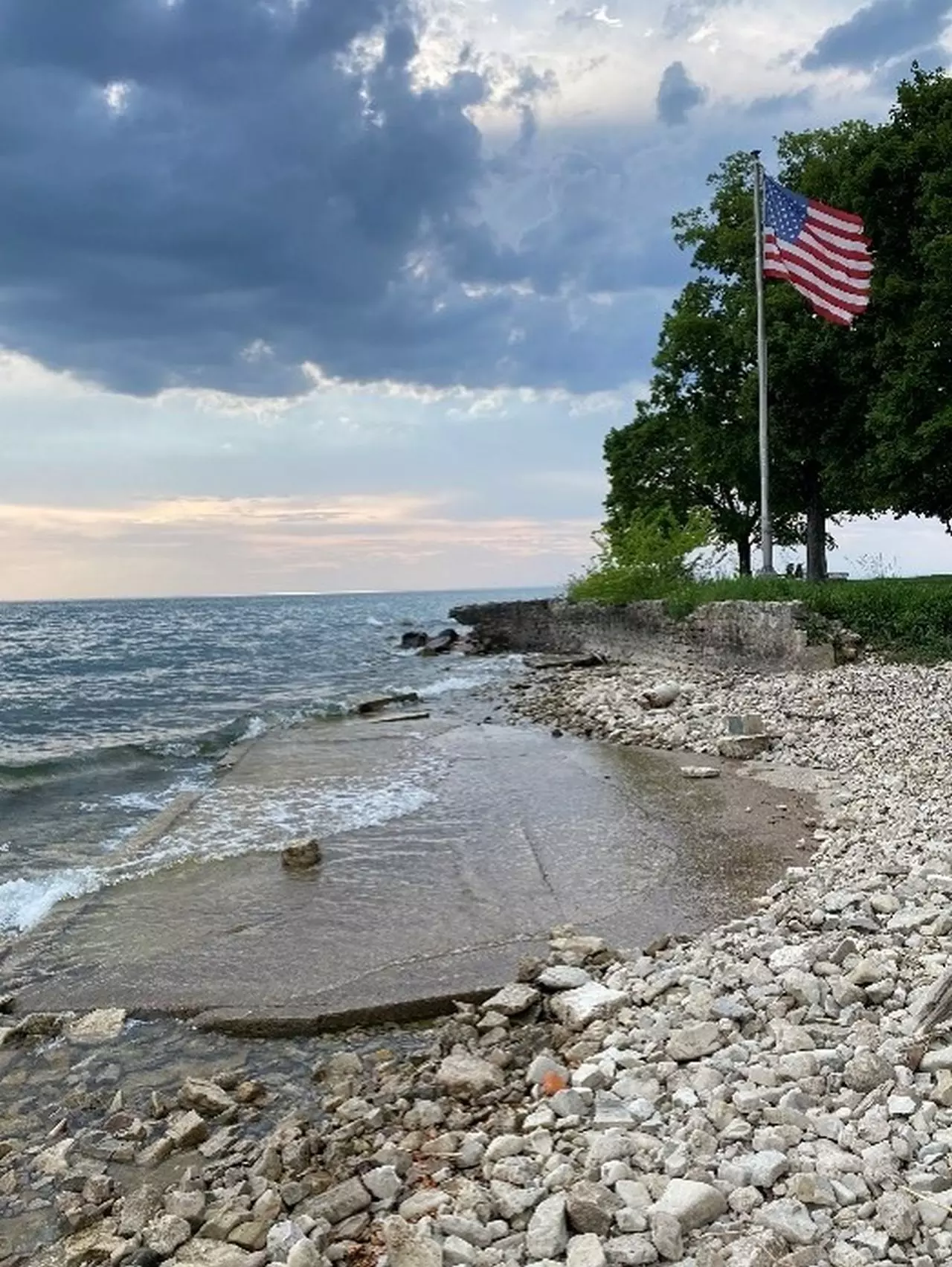 Original Middle Bass Club Dock sections, as seen in 2021. Photograph by Marie Rader
Original Middle Bass Club Dock sections, as seen in 2021. Photograph by Marie Rader
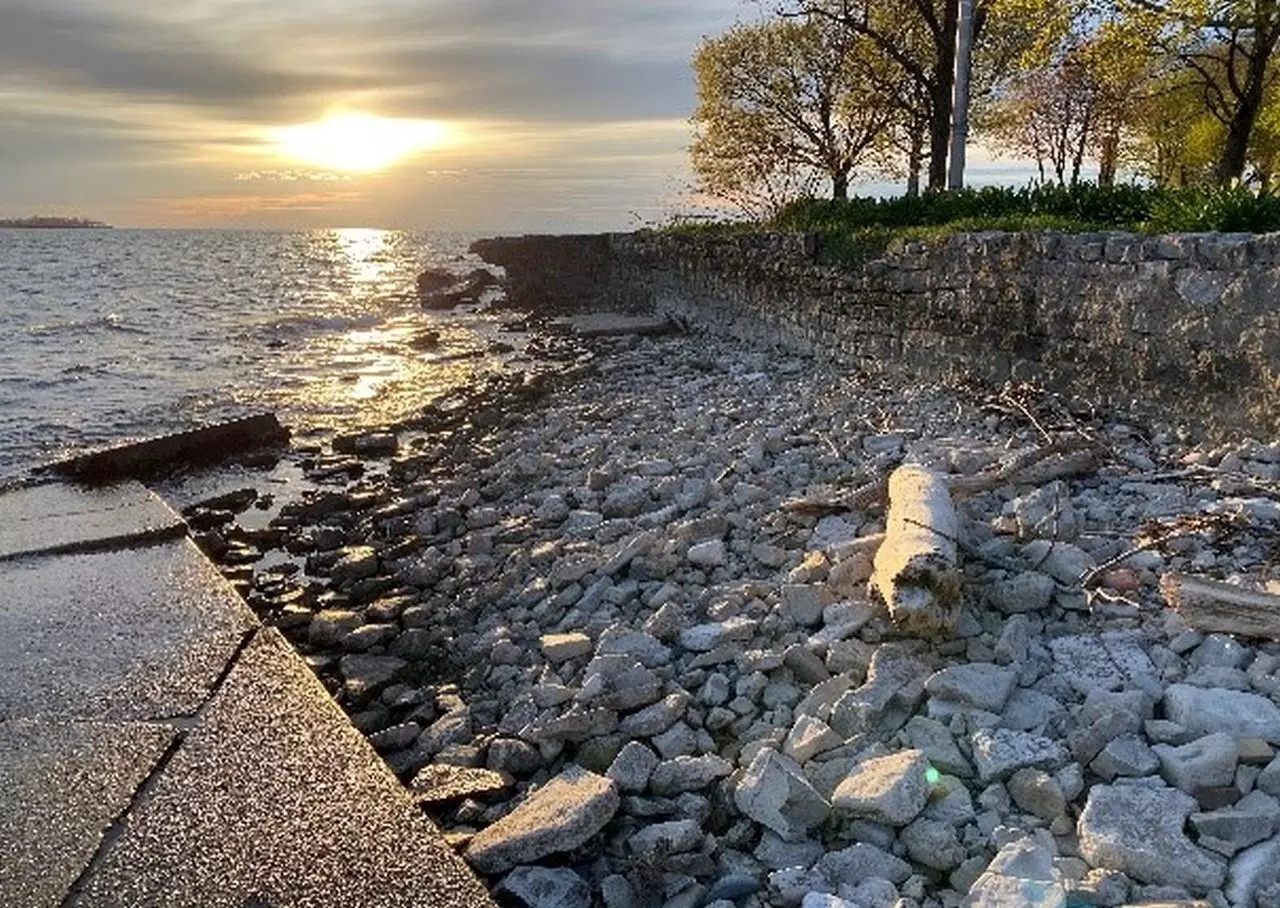 Midde Bass Club Dock and Sea Wall pieces, as seen in 2021. Photograph by Marie Rader
Midde Bass Club Dock and Sea Wall pieces, as seen in 2021. Photograph by Marie Rader
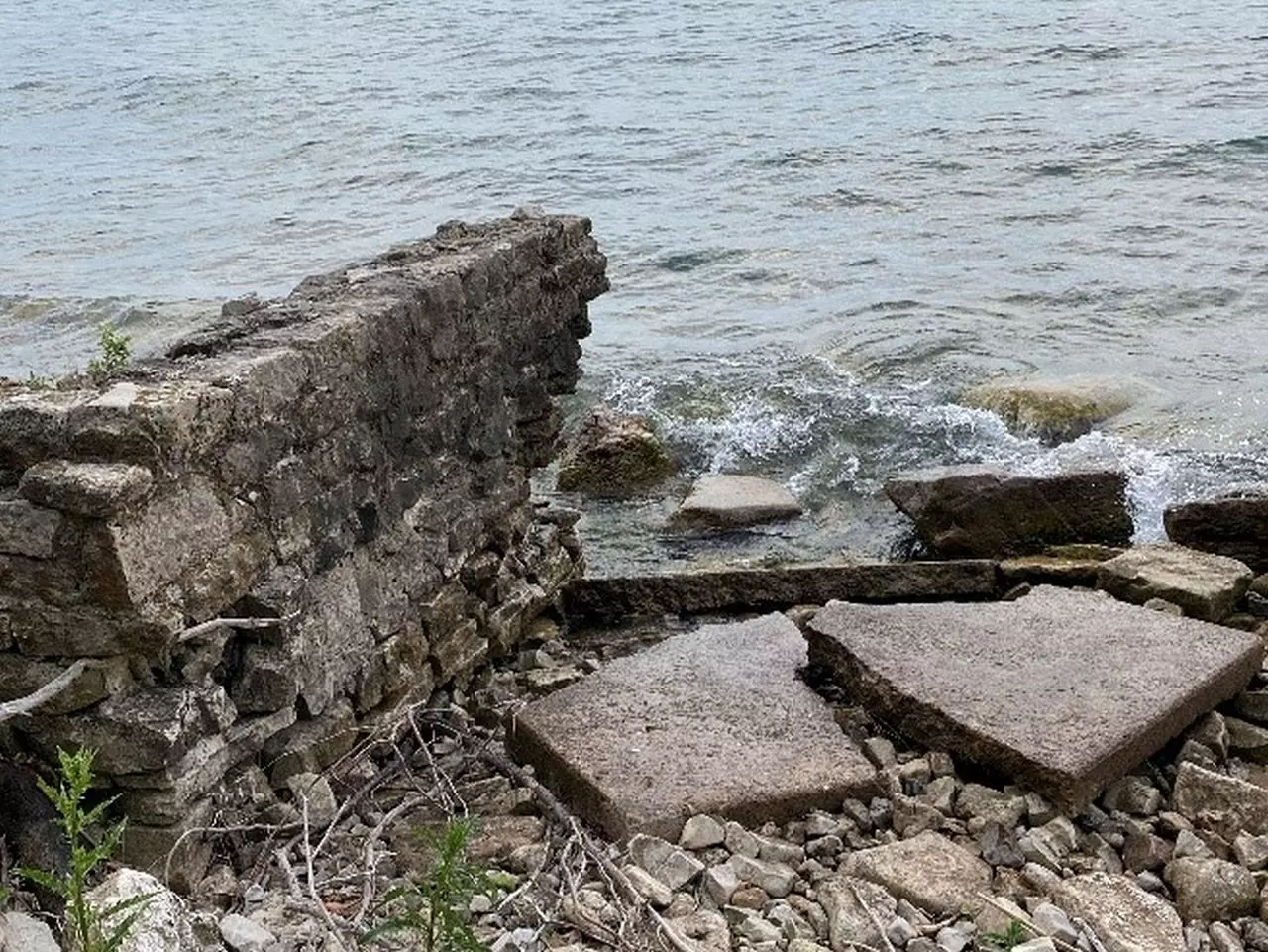 Middle Bass Club Dock and Sea Wall pieces, as seen in 2021. Photograph by Marie Rader
Middle Bass Club Dock and Sea Wall pieces, as seen in 2021. Photograph by Marie Rader
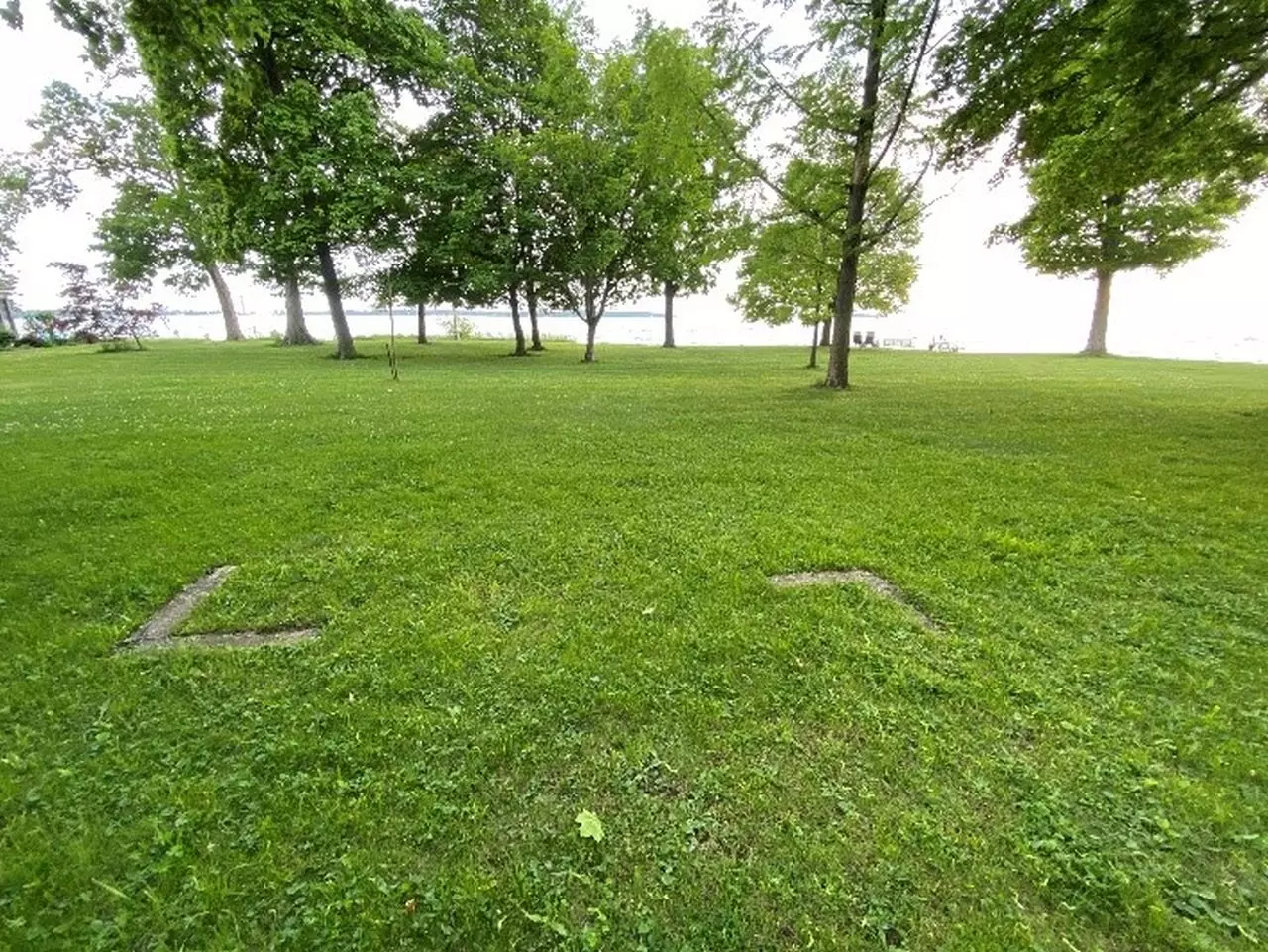 Middle Bass Club House foundation pieces in the Grove in 2021. Photograph by Marie Rader
Middle Bass Club House foundation pieces in the Grove in 2021. Photograph by Marie Rader
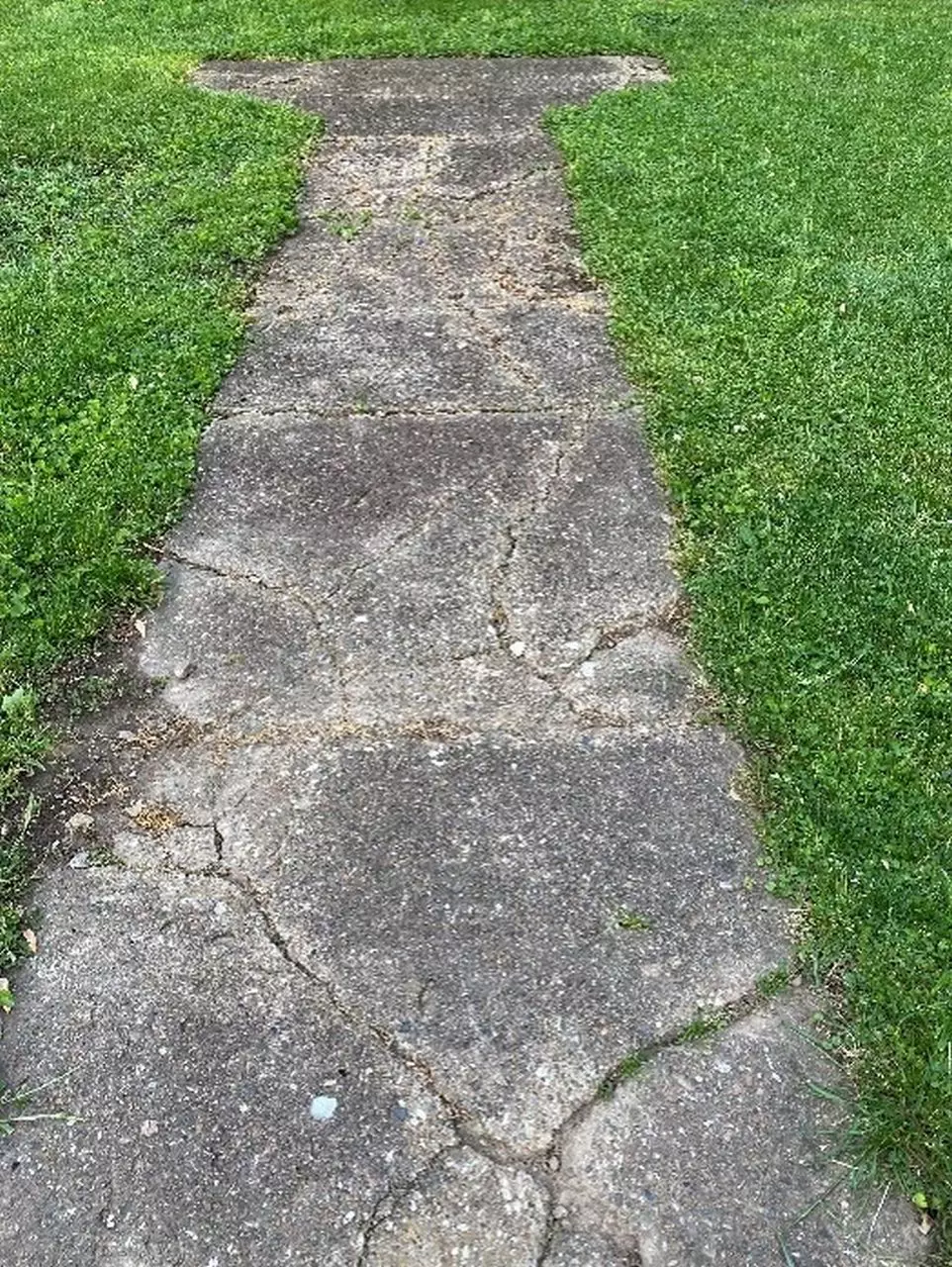 Middle Bass Club walkway in 2021 leading to a cottage that once existed but decades prior it was either torn down or burned. Photograph by Marie Rader
Middle Bass Club walkway in 2021 leading to a cottage that once existed but decades prior it was either torn down or burned. Photograph by Marie Rader
Thankfully, one original structure remains on the Middle Bass Club grounds: a brick Pump House built in 1900 sits on the western most point in the grove. Because of the Pump House’s location, it’s the first thing on Middle Bass Island that you see when you ride over on the Miller Ferry to Middle Bass Island…
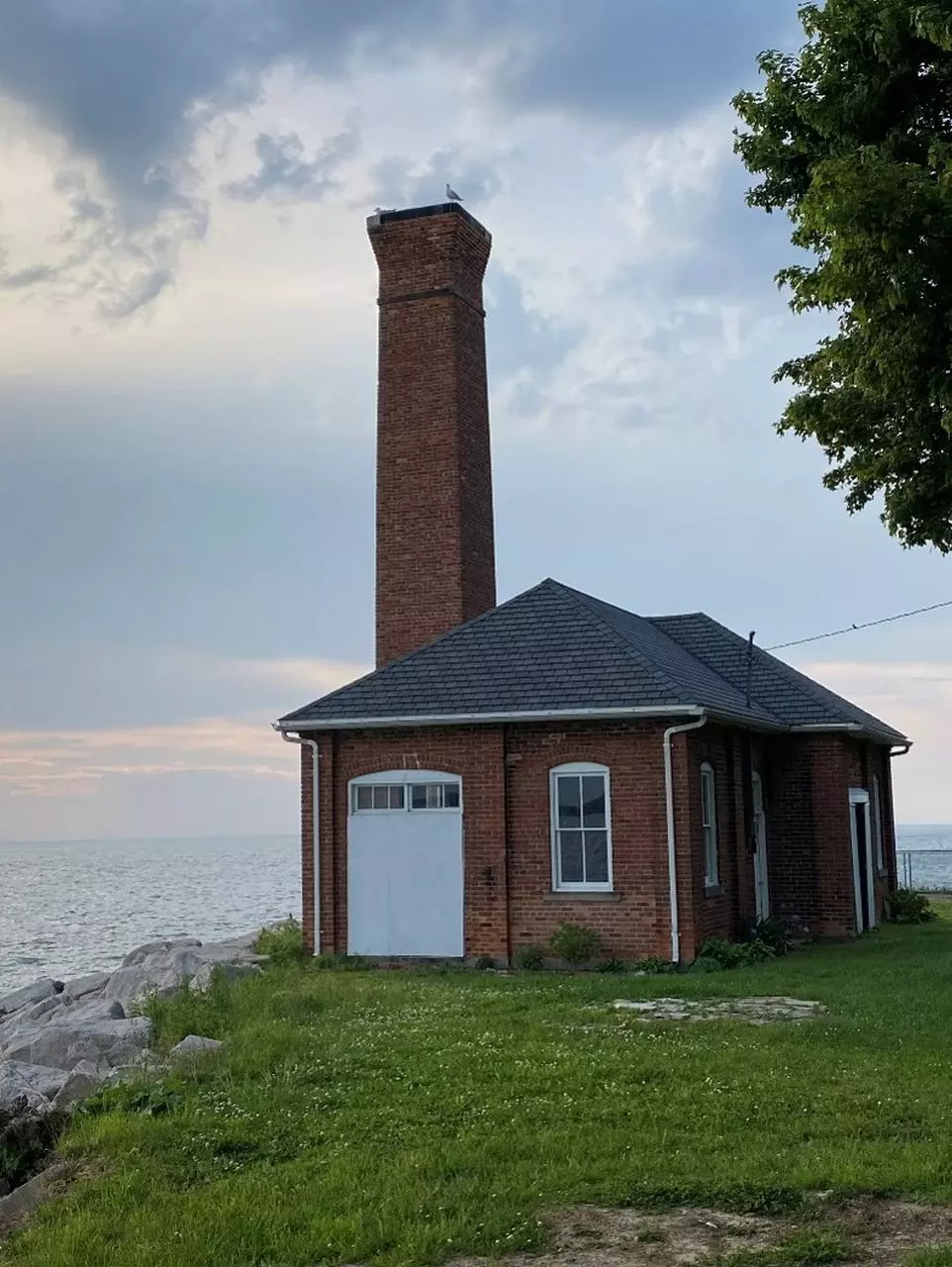 Middle Bass Club’s Pump House in 2021. Photograph by Marie Rader
Middle Bass Club’s Pump House in 2021. Photograph by Marie Rader
Being a present member of the Middle Bass Club, I completely understand why the Toledo and Lake Erie Boating and Fishing Association chose this location; it is an incredibly special place to many people: past, present and future.
Video: Unearthing the Toledo and Lake Erie Boating & Fishing Association's Club Houses, 2023
In this video, archaeologist Dr. Jarrod Burks, Director of Archaeological Geophysics at Ohio Valley Archaeology, Inc., describes where the Lake Erie Boating & Fishing Association's 1st and 2nd Club Houses were located on Middle Bass Island in Lake Erie.
Credits: Dr. Jarrod Burks, Brian Betz, Laura Whitney Reitz, Dr Martin Taliak & Marie Rader
Aerial videos
Middle Bass Club from the air, 2019. Credit: Todd Rader
Middle Bass Club Drone footage, 1 of 3. Credit: Charlie Reitz
Middle Bass Club Drone footage, 2 of 3. Credit: Charlie Reitz
Middle Bass Club Drone footage, 3 of 3. Credit: Charlie Reitz
References
1. Articles of Incorporation and Constitution and By-Laws of the Middle Bass Club, 1895.
2. Ibid.
3. Ibid.
4. Middle Bass Chapel Association Record Book.1881-1908.
5. Constitution & By-Laws, The Middle Bass Club, Historical Sketch,1902.
6. Clark Waggoner. History of the City of Toledo and Lucas County, Ohio. New York: Munsell & Company, 1888.
7. Constitution & By-Laws.
8. Articles of Incorporation and Constitution and By-Laws of the Middle Bass Club, 1895.
9. Constitution & By-Laws.
10. Ibid.
11. The Middle Bass Club Compendium of Newspaper Articles and Historical Documents 1874-1950, Dr. Martin Taliak.
12. Edward L. Strater. "A Short History of the Middle Bass Club, 1874-1964." In The Middle Bass Club Compendium of Newspaper Articles and Historical Documents 1874-1950, Dr. Martin Taliak. Note: same source for 12, 14, 15, 18. It's an article within Dr. Taliak's Compendium book.
13. Lisa Fine Collection, Circa. 1920.
14. Strater, "A Short History of the Middle Bass Club, 1874-1964."
15. Ibid.
16. Maggie Kinsey Wood, "Oral History" documented by Marie Demer Rader (2018-2021). Note: same source for 16, 17, 20 (2018-2021).
17. Ibid.
18. Strater, "A Short History of the Middle Bass Club, 1874-1964."
19. Margaret Mennel, Personal Diary (2009-2010), received from her son David Bailey in an email that was "quoted."
20. Maggie Kinsey Wood, "Oral History."
The Middle Bass Club Chapel Story
By Marie Demer Rader, February 2022
I decided to write about the Middle Bass Club Chapel after I received the 1881 handwritten Records Book of the Middle Bass Chapel Association from my Middle Bass Club neighbor and research colleague Dr. Martin Taliak. Then, the Chapel came alive when Middle Bass Club member Maggie Kinsey Wood told me she was inside the Chapel in the early 1930s. Next, I realized that few people knew that the Middle Bass Club had a Chapel let alone why it was built, who built it, when was it built, where it was located, what they used it for and how it was funded. Thus, I hope to safeguard the Chapel history by sharing its story since the building no longer exists in the Middle Bass Club.
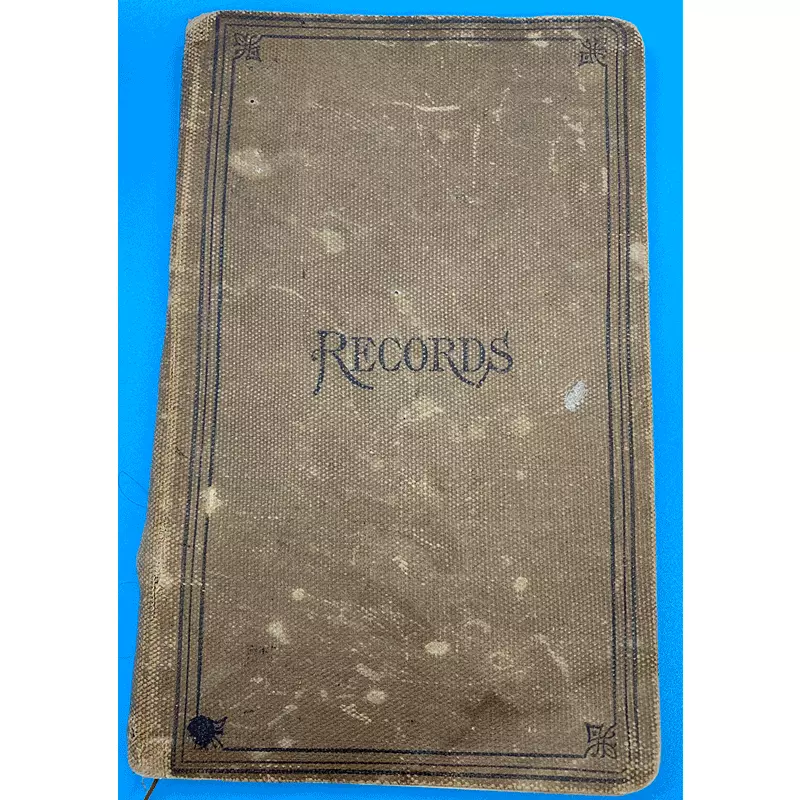 Middle Bass Chapel Association Records Book from the Taliak Family Personal Collection (multiple pages). Photo by Marie Demer Rader, Summer 2021
Middle Bass Chapel Association Records Book from the Taliak Family Personal Collection (multiple pages). Photo by Marie Demer Rader, Summer 2021
![]() Middle Bass Chapel Association Records Book from the Taliak Family Personal Collection
Middle Bass Chapel Association Records Book from the Taliak Family Personal Collection
When the idea of building a Chapel turned into the creation of the Middle Bass Chapel Association in 1881 - 1882, the Toledo and Lake Erie Boating and Fishing Association (now called the Middle Bass Club) was growing by leaps and bounds and was extremely popular with members and their families. In 1881 they boasted 189 wealthy, influential members. The membership consisted mainly of people living in Toledo, Ohio but also included members from the following Ohio cities: Bellevue, Bryan, Columbus, Cincinnati, Findlay, Fostoria, Fremont, Green Springs, Kent, Lancaster, Norwalk, Ottawa, Sandusky, Springfield, Upper Sandusky and Wauseon. Outside Ohio, members originated from: Baltimore, Maryland; Battle Creek, Michigan; Buffalo, New York; Chicago, Illinois; Denver, Colorado; Henderson, Kentucky; Indianapolis, Indiana; Louisville, Kentucky; St. Louis, Missouri and San Francisco, California. A link to the 1881 Membership List is included below.
In 1881, due the rapid growth in membership and popularity with the families, the membership decided to enhance and upgrade the accommodations within the Middle Bass Club. Additional Club House guest rooms as well as more refined accommodations were desperately needed. To build the grandiose “new” Club House, the Middle Bass Club commissioned renowned Toledo architect E. O. Fallis to design the building. The “new” Club House was built on the site of the original Club House in the Grove (southwestern portion of the western tip of Middle Bass Island). Unfortunately, the “new” Club House does not exist today; the Grove where it was located is now a private park owned by the Middle Bass Club. The original Club House built in 1874, now called “Club Cottage,” was relocated from the Grove to William Rehberg’s 1st Addition: lots 35 & 36 on Grove Avenue to make room for the new, swankier Club House. Eight members purchased 1/8 share of lots 35 & 36: Epaphras Lord Barber, Marcus V. Barbour, Leander Solomon Baumgardner, Adam Burgert, Frederick B. Dodge, George Douglass, Arthur D. Howell and William Alonso Gosline Sr. “Club Cottage” provided additional accommodations when the “new” Club House was full. “Club Cottage” does not exist today; the empty lots are owned by the Richardson and Rader families.
In the spirit of upgrading the Middle Bass Club amenities, member Francis Pilgrim Isherwood moved his “tiny” cottage (the first one built in the Middle Bass Club) from Rehberg’s Original Subdivision lot 11 on Grove Avenue to William Rehberg’s 3rd Subdivision, lot 54 on Grape Avenue. Francis Pilgrim Isherwood then decided to build a larger, fancier cottage on lot 11 (this was a prime location right across the street from the “new” Club House). The original Isherwood cottage on Grape Avenue exists today and is owned by the Daniel family. The “bigger” Isherwood cottage located on Grove Avenue exists today is owned by the Fine family. According to Middle Bass Club records, in 1882 besides the “new” Club House, there were 23 member cottages providing accommodations for an additional 120 people. Cottages that existed in 1882 based upon my research are depicted in the chart below.
Since many families wanted to spend a lot of time at the Middle Bass Club, a group of Middle Bass Club members decided that a Chapel needed to be built on the Middle Bass Club grounds to offer regular church services, Sunday school for the children and occasionally host educational, literary and scientific programs. Thus, the Middle Bass Chapel Association committee was formed in August 1881. The Middle Bass Chapel Association was comprised of ladies who were the wives or daughters of Middle Bass Club members. While constructing the Chapel building, the Middle Bass Chapel Association worked with an elected group of gentlemen from the Middle Bass Club appropriately named the Building Committee. The Building Committee (with input from the Middle Bass Chapel Association) worked with the “new” Club House architect, E. O. Fallis, to ensure a cohesive design between the two buildings. Once the Chapel design was approved by the Middle Bass Chapel Association, the Building Committee worked with a builder from Toledo, Joseph Brady, to construct the Chapel.
It was decided to place the Chapel on Grape Avenue on the northeastern side of the Middle Bass Club: William Rehberg’s 2nd Addition: lot 45. “Count” William Rehberg and his wife Louisa sold this lot for $100 to the Toledo and Lake Erie Boating and Fishing Association (Ottawa County Recorder’s Office: Volume 33, Page 167) which was received and recorded on September 4, 1882. In the deed it states:
“Know that all Men by these Presents, That We William Rehberg and Louisa Rehberg of Middle Bass Island, Lake Erie Ohio in consideration of One Hundred Dollars to them paid by the association hereinafter mentioned the receipt wherof is hereby acknowledged, do hereby Bargain, Sell and Convey to “The Toledo and Lake Erie Boating and Fishing Association, “ its successors and assigns forever the following real estate, viz:
Lot number forty five (45) in Rehbergs subdivision of land on Middle Bass Island, Ottawa County, Ohio: said premises to be held upon the following trusts. 1. For the erection and maintenances of a Chapel to be used for Sunday School and other religious purposes, but without discrimination in favor of or against any creed, sect or denomination whatever: also for such scientific literary and educational purposes as the trustees herein named may deem expedient. 2. The said grantee is to be charged with no duty in regard to the execution of said trust, but the management and control thereof is vested in the Board of Trustees of the association of ladies now organized for the purchase and improvement of said property. 3. The said Board of Trustees is to be constituted and continued from time to time as may be provided by the rules and regulations of said association, together with the privileges and appurtenances to the same belonging.”
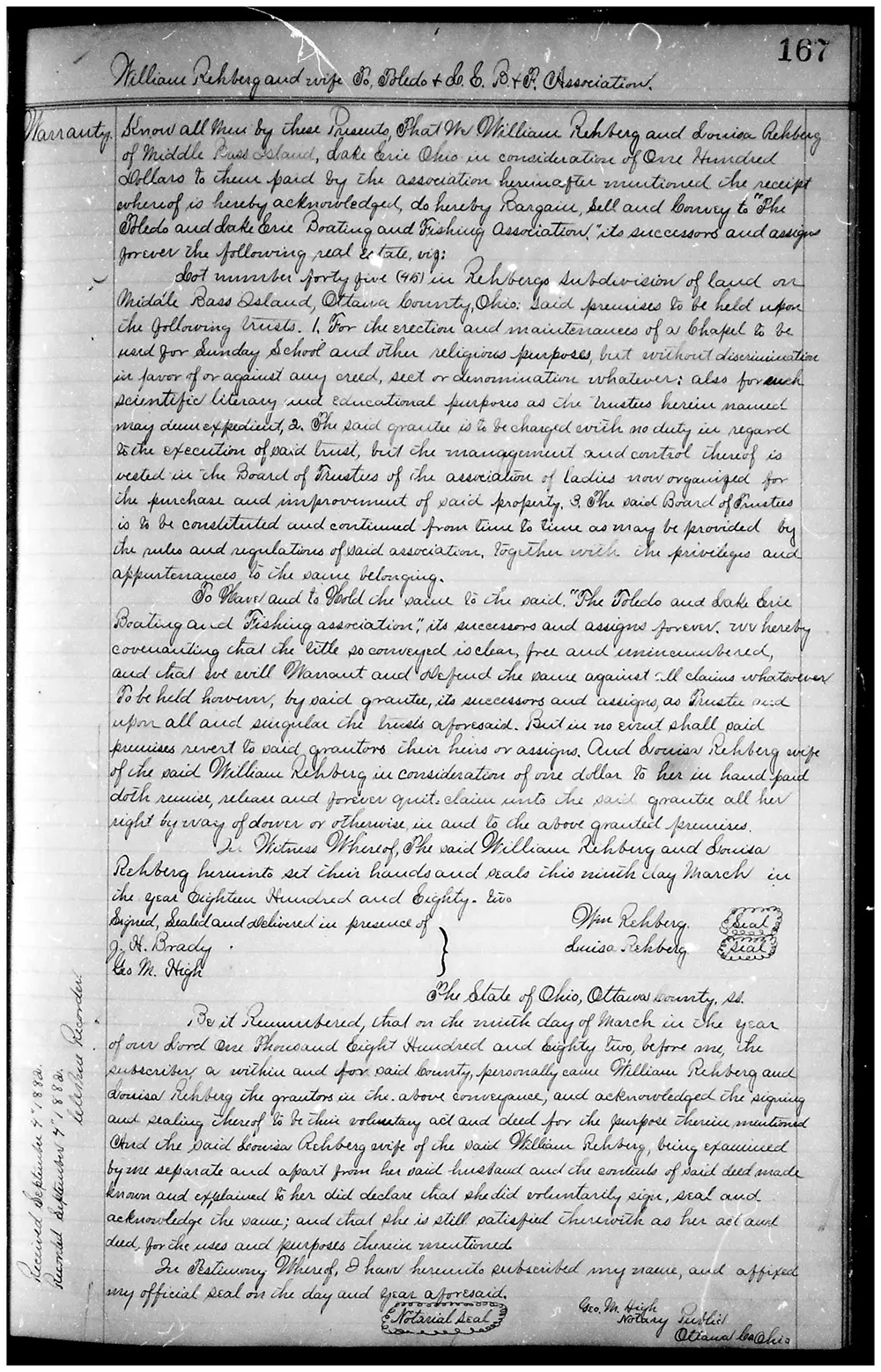 Rehberg Lot 45, Chapel, deed between William & Louise Rehberg and the Lake Erie Boating and Fishing Association
Rehberg Lot 45, Chapel, deed between William & Louise Rehberg and the Lake Erie Boating and Fishing Association
The Chapel Building - Initial Construction
The initial meeting of the Middle Bass Chapel Association was held on August 10, 1881 at the cottage of Mrs. Daniel Horn Mears on the corner of Grove Avenue and Rehberg Avenue. This cottage doesn’t exist today; it was located on William Rehberg’s 1st Addition, lot 19 which is currently owned by the Middle Bass Club. The goal of the Middle Bass Chapel Association was “to erect a building to be used for religious and literary purposes.” The following ladies were elected a Board of Trustees: Mrs. Daniel Horn Mears, Mrs. Francis Pilgrim Isherwood, Mrs. Aaron Lufkin Kelsey, Mrs. Leander Solomon Baumgardner, Mrs. James Clark and Mrs. David Clark. The first officers of the Middle Bass Chapel Association included: President, Mrs. Daniel Horn Mears, Vice President, Mrs. Scott [Probably Mrs. Alexander W. Scott], Secretary, Miss Pamela Berdan [daughter of member Peter Frederick Berdan and his wife Maria Waite] and Treasurer, Mrs. Matthew Shoemaker. By vote, a Building Committee of gentlemen was selected to work with the Trustees in erecting the Chapel, which was comprised of: Mr. Peter Frederic Berdan, Mr. Welcome Otis Parker, Mr. William Keeny McMillan, Mr. James Clark, Mr. Matthew Shoemaker and Mr. Leander Burdick. Both the Middle Bass Chapel Association Trustees and Building Committee were comprised of Middle Bass Club cottage owners; suggesting they had a vested interest in building a Chapel for worship as they planned to spend a significant amount of time at the Middle Bass Club during the summers.
No major business transpired at the second meeting which was held on August 19, 1881; there are no notations as to where the meeting took place.
The third meeting on August 13, 1881 took place at the cottage of Mrs. Aaron Lufkin Kelsey. This cottage exists today; it’s located on Grove Avenue, William Rehberg lot 10 which is currently owned by the Jones-Cumberworth family. During this meeting, Mr. Matthew Shoemaker was appointed to provide a “Draught [sketch] of a Chapel building such as would seem suitable for the purposes to which the said Chapel would be devoted.”
The fourth meeting occurred on September 2, 1881 at the cottage of Mrs. Daniel Horn Mears. A Constitution and By-Laws were read, approved and unanimously adopted. The Middle Bass Chapel Association Constitution and By-Laws are almost identical to those in place for the Middle Bass Club at that time. During the meeting, the Middle Bass Chapel Association voted “that the plan of the Chapel building be moved over to the Building Committee subject to their approval.” In order to fund the erection of the Chapel and pay for ministers and building maintenance, the Middle Bass Club Chapel Association solicited “subscriptions,” from active Middle Bass Club members. The subscriptions were fifty cents per year. A Soliciting Committee was created to collect subscriptions from the Middle Bass Club members consisting of: Mrs. Leander Burdick, Mrs. Abraham F. Rutherford [her husband managed the Middle Bass Club House], Mrs. John Berdan II, Miss Cousie Berdan [Daughter of member John Bedan II and his wife Victoria Sinclair] and Miss Annie Rutherford [Daughter of Abraham F. Rutherford and his wife Sarah H Moss].
The fifth meeting on September 25, 1881 was held at the cottage of Mrs. Matthew Shoemaker. This cottage exists today; it’s located on Lake Avenue, William Rehberg lot 1 which is currently owned by the Bradfish-Collins family. The following resolution was unanimously adopted: “Resolved: That this Contract for building the Chapel on the plan, and according to the specifications of E. O. Fallis Architect, be let to Joseph Brady for the sum of $1,500 (Fifteen Hundred Dollars). Payments to made as follows: One third part – thereof when the material is on the ground, one third part – when the building is enclosed and the balance on the 1st day of June 1882 provided the building is finished by that date.”
During the winter months, no formal Middle Bass Club Chapel Association meetings were held. However, Mrs. Leander Burdick and Mrs. Frederick B. Dodge started out on a soliciting expedition and an unknown sum [this was left blank in the Records Book] was mailed and deposited in the name of the Secretary to pay for the construction of the building. Except for member subscription fees, the Records Book does not contain specific documentation concerning who paid for the initial construction of the Chapel building. Thus, we can assume that the Middle Bass Chapel Association Board of Trustees and Officers, the Building Committee and the other 1881-1882 Middle Bass Club members contributed the money necessary to build the Chapel.
In 1882, there was a meeting on July 4th at the cottage of Mrs. Aaron Lufkin Kelsey where it was “sought to accept the Chapel building – the contract for which had previously been accepted. The Treasurer was authorized to pay Mr. Brady the sum found due to him on settlement by the Building Committee. The Building Committee was authorized to purchase carpet to cover the elevated platform of the Chapel. In addition, ladies were selected to secure men for preaching service by city: Mrs. Willis B. Hale - Cleveland, Mrs. [John Prouty or Jonas Mann?] McCune and Mrs. [John Wallace or Stephen M.?] Fuller - Columbus, Mrs. [William D.?] Graves - Dayton, Mrs. Epaphras Lord Barber- Detroit, Mrs. Benjamin H. Whitney - Grand Rapids (Michigan), Mrs. [James Scott or Oliver?] Rodgers - Norwalk and Mrs. Aaron Lufkin Kelsey and Mrs. Charles T. Lewis - Toledo.”
From the Report of the Secretary [Mrs. Frederick B. Dodge] dated August 7, 1882: “Early in the Spring of 1882, the necessity of raising a few hundred dollars more than had been already subscribed became apparent, and with very little effort the required sum was obtained. On the evening of July 4th, the Chapel Building was formally delivered by the builder, Mr. Brady to the Trustees of the Chapel Association and accepted by them. On Sunday, July 8th, the first services were held in the new building. Dedicatory services were conducted by Rev. Colonel Anderson [of the Westminster Presbyterian Church of Toledo], ably seconded by [a] volunteer choir, under the direction of [Middle Bass Club member] William H. Currier, Esq. The Chapel is now completed and entirely free from debt, as will be shown in the report of the Treasurer of the Association.” It is important to emphasize, the 1881-1882 Middle Bass Club members paid for the construction of the Chapel.
During the Trustee Meeting that followed the 1882 Annual Meeting, it was decided that “an annual fee of fifty cents be solicited from each member, the sum to form a contingent fund.”
From the Report of the Secretary [Miss Pamela Berdan] dated August 6, 1883: “The Annual Meeting of last year found the Chapel opened and free of debt and since that time, service of some kind has been held nearly every Sunday during the summer. The children, until the first of September called them to their homes, gathered there for their Sunday School, under the leadership of Mr. Thomas C. Rowland [Middle Bass Club member], and the first of July found them again assembled. Mr. Wilson W. Griffith [Middle Bass Club member] acting as presiding officer for a few Sundays, during the absence of the Superintendent. This service, though designed for children and therefore simple in the character, has often attracted those of a more advanced age, whose presence and the help of whose voices in the singing has always been welcome. Less success has crowned the efforts of those who have endeavored to fill our pulpit, owing partly to the fact that last year, the freeing of the Chapel from debt exhausted the treasury, which was not replenished this year, in time to complete the necessary arrangements. It may not be amiss to state here, that the fee of fifty cents, which has been solicited each year from members of the Club, is devoted to this purpose. The pulpit, however, has not been entirely vacant. On the twentieth of last August, Rev. Colonel Andersen of the Westminster Presbyterian Church of Toledo delivered an eloquent discourse both morning and evening and the Friday previous, delighted an audience in the Chapel by his lecture entitled “Bent,” the proceeds of which were for the benefit of the ministers’ fund. In September, the evangelist, Mr. Williams of Columbus, while visiting friends here, kindly consented to hold service on Sunday and two weeks ago, Dr. Byers, Secretary of the Ohio State Board of Charities, gave in the afternoon in his own inimitable manner, what he denominated a talk. In connection with our Chapel and as an outgrowth of it, we count the pleasant custom, originating with this year, of assembling Sunday evening in the Club House parlor where old and young, led by the trained voices always found among the guests, join in singing hymns of praise to the common Father of us all. We also wish to return thanks to Mrs. Charles R. Messenger [Middle Bass Club member], who kindly donated a large bible for the desk and above all, to Mr. William H. Currier [Middle Bass Club member] who each year, has most generously given us the use of a fine piano. Though little has been accomplished the past year, yet a beginning has been made and we think it cannot be said now, as truly as it was a few years ago that at Middle Bass there were seven days in the week, but no Sabbath among them.”
The only photograph we have of Middle Bass Club Chapel (from the Dr. Martin Taliak Personal Collection) is shown below. We believe that Rev. Henry E. Cooke from Gibraltar Island is pictured in front of the Chapel . Most likely the photograph was taken in 1891 when Rev. Henry E. Cooke led services in the Middle Bass Club Chapel.
Middle Bass Chapel, Architect: E.O. Fallis. Located in William Rehberg's 2nd Addition, Lot 45. Dedicated on July 4, 1882 with the first church service held on July 8, 1882. From the Chapel Committee records book: "The need of a Chapel, on Middle Bass Island having been recognized by many members of the Middle Bass Club, a meeting of persons interested in the erection of such a building, to be used for religious and literary purposes - was held at the cottage of Mrs. D. H. Mears on the 10th day of August - 1881..."
Unfortunately, the Middle Bass Club Chapel does not exist today for unknown reasons; the building burned or was torn down because it fell into disrepair. The empty Chapel lot is currently owned by the Grosser and Hovsepian families. Thus, “Chapel Glass” is the only remnant of the Middle Bass Club Chapel that exists today. The brightly colored, very thin glass came from the Chapel’s stained glass windows. With luck, “Chapel Glass” can still be found deep in the dirt where the Chapel once stood.
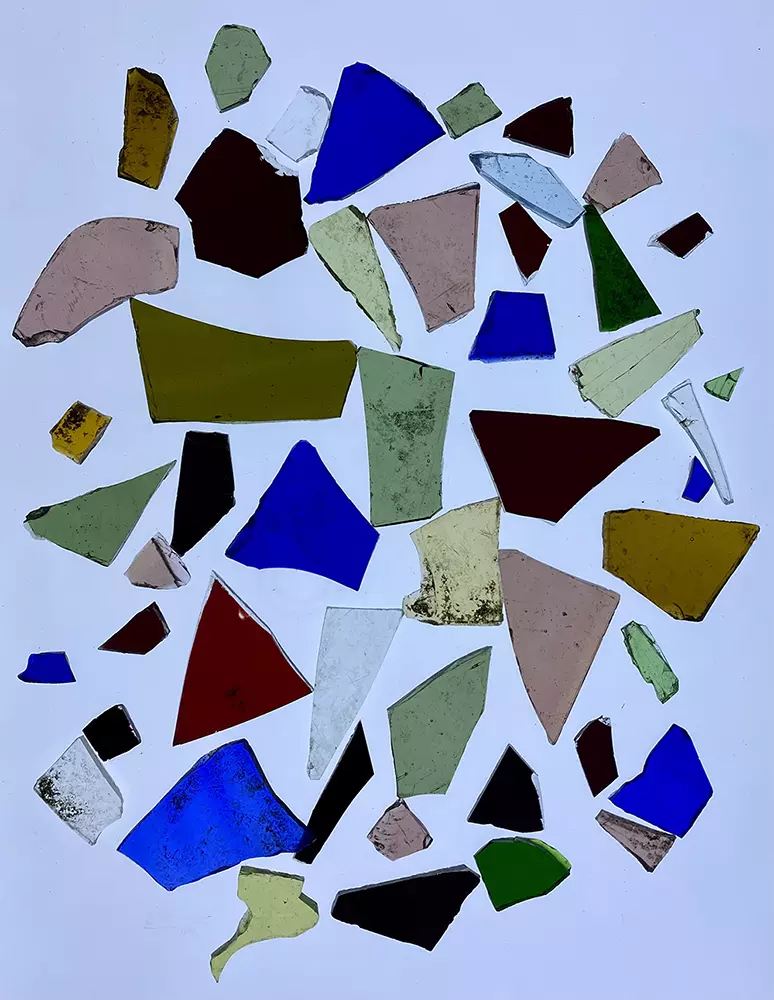 Chapel Glass (i.e., remnants of stained glass windows from the Middle Bass Club Chapel) collected by the Demer, Grosser, Michael and Rader families. Photo taken by Marie Demer Rader, Summer 2021
Chapel Glass (i.e., remnants of stained glass windows from the Middle Bass Club Chapel) collected by the Demer, Grosser, Michael and Rader families. Photo taken by Marie Demer Rader, Summer 2021
After dedicating the Chapel, the Building Committee disbanded, and the ladies of the Middle Bass Club Chapel Association managed the Chapel building and its programs. The Middle Bass Chapel Association had three main responsibilities:
- The Chapel Building (Maintenance & Improvement)
- The Pulpit (Ministers & Supplies)
- The Money (Raising funds to maintain the Chapel building and to pay for the religious, literary and scientific programs)
The Chapel Building - Maintenance and Improvements
The Middle Bass Chapel Association identified necessary repairs, planned for building maintenance and designed improvements to the Chapel Building. From the Middle Bass Chapel Association handwritten Records Book, the following repairs and improvements were completed:
- In 1882, a walk from the Chapel steps across the street, Grape Avenue, was built and the Chapel was carpeted.
- From the 1883 Annual Meeting report by the Secretary [Miss Pamela Berdan]: “On July 11th: an informal meeting was held in the Club House parlor, at which a number of ladies were present. After some discussion, it was deemed advisable to make an effort to cover the unsightly floor of the Chapel with a carpet and subscriptions to that end have since been solicited. The result you see today and we hope that the added comfort and beauty thus given to our little place of worship will be a reward to the generous friends who so freely gave us their aid.”
- In 1883, the Middle Bass Chapel Association paid $1.16 to record the deed and $11.62 for gas (to produce electricity).
- In 1884, the following expenses were recorded for the Chapel: carpet from F. Eaton & Co. cost $106.50, wallpaper from T. J. Brown, Eager & Co. was $65.00, a walkway from builder Joseph Brady was $5.55, lattice from builder Joseph Brady cost $12.84, painting by Allen & Parkhurts cost $5.00 and cleaning was $1.50.
- In 1885, the Chapel was insured for $18.75. With respect to maintenance, the Chapel received one coat of paint and the ground in front was “prepared” for grass seed.
- In 1886, the following expenses were documented: $29.58 for painting the Chapel, $3.75 for the board of the painter, telegraphic dispatches cost $0.75 and cleaning was 25 cents a week.
- In 1887, the Middle Bass Chapel Association wanted to improve ventilation by adding window(s) on the rear wall. This improvement was designed by the Chapel architect E. O. Fallis and the Chapel builder Joseph Brady gave an estimate of $215.45, not including the glass for the front window. The Trustees approved this amount; the actual bill was $239.30 with the additional amount caused by the alteration of the platform and the necessary gas fitting (for electricity). The Brooks & Otis Co. estimated the cost of papering the Chapel to be $59. An estimate from Mr. Williams of Port Clinton for painting the Chapel with two coats of paint was $100: $65.00 for painting the Chapel and $35.00 for painting the roof. Williams was to coordinate with Mr. Otis about the appropriate colors. Mrs. Francis Pilgrim Isherwood and Mrs. Aaron Lufkin Kelsey were to decide upon the colors. All work was completed but the Middle Bass Chapel Association treasury did not have sufficient funds. In order to settle the last bill for painting, the 1887 Trustees (Mrs. Aaron Lufkin Kelsey, Mrs. Thomas C. Rowland, Mrs. Peter Frederick Berdan, Mrs. Francis Pilgrim Isherwood, Mrs. Alexander W. Scott, Mrs. James Clark and Mrs. James Scott Rodgers) each advanced $10 of their own money. The Trustees were paid back the advanced money in 1889, although the majority of the Trustees redirected their $10 toward starting a lending library in the Chapel.
- In 1888, the Chapel was reinsured for a cost of $18.00. Chambermaids were paid one dollar each for sweeping the Chapel and Frank and John for laying the carpet. Francis Pilgrim Isherwood was to put borax on the carpet to protect it from crickets. The stained glass windows were broken in several places. In an effort to protect them, the ladies decided to cover the stained glass windows on the outside of the Chapel with wire netting. They were to obtain measurements and see Middle Bass Club member, Mr. William B. Melish who owned a wire manufacturing company. In Cincinnati, Ohio. The picture below from the Rehberg mausoleum on Middle Bass Island shows a wire screen over a stained glass window.
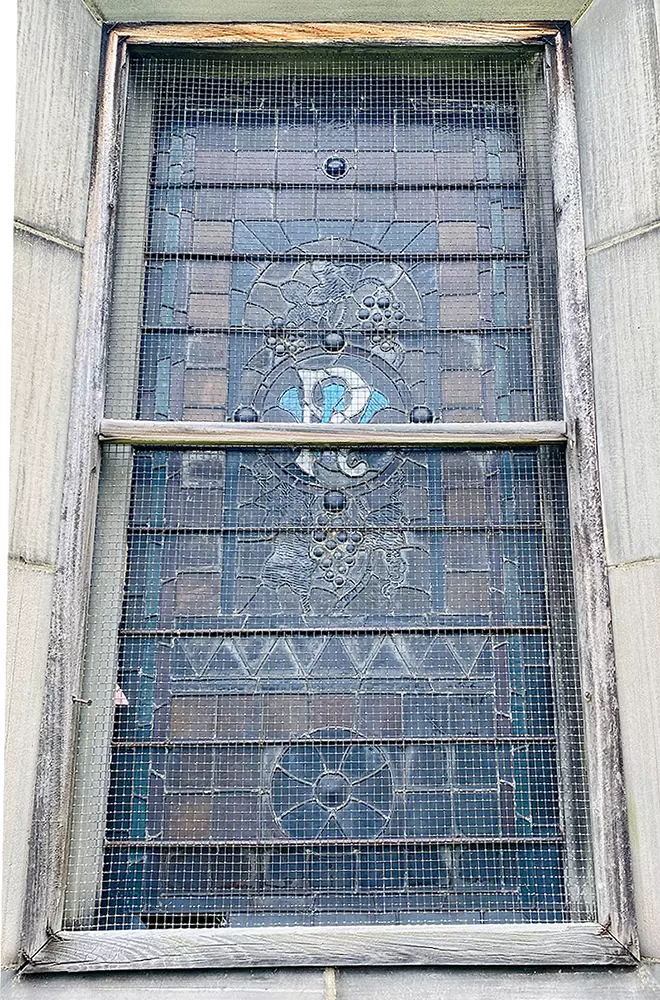 William Rehberg mausoleum at Middle Bass Island cemetery. Note the wire screen in a wooden frame placed over the stained glass window for protection. Photo taken by Marie Demer Rader, Summer 2011.
William Rehberg mausoleum at Middle Bass Island cemetery. Note the wire screen in a wooden frame placed over the stained glass window for protection. Photo taken by Marie Demer Rader, Summer 2011.
- In 1889, the Middle Bass Chapel Association decided to purchase a sofa, screen, wooden bench and table for the platform. No costs were identified.
- In 1890, two dozen more chairs and a stencil to mark them “Chapel” were purchased along with a bookcase for the hymn books and a screen, wooden bench and table for the platform.
- In 1891, the Trustees wanted to make a change to the front of the Chapel to make it more ornamental and to keep the glare from the minister’s eyes so they contacted the architect E. O. Fallis. However, Mr. E. O. Fallis did not keep the appointment so in 1892 they decided to wait on this Chapel improvement.
- In 1892, it was decided to paint the Chapel a lighter color than the “present ugly color.” The Trustees obtained estimates from Mr. Williams of Port Clinton for painting the Chapel with and without the roof. There was no mention in the Records Book if the Chapel was painted.
- In 1893, it was suggested that Mrs. James Clark speak with Mrs. Francis Isherwood about putting in a memorial window for her husband as Francis Pilgrim Isherwood died at his cottage in August 1893. There is no information in the Records Book to indicate if a memorial window for Francis Pilgrim Isherwood was added to the Chapel.
- In 1895, a rug was purchased to cover the Chapel carpet in front of the door where it was beginning to wear.
- In 1897, the President requested that Burt examine the roof, put a new board in the floor of the porch and paint the inside of the porch. Clarence Elisha Burke was appointed to buy a rug to put inside the Chapel door.
- In 1898, it was noted that the Chapel doors need painting. Peter Frederick Berdan bought the rug to go inside the Chapel door as Mrs. Clarence Elisha Burke was unable to do so because of an illness.
- In 1904, Mrs. LeRoy Brooks was to look into a new platform and steps for the Chapel.
- In 1906, it was documented that “the Chapel needs a new roof, bell rope changed, shutters over windows repaired, steps braced and the porch painted.”
The Pulpit
The Middle Bass Chapel Association identified and recruited ministers each year to preach in the Chapel for 8 Sundays in July and August. To locate the ministers, the Middle Bass Chapel Association Trustees or an appointed committee would solicit ministers from their hometowns or designated cities and invite the ministers to come to Middle Bass Island to preach during the summer. The Middle Bass Chapel Association could easily entice leading men to fill the pulpit because the Middle Bass Club was a beautiful place to visit, and the membership included prominent, wealthy and powerful families.
From the Annual Meeting on August 6, 1883: “ A motion was made that the committee of last year, Mrs. Edward C. Bodman and Mrs. William H. Currier, be reappointed for this year with authority to invite a clergyman to officiate each Sunday of July and August, paying $10 a Sunday. Carried.” The Secretary would then send a written invitation to the ministers to confirm the date they would be available to preach at the Chapel. The ministers were paid for their services: $10 and two days lodging in the Middle Bass Club House. The pulpit compensation was increased to $15 in 1897, $20 in 1902, $25 in 1905 and $30 in 1906. In 1900, from a financial standpoint, the Middle Bass Chapel Association decided to enlist ministerial services for only 6 Sundays in the summer, omitting the first 2 Sundays in July.
The Pulpit – Ministers
According to the Records Book, ministers came from the following Ohio cities: Akron, Cincinnati, Cleveland, Columbus, Gambier (Kenyon College), Granville (Denison University), Findlay, Lima, Massillon, Newark, Put-in-Bay (Gibraltar Island), Sandusky, Talmadge and Toledo. Additionally, ministers traveled from out of state to preach in the Middle Bass Club Chapel: Adrian, Michigan; Detroit, Michigan; LaGrange, Illinois; Philadelphia, Pennsylvania; Pittsburgh, Pennsylvania and St. Louis, Missouri. A link to a complete list of the clergy that held services in the Middle Bass Club Chapel is listed below.
![]() Middle Bass Club’s Chapel Ministers
Middle Bass Club’s Chapel Ministers
Since the majority of the Middle Bass Club members resided in Toledo, ministers from prominent Toledo churches were often invited to preach at the Chapel. Many clergy from the First Congregational Church of Toledo came to Middle Bass Island because their congregation included the wealthy, prestigious families of Toledo’s Old West End. In fact, the following Middle Bass Club members belonged to the First Congressional Church: John Berdan II and his sons Lucius B. Berdan and Sinclair Berdan, Peter Frederick Berdan and his son Frederick T. Berdan, Leander Burdick, Symmes Henry Bergen, Leander Burdick, Walter J. Chase, Abram Walter Colton, Judge John Hardy Doyle, Frederick K. Eaton, Isaac Newton Poe, Charles Harvey Scribner, James K. Secor and Adelbert Lorenzo Spitzer.
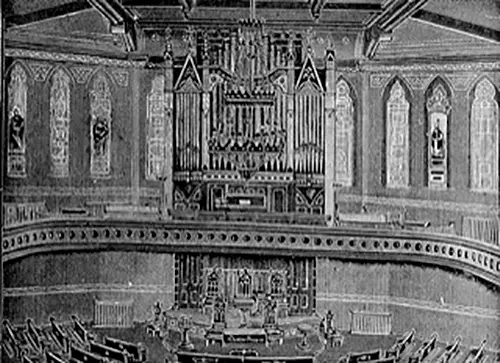 The Old First Church Interior looking down toward the pulpit and organ loft. Source: The Evolution of a School Master autobiography part 2, 1872-1899, p. 88
The Old First Church Interior looking down toward the pulpit and organ loft. Source: The Evolution of a School Master autobiography part 2, 1872-1899, p. 88
Rev. William Wallace Williams
Rev. William Wallace Williams of Toledo’s First Congregational Church held services eight Sundays in the Middle Bass Club Chapel, specifically: July 27, 1884; July 19, 1885; July 25, 1886; August 7, 1887; July 29, 1888; August 25, 1890; August 28, 1892 and August 2, 1896. Rev. Williams graduated from Amherst College in 1843 and Auburn Theological Seminary in 1846. After being ordained and working in Camillus, New York, Rev. Williams was installed in the First Congregational Church in Toledo on September 1, 1853. He served 44 consecutive years as a pastor in Toledo (1853 - 1897) thus ensuring he had personal and professional relationships with Middle Bass Club members. In March 1987, Rev. Dr. Williams offered his resignation and the First Congressional Church granted him the title of pastor emeritus.” (Source: Find A Grave)
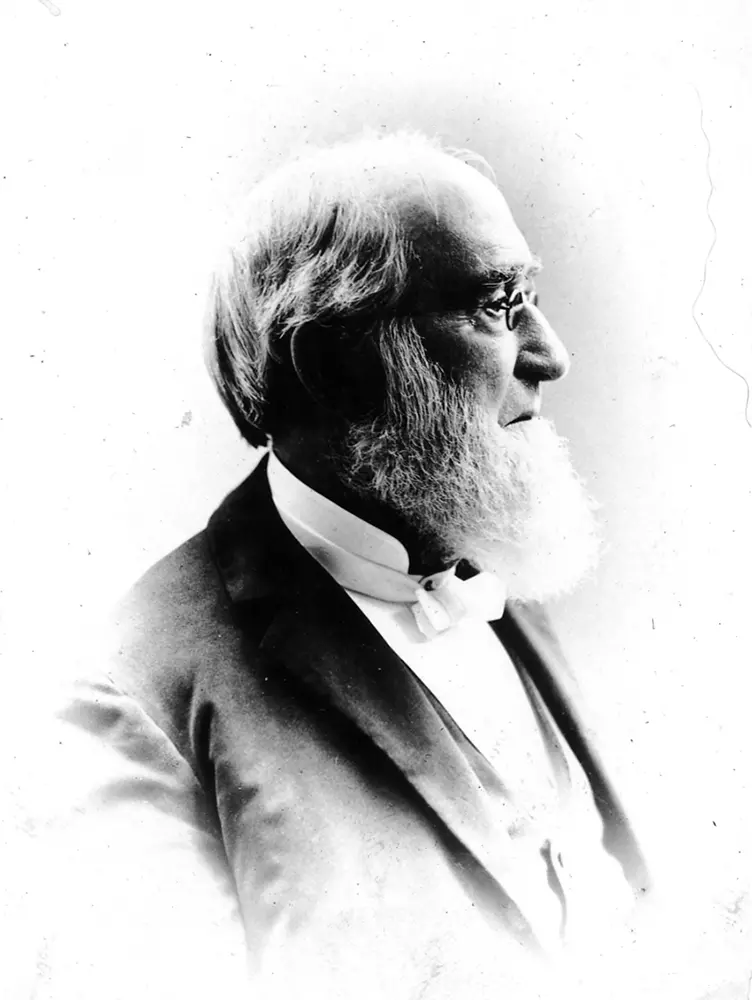 Rev. William Wallace Williams, Pastor First Congregational Church of Toledo, Ohio Source: The Evolution of a School Master autobiography part 2, 1872-1899, p. 85
Rev. William Wallace Williams, Pastor First Congregational Church of Toledo, Ohio Source: The Evolution of a School Master autobiography part 2, 1872-1899, p. 85
From Rev. Fisk’s Autobiography, “This church [First Congregational Church of Toledo] had been already forty-one years under the pastorate of its now seventy-one year old minister, Dr. W. W. Williams. It was the oldest, and in some ways the most notable church of Toledo, and in a very true sense. Dr. Williams was the church, for he had bred it up both materially and otherwise to be what it was. For some years there had been attempts to give the aging pastor an associate, or assistant pastor, but hitherto he had managed to side-track all efforts to secure the service of a younger man.” (Source: The Evolution of a School Master autobiography part 2, 1872-1899, p. 85.) He went on to describe the First Congregational Church as “the Mother Church” of Toledo, one of its strong churches, with membership of over 600.” (Source: The Evolution of a School Master autobiography part 2, 1872-1899, p. 87.)
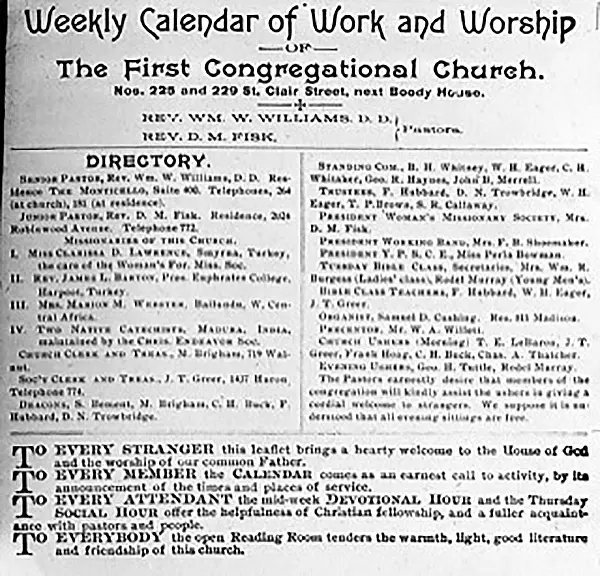 Weekly Calendar of Work and Worship Source: The Evolution of a School Master autobiography part 2, 1872-1899, p. 90
Weekly Calendar of Work and Worship Source: The Evolution of a School Master autobiography part 2, 1872-1899, p. 90
Rev. Daniel Moses Fisk
Rev. Daniel Moses Fisk from the First Congregational Church in Toledo, Ohio came to preach in the Middle Bass Club Chapel on: July 3, 1892; July 2, 1893 and July 5, 1896. Rev. Fisk received his education from Brown University and Harvard Medical School. He taught biology at Hillsdale College from 1872 until 1886 and became an ordained minister in Jackson, Michigan in 1886. In 1891, Rev. Fisk came to the First Congregational Church in Toledo, Ohio as a junior pastor and remained there until 1896. According to Rev. Fisk, “[First Congregational Church] not only held large wealth, but its pew-holders were essentially the leaders of the most exclusive social set of the town. Indeed, to hold a pew in the “Old First” was pretty nearly a vised passport to standing in Toledo’s first circles. For years, this church had sought, and had very largely secured the pace-makers in finance and fashion. The dignified pulpit in that great auditorium looked to the invited candidate [Rev. Fisk] a “throne of power.” This farmer-bred son [Rev. Fisk] had as yet no experience with millionaire parishioners; with folk who gave $5 a year to foreign missions, and spent $10,000 on a show wedding or the races.” (Source: The Evolution of a School Master autobiography part 2, 1872-1899, p. 88)
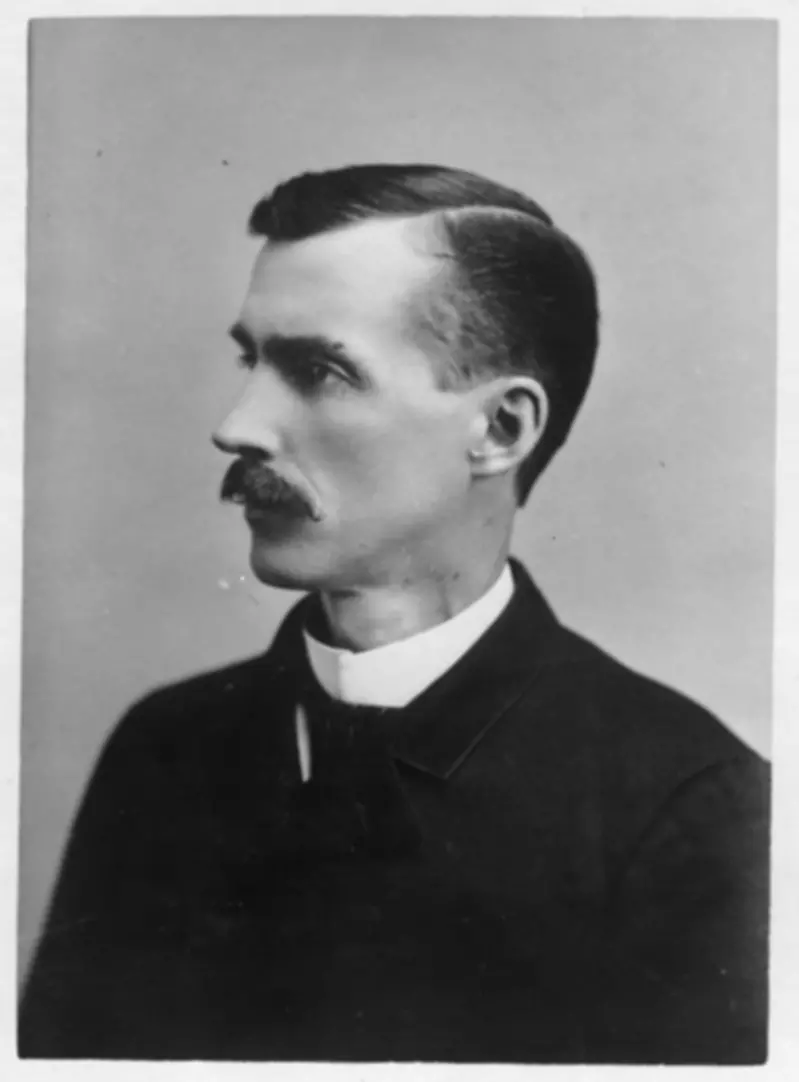 Rev. Daniel Moses Fisk, Toledo, Ohio, Age 45. Source: The Evolution of a School Master autobiography part 2, 1872-1899, p. 91
Rev. Daniel Moses Fisk, Toledo, Ohio, Age 45. Source: The Evolution of a School Master autobiography part 2, 1872-1899, p. 91
After Toledo, Rev. Fisk’s Congregational pastorates included: Compton Hill Church, St. Louis, Missouri 1897-1899 and First Church, Topeka, Kansas 1899–1902. Rev. Fisk received a Ph. D. from Findlay College in 1890 and a Doctor of Divinity from Hillsdale in 1897. From 1899 until he retired in 1924, Rev. Fisk was a Sociology Professor, field worker (recruiter) and Trustee at Washburn College in Kansas. Upon retirement, Rev. Fisk was named professor emeritus and given an annual salary of $2,500. (Source: The Ichabod (Washburn College), October 1932, p.1)
Rev. Albert Marion Hyde
Rev. Albert Marion Hyde from the First Congregational Church of Toledo led services in the Middle Bass Club Chapel on August 27, 1899; August 24, 1903 and July 8, 1904. After Rev. William’s resignation in March 1897, Rev. Hyde came from his initial pastorate at Greenville, Michigan to lead the “Old First” at Toledo. Due to his preaching power and constant work, Rev. Hyde increased the church’s membership from 450 to 922 illustrating that he was well acquainted with the Middle Bass Club members in his parish. (Source: Find A Grave) In fact, the Guest Register book shows that Rev. Hyde checked into the Middle Bass Club on Saturday August 26, 1899 and stayed at a cottage rather than at a room in the Club House. Unfortunately, the Guest Register does not specify in which cottage he was a guest.
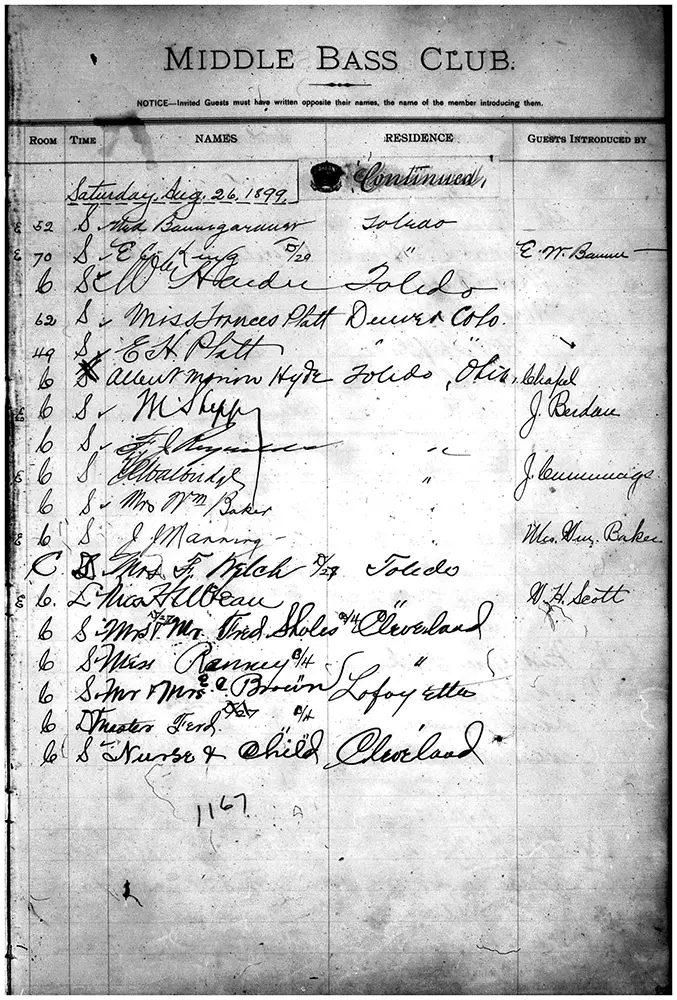 1899 Middle Bass Club Guest Register book
1899 Middle Bass Club Guest Register book
Later, Rev. Hyde went to the Porter Congregational Church in Massachusetts where he caused a sensation by circulating among the women of his parish ten commandments for wives, Commandments for Convenience which included, “Thou shalt not marry for a bank account nor even to escape being an old maid. It is better to remain single all thy life than to enter into the matrimonial state for revenue only.” (Charlotte Evening Chronicle, December 15, 1911) Later Rev. Hyde formulated commandments for young men which included, “Do not invest your nickel in a glass of beer, then criticize the other fellow who has invested his in a savings bank. Beer checks and savings bank checks as investments are not in the same class.” (Source: New Your Times, December 13, 1911). Rev. Hyde’s also created ten commandments for husbands which said, “Don’t arrange for your second marriage before your first wife is dead.” (Source: New Your Herald, January 1, 1912).
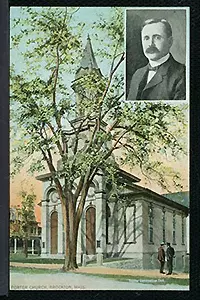 A postcard of the Porter Congregational Church where revered Hyde was a Pastor. Link to the Digital Library
A postcard of the Porter Congregational Church where revered Hyde was a Pastor. Link to the Digital Library
Another Toledo church popular with the Middle Bass Club families was Trinity Episcopal Church, a massive gothic stone building located downtown. Many reverends from Trinity Episcopal Church came to the Chapel because their parish included the following important Middle Bass Club members: Leander Solomon Baumgardner, Oliver S. Bond, Calvin Bronson, Charles F. Curtis, James B. Monroe, Sheldon Clark Reynolds and his son Frederick Jesse Reynolds, Frederick Jesse Reynolds, William H. Simmons, Denison Billings Smith, Jr., George E. Welles, Horatio Sam Young and Morrison Waite Young.
Rev. Edward Robert Atwill
Rev. Edward Robert Atwill of the Trinity Episcopal Church led services in the Middle Bass Club Chapel on July 13, 1884 and July 31, 1887. Later Rev. Atwill became Bishop of the Episcopal Diocese of West Missouri.
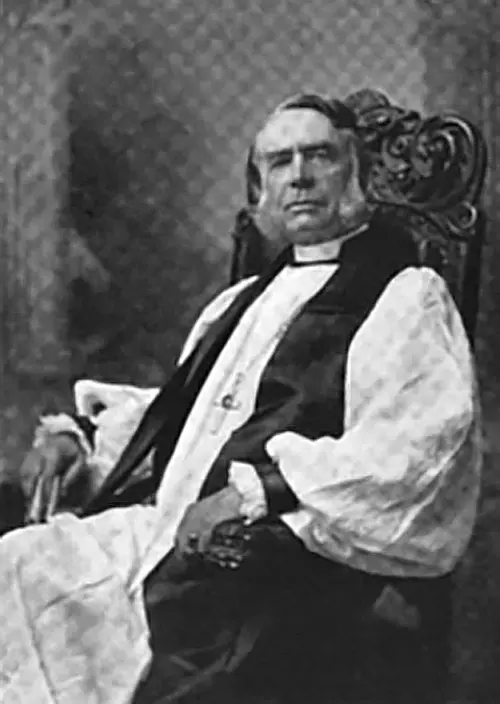 Rev. Edward Robert Atwill. Source: Find A Grave
Rev. Edward Robert Atwill. Source: Find A Grave
Rev. Charles Scadding
Rev. Charles Scadding led twelve services in the Middle Bass Club Chapel: July 10, 1892; July 23, 1893; July 16, 1894; August 30, 1896; August 4, 1901; August 11, 1901; August 10, 1902; August 3, 1903; August 7, 1904; August 14, 1904; July 22, 1906 and July 29, 1906. “Reverend. Charles Scadding graduated from Trinity College in 1885 and entered the priesthood in 1886. He served as rector in Christ Church in Middletown, New York, Trinity Church in Toledo, Ohio and assistant rector at St. George’s Episcopal Church in Manhattan and served as the 3rd Bishop of the Episcopal Diocese of Oregon from 1906 – 1914. He was also a lecturer of the London Society for the Propagation of the Gospel.” (source: Wikipedia) Rev. Scadding would have been in contact with many Middle Bass Club members because he followed in the footsteps of Rev. Edward Robert Atwill who also led services in the Middle Bass Club. Rev. Scadding’s second marriage to Mary Robinson Pomeroy in 1899 provided another connection to the Middle Bass Club as Mary Robinson Pomeroy’s brother, George Eltweed Pomeroy Jr., was a member of the Middle Bass Club from 1888 to 1907. Based on 1901 Guest Book records, Rev. and Mrs. Scadding arrived at the Middle Bass Club on Thursday, July 30th and stayed in room 68 at the Club House while Rev.’s Scadding’s brother in law, George E. Pomeroy, stayed in room 60 at the Club House. This is another example highlighting the personal relationships between the clergy and the Middle Bass Club membership.
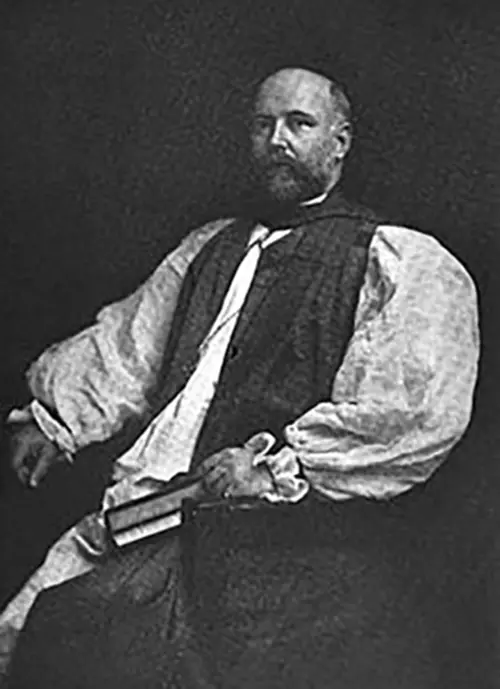 Rev. Charles Scadding Source: Wikipedia
Rev. Charles Scadding Source: Wikipedia
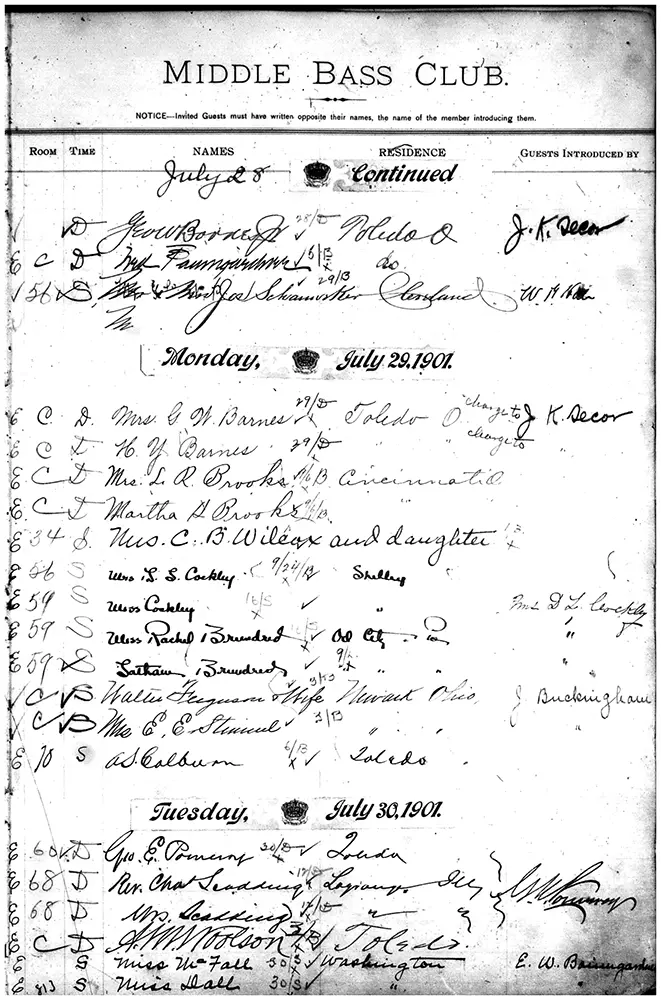 Middle Bass Club Guest Register Book Entry: July 30,1901
Middle Bass Club Guest Register Book Entry: July 30,1901
Based upon my research, all the ministers were prominent men in their field and most had a personal relationship with at least one Middle Bass Club member. Other significant reverends who led services in the Middle Bass Club Chapel are listed in alphabetical order below.
Rev. Cyrus S. Bates
Rev. Cyrus S. Bates of the St. Paul’s Episcopal Church in Cleveland, Ohio led services in the Middle Bass Club Chapel on August 22, 1886 and August 21, 1887. Rev. Bates fought for the Union in the Civil War and was wounded at the Battle of Chickamauga. After the war, he practiced law in Cincinnati and then entered Bexley Theological Seminary, part of Kenyon College, where he graduated in 1873. After servicing churches in Lima and Newark he returned to Kenyon College. In 1878, Rev. Bates was a Professor of Mental and Moral Philosophy and a Professor of Dogmatic Theology in Bexley. In 1885, he became rector of St. Paul’s Episcopal Church in Cleveland, Ohio while remaining a Trustee with Kenyon College. (Source: Kenyon College Library)
Rev. Dr. William Budd Bodine
Rev. Dr. William Budd Bodine, President of Kenyon College, held services in the Chapel on July 24, 1887 and July 15, 1888. Kenyon College was the first Episcopal College and Seminary outside the original 13 Colonies and was well known in the 1860s as evidenced by the education of numerous Chapel ministers. (Source: St. Paul’s Episcopal Church, Put in Bay, Ohio) Rev. Bodine was a New Jersey native who graduated from Princeton in 1860 before attending Bexley Hall, the seminary at Kenyon College, until 1864. Rev. Bodine served as chaplain and President of Kenyon College from 1876 to 1891. He died in 1907 while serving as church rector in Pennsylvania. (Source: Kenyon College Library)
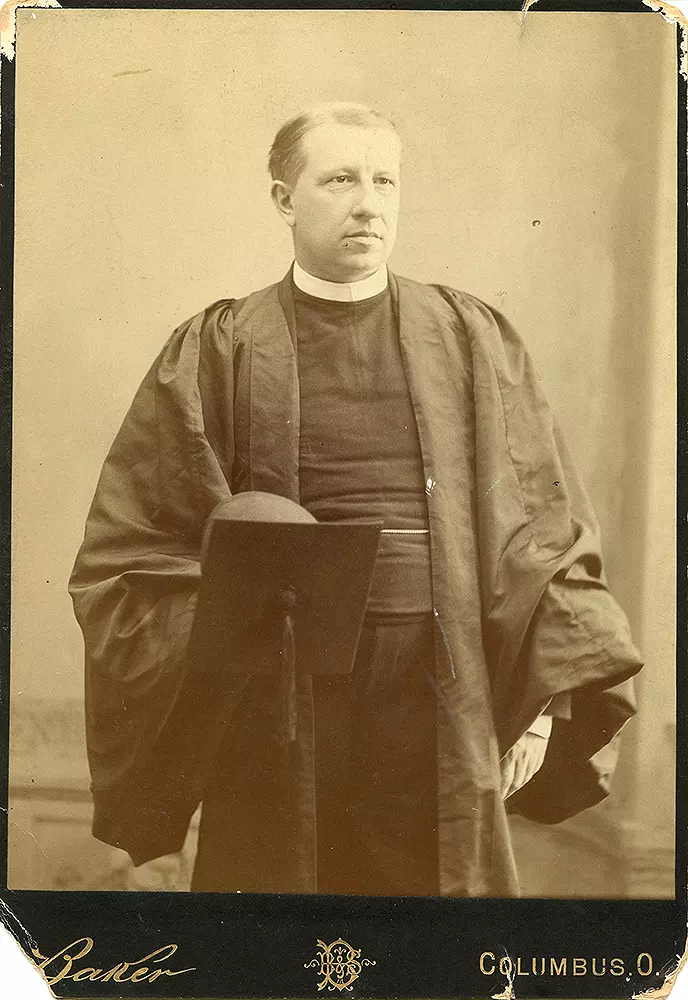 Rev. Dr. William Budd Bodine, Source: Kenyon College Library, Gambier, Ohio
Rev. Dr. William Budd Bodine, Source: Kenyon College Library, Gambier, Ohio
Rev. Henry E. Cooke
Rev. Henry E. Cooke, Episcopalian, from Manchester, New Hampshire and Gibraltar Island conducted two services at the Chapel on August 16, 1891 and August 23, 1891. Rev. Cooke spent time on Gibraltar Island because his father Jay Cooke, known as the “(Union) financier of the Civil War, bought the island. Gibraltar Island is located in the harbor of Put in Bay just across from Middle Bass Island in Lake Erie. From Cooke’s Castle on Gibraltar, Rev. Cooke would have been able to see the Middle Bass Club House. Because Jay Cooke endowed a chair at Kenyon College, he was in contact with leading Episcopal ministers many of whom led services in the Middle Bass Club Chapel. Besides locational proximity, Rev. Cooke had a personal relationship with the Middle Bass Club membership because his son Russell Cooke (Sr.) married Middle Bass Club member Alice Reeve Kelsey in 1912. She is the granddaughter of Middle Bass Club member Aaron Lufkin Kelsey and his wife Helen Mar Lawton and the daughter of Middle Bass Club member Hiram Reeve Kelsey and his wife Alice Gladstone Young.
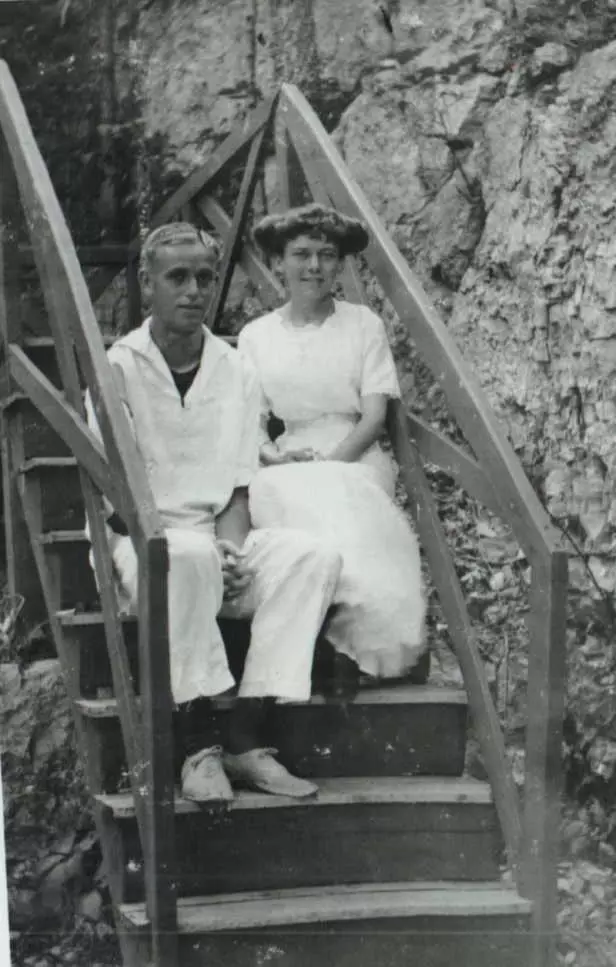 Russell Cooke (Sr.) & Alice Reeve Kelsey. The couple was married in 1912. Perhaps this photo was taken at the Middle Bass Club or Gibraltar Island in Lake Erie? Source: Ancestry
Russell Cooke (Sr.) & Alice Reeve Kelsey. The couple was married in 1912. Perhaps this photo was taken at the Middle Bass Club or Gibraltar Island in Lake Erie? Source: Ancestry
Rev. Frederic Beal DuVal
Rev. Frederic Beal DuVal from the Westminster Presbyterian Church of Toledo led services in the Chapel on July 26, 1885 and July 18, 1886. Rev. DuVal graduated from Princeton University and Princeton Theological Seminary. Before coming to Toledo in 1884, he served a pastor in the First Presbyterian Church in Wilmington, Delaware. After Toledo, Rev. DuVal served as minister of Knox Presbyterian (United) Church in Winnipeg, Canada. While in Canada, he was elected Moderator of the General Assembly of the Presbyterian Church of Canada in 1908, represented the Canadian Presbyterian Church at the Tercentenary celebration in Quebec in 1908 and represented the Canadian Presbyterian Church at the World’s Presbyterian Council at New York in 1909. (Source: Manitoba Historical Society website, Memorable Manitobans: Frederic Beal DuVal (1847-1928)
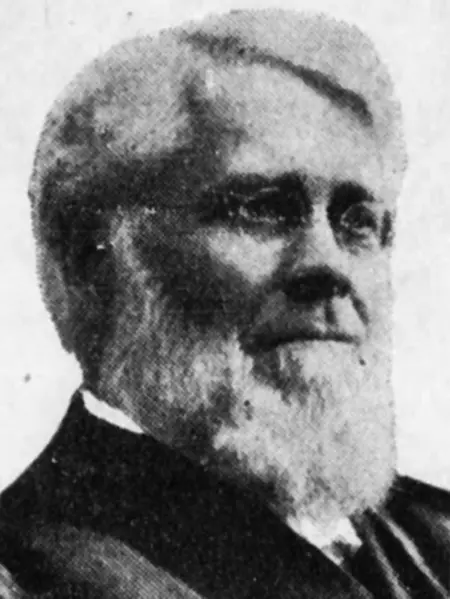 Rev. Frederic Beal Duval. Source: Winnipeg Tribune, 15 May 1928, p. 26)
Rev. Frederic Beal Duval. Source: Winnipeg Tribune, 15 May 1928, p. 26)
Rev. Andrew J. Fish
Rev. Andrew J. Fish of the Methodist Episcopal Church in Findlay, Ohio conducted a service in the Middle Bass Club Chapel on August 9, 1885. Rev. Fish came to Findlay in the fall of 1884. Perhaps Rev. Fish’s prior tenure at a Methodist Episcopal Church in Toledo placed him in contact with Middle Bass Club members? In connection with the Central Ohio Methodist Episcopal Conference, Rev. Fish instituted the “Preacher’s Aid Society,” which raised $22,000 and served as the conference missionary treasurer for 12 years. (Source: History of Hancock co, Chicago: Warner Beers & Co., 1886)
Rev. John R. Hewitt
Rev. John R. Hewitt of St. Paul’s Episcopal Church in Columbus, Ohio led five services in the Middle Bass Club Chapel on: August 6, 1899; July 29, 1900; July 28, 1901; July 27, 1902 and July 26, 1903. In fact, Rev. Hewitt brought his wife to Middle Bass with him on Saturday July 27, 1901. Rev. Hewitt typically stayed at the cottage of Middle Bass Club member John Prouty McCune indicating that they were acquaintances from the mainland. This cottage exists today on Grape Avenue in William Rehberg’s 2nd Addition: lot 40 and is owned by the Demer family.
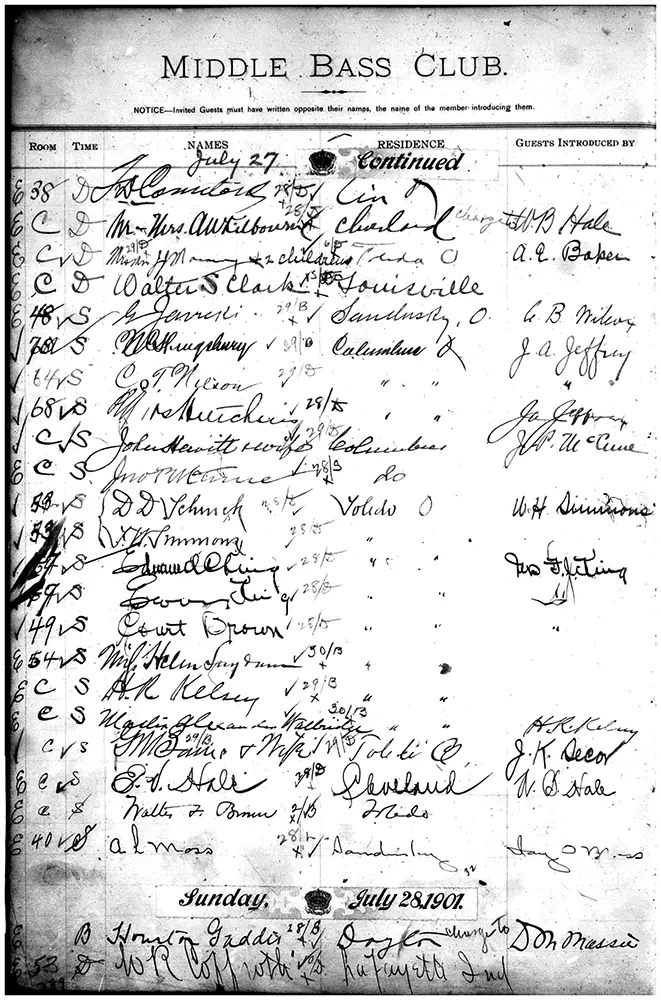 Middle Bass Club Guest Register entry: July 27, 1901
Middle Bass Club Guest Register entry: July 27, 1901
Rev. Emory W. Hunt
Rev. Emory W. Hunt of the Ashland Avenue Church in Toledo and later with Denison University, held six services in the Middle Bass Club Chapel on: August 26, 1888; July 30, 1893; July 8, 1894; July 19, 1903; August 30, 1903 and July 24, 1904. Rev. Hunt was the President of Denison University from 1901 to 1912. The Middle Bass Club members who attended the Ashland Avenue Church included: Charles T. Lewis and Thomas A. Taylor. Therefore, it makes sense that Rev. Hunt, his wife and child stayed at the cottage of member Charles T. Lewis in 1902 and 1903 because they knew one another from their home parish.
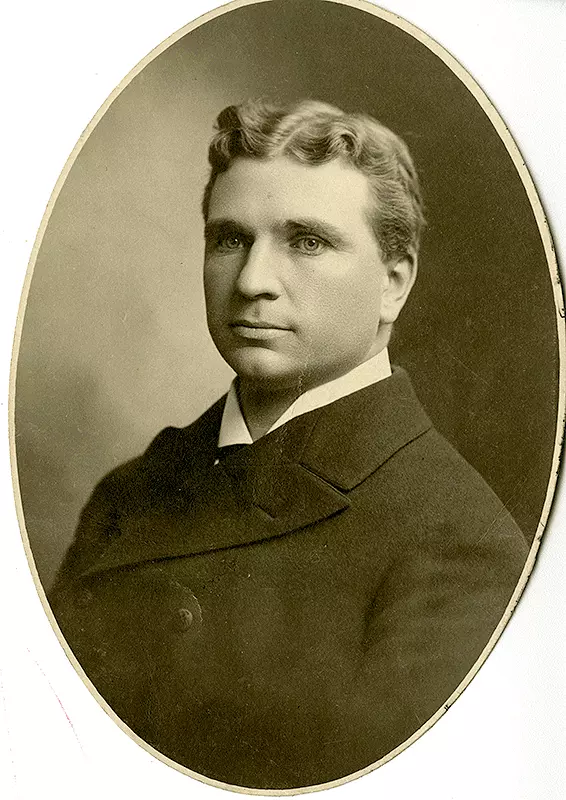 Portrait and photos of Rev. Emory W. Hunt from 1910 and 1913 (multiple photos). Source: Denison University Archives & Special Collections
Portrait and photos of Rev. Emory W. Hunt from 1910 and 1913 (multiple photos). Source: Denison University Archives & Special Collections
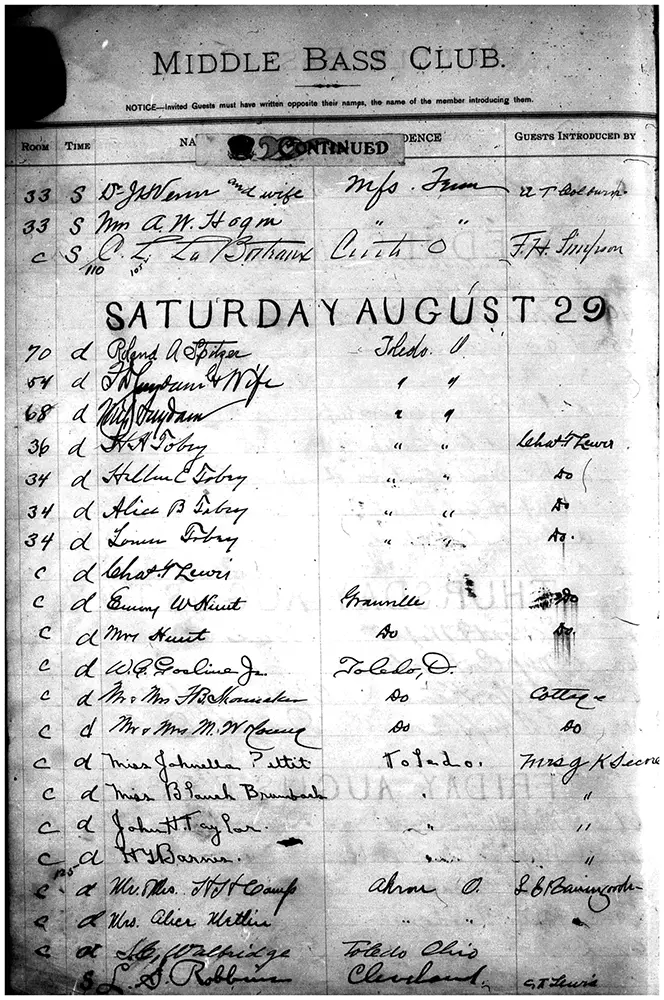 Middle Bass Club Guest Register entry: August 29, 1903
Middle Bass Club Guest Register entry: August 29, 1903
After leaving Denison University, Rev. Hunt was general secretary of the Baptist Foreign Mission Society of Boston for six years and a pastor in Newton, Massachusetts. In 1919, Rev. Hunt became President of Bucknell University and served in that position until 1931.
Rev. Simeon David Hutsinpillar
Rev. Simeon David Hutsinpillar of St. Paul’s Methodist Episcopal Church in Toledo led religious services five times in the Chapel on: July 20, 1890; July 19. 1891; July 24, 1892; July 16, 1893 and July 22, 1894.
Rev. James Alexander Porter McGaw
Rev. James Alexander Porter McGaw of the First Presbyterian Church in Toledo held services on July 21, 1889 “Cor. 5:1, Certainties About Heaven”; July 27, 1890 “Cor. 13:13, The Supreme Excellence of Love” and August 7, 1892 “Exod. 4:11, Man’s Mouth.” From 1888 until 1893 Rev. McGaw served the First Presbyterian Church in Toledo, Ohio. After Toledo, Rev. McGaw had parishes at Linwood Presbyterian Church in Kansas City, Missouri and the Third Presbyterian Church in Fort Wayne, Indiana. In 1904, Rev. McGaw moved to Oregon to preach in the following cities: Grants Pass, Salem, Portland, Union, Woodburn, Independence and at the Chemawa Indian School. (Source: University of Oregon Libraries, Special Collections and University Archives)
Rev. Dr. Thomas J. Melish
Rev. Dr. Thomas J. Melish from the St. Phillips Protestant Episcopal Church in Cincinnati, Ohio was the father of a Middle Bass Club member, William B. Melish (an active member from 1890 to 1907). Rev. Melish held services in the Chapel on August 5th and 12th, 1888. John Melish, Rev. Melish’s father and grandfather of Middle Bass Club member William B. Melish, mapped the state of Pennsylvania and corresponded with Thomas Jefferson at Monticello; the maps and correspondence are available in the United States Library of Congress.
Rev. Anson Smythe
Rev. Anson Smythe, of the Congregational denomination from Cleveland preached in the Chapel on Sunday, August 17, 1883. Earlier Rev. Smythe was a pastor at the Congregational Church of Toledo and became involved improving the city’s schools. While preaching and serving as the Superintendent of the Toledo public schools, Rev. Smythe became acquainted with numerous Middle Bass Club members. Rev. Smythe is considered one of the founders of the public school system of Ohio and the founder of the Cleveland public library. “The Reverend Anson Smyth earned his title of Father of the Cleveland Public Library as the originator of an enabling act which he was instrumental is pushing through the Ohio Legislature on April 3, 1867 authorizing the levying of a tax of one-tenth of a mill in Ohio cities of over 20,000 inhabitants for the enlargement and maintenance of public school libraries. It was this legislation that permitted the founding of our Library [Cleveland Public] in 1869. “ (Source: The Open Shelf, Cleveland Public Library, October-December 1969, Vol. 10-12.)
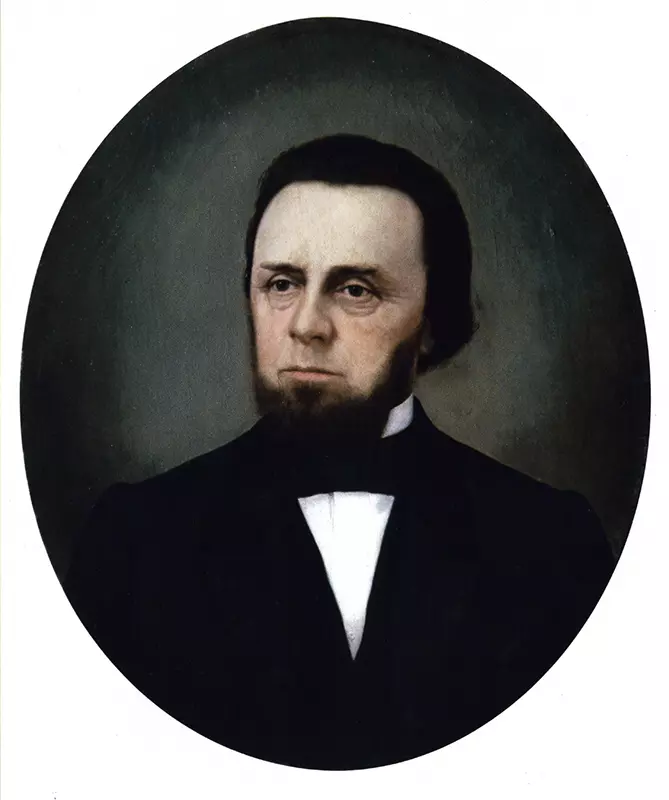 Rev. Anson Symthe. Source: Cleveland Public Library, Gift of Ralph Eddy Chapman. Circa 1888.
Rev. Anson Symthe. Source: Cleveland Public Library, Gift of Ralph Eddy Chapman. Circa 1888.
Rev. Wilson Reiff Steary
Rev. Wilson Reiff Stearly preached in the Middle Bass Club Chapel on August 17, 1902 and stayed at cottage of Middle Bass Club member Willis B. Hale. After studying for a year abroad in Paris and Berlin, Rev. Stearly enrolled and graduated from Union Theological Seminary. In 1889 he was ordained a minister in the Reformed Church and served as pastor of the Hough Avenue Reformed Church in Cleveland from 1889 to 1899. In 1900 joined the Episcopal Church and became rector of Emmanuel Church in Cleveland, Ohio from 1900 until 1909. Rev. Stearly later became the 4th Bishop of Newark in the Episcopal Church. Rev. Stearly was awarded a Doctor of Divinity from Kenyon College in 1915 and from Case Western Reserve University in 1916. (Source: Wikipedia)
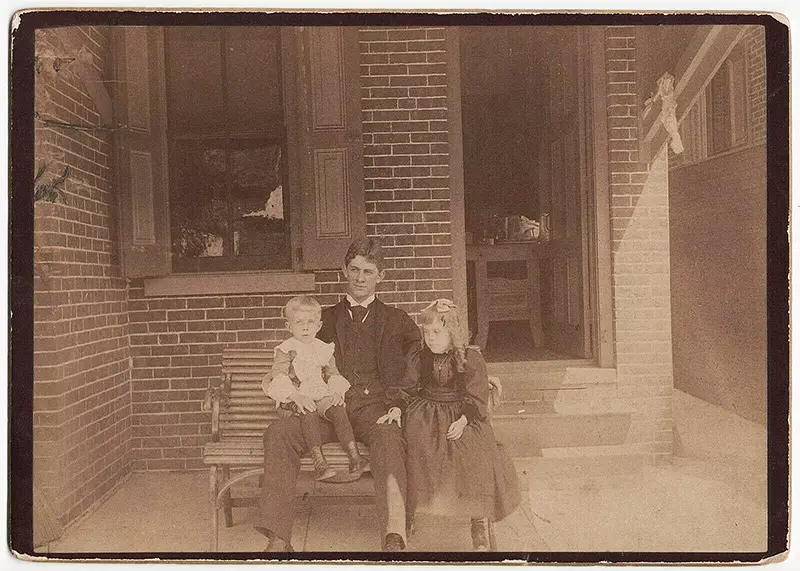 Rev. (and later Bishop) Wilson Reiff Stearly with his children, Source: Find a Grave
Rev. (and later Bishop) Wilson Reiff Stearly with his children, Source: Find a Grave
Professor Charles L. Williams
Professor Charles L. Williams led services in the Middle Bass Club Chapel on: August 24, 1902; July 17, 1904; July 15, 1906; August 9, 1908; August 23, 1908; August 30, 1908; August 8, 1909; August 15, 1909; August 28, 1910; July 2, 1911; August 6, 1911 and July 7, 1912. Professor Williams, another Rev. from Granville, Ohio, came to preach on Middle Bass Island following in the footsteps of the acting President of Denison University, Rev. Emory W. Hunt. He was a Professor of Rhetoric and English Literature at Denison University from 1893 until 1921. Interestingly, Professor Williams was a classmate of President Woodrow Wilson at Princeton University. Later, Professor Williams received his Doctor of Divinity from Crozier Theological Seminary at Upland, Pennsylvania. It should be noted that he wrote the following books: “The Story of Woodrow Wilson,” “A Study of Shakespeare as a Moral Writer” and “The American Student and the Road to Scholarship.” In 1902 Professor Williams stayed in Club House room 52 and was a guest of Middle Bass Club member Frederick J. Picard from Columbus, Ohio. From 1908 until 1912, Professor Williams appears to be the only minister to hold services in the Chapel as there are no other ministers listed in the Club House Guest Register books or the Middle Bass Chapel Association Records Book for those years.
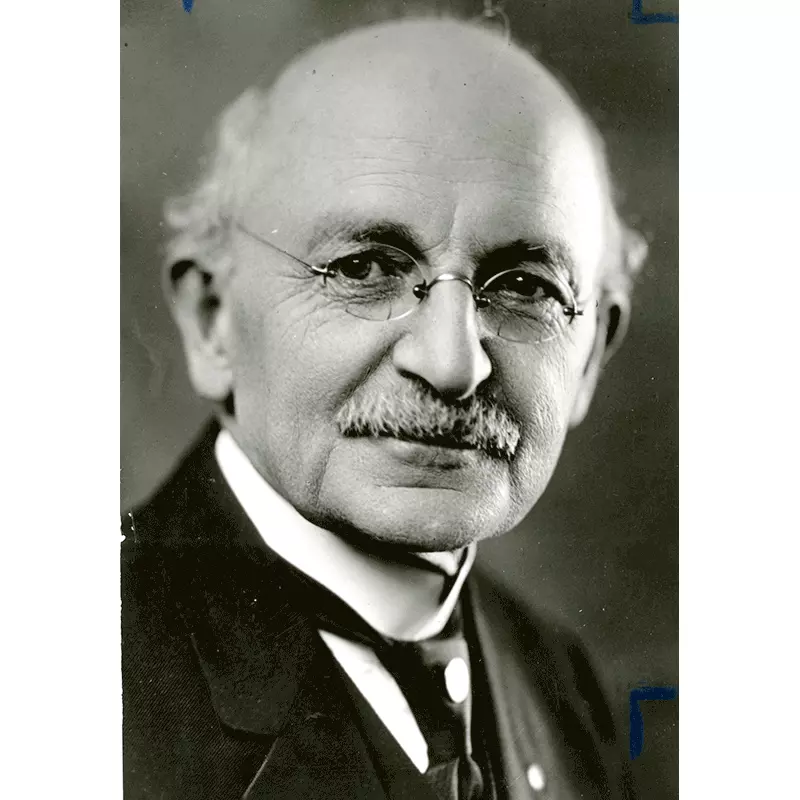 Portraits and a photo of Professor Charles L. Williams (multiple photos). Source: Denison University Archives & Special Collections
Portraits and a photo of Professor Charles L. Williams (multiple photos). Source: Denison University Archives & Special Collections
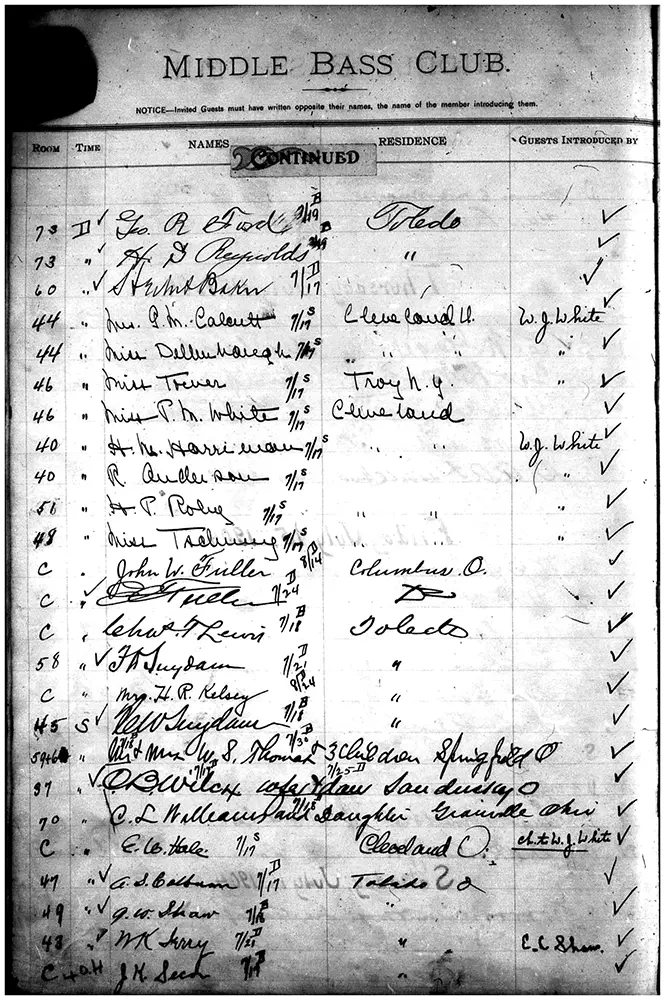 Middle Bass Club Guest Register entry: July 17, 1904
Middle Bass Club Guest Register entry: July 17, 1904
Rev. Thaddeus L. Wiltsee
Rev. Thaddeus L. Wiltsee from St. Paul’s Methodist Church in Toledo preached to the Middle Bass Club membership on July 5, 1885. He attended Northwestern University and then graduated from Ohio Wesleyan in 1873. Rev. Wiltsee spent time in Upper Sandusky and Marion before relocating to Toledo, Ohio where he was associated with the Broadway Church and St. Paul’s Methodist. During the 6 years spent in Toledo, Rev. Wiltsee came into contact with Middle Bass Club members. The Middle Bass Club membership respected Rev. Wiltsee’s professionalism and personality as he was invited to preach during a busy July 4th celebration weekend at the Middle Bass Club. Because of health concerns, Rev. Wiltsee left Toledo and moved out west where he was Superintendent of Missions in Arizona and established the first mission among the Navajo Indians. (Source: rootsweb)
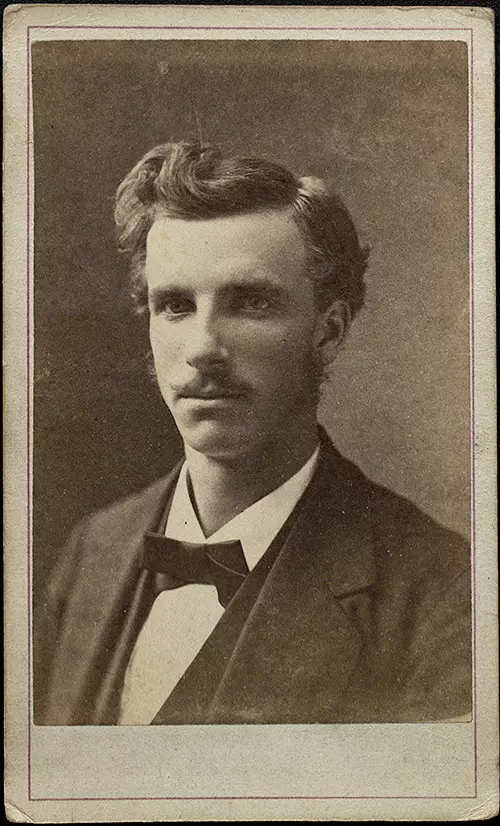 Rev. Thaddeus L. Wiltsee. Circa 1873. Source: Beeghly Library, Ohio Wesleyan University
Rev. Thaddeus L. Wiltsee. Circa 1873. Source: Beeghly Library, Ohio Wesleyan University
The Pulpit - Supplies
The only pulpit supplies (piano, hymnals, Sunday school papers) documented in the Middle Bass Chapel Association Records Book are listed below.
At the 1883 Annual Meeting held on August 6th, the Report of the Secretary [Miss Pamela Berdan] stated: “We also wish to return thanks to Mrs. Charles R. Messenger [Middle Bass Club member], who kindly donated a large Bible for the desk and above all, to Mr. William H. [Middle Bass Club member] Currier who each year, has most generously given us the use of a fine piano.” In 1884, a piano was rented from Whitney & Currier for $25.00. Since this was a significant cost, subscriptions for pianos were solicited in 1884 as well as the subscriptions for the Chapel. The subscriptions for pianos in the 1884 Treasurer’s Report totaled $25.10 and the subscriptions for the Chapel amounted to $34.50 highlighting both the high cost and importance of the Chapel having a piano. Tuning the piano in 1885 cost $6.50 and freight & tuning charges were $8.75 the following year. In 1887, the piano rental from Whitney & Currier was $36.15 and the freight was $1.50. The Records Book does not show any subscriptions for pianos after 1884.
The only other pulpit supplies identified in the Records Book include the following. In 1883, hymn books cost $25.20 and 50 lesson papers for use of Sunday School were purchased. In 1890, two dozen extra hymnals were purchased along with 6 large ones with music for the choir. In 1900, the Bible donated by Mrs. Charles R. Messenger was rebound.
The Money
The Middle Bass Chapel Association needed to raise money to maintain the Chapel building and fund the pulpit and other educational, literary and scientific programs. Methods of raising money documented in the Records Book included: member subscriptions, member and guest donations, fundraising activities and the lending library.
The Money - Member Subscriptions
Subscriptions (annual “membership fees”) were the primary fundraising method used by the Middle Bass Chapel Association. At the Annual Meeting on August 7, 1882: “It was decided that an annual fee of fifty cents should be solicited from each member, the sum to form a contingent fund.” The Secretary wrote letters to Middle Bass Club members asking them to pay the subscription fee of fifty cents for the Chapel each year. Often times, a committee was formed to assist the Secretary in writing and sending the subscription letters to the Middle Bass Club members. The subscription cost increased to a dollar in 1888 and stayed at this amount until 1907 which is the last year of the detailed records of the Middle Bass Club Chapel Association in the Records Book. If necessary, a notice would be placed at the Chapel or the Club House to remind the Middle Bass Club membership to pay the Chapel subscription. An attempt was made to modify the subscription process in 1899; the Middle Bass Chapel Association decided to write letters to the ladies of the Middle Bass Club instead of the gentlemen (who were considered the members). After discussion the following year, the Middle Bass Chapel Association reverted back to the original subscription method of raising money for the Chapel, i.e., writing letters to each member (i.e., the gentlemen) of the Middle Bass Club soliciting $1.00 from each. The Records Book notes that there were 80 subscriptions in 1881 amounting to $40.00 and 102 subscriptions in 1891 amounting to $102.00. Clearly, subscription dollars were not sufficient to cover Chapel expenses.
The Money – Member & Guest Donations
The only notation in the Records Book of a monetary donation aimed at the Sunday school was from Rev. Dr. Kemp of the Episcopal Church in Massillon, Ohio. Rev. Dr. Kemp preached in the Chapel on July 22, 1888 and contributed “twenty bills” for the use of the Sunday school.
To obtain member and guest donations, collection boxes were placed in the Middle Bass Club Chapel and Club House. At the 1887 Middle Bass Chapel Association Annual Meeting on August 2nd: “A motion was made and carried that a contribution box be placed in the Chapel for voluntary offerings.” The following year, at the Annual Meeting held on July 21, 1898: “It was mentioned that Mr. [Matthew] Shoemaker had suggested to some of the ladies the feasibility of placing a box in the Club House, during the fishing season, for contributions to the Chapel, as many of the visitors are guests of the Club and would probably be glad to contribute something. Mrs. George Hafer was requested to confer with Mr. Matthew Shoemaker in regard to this.” Unfortunately, collection box donations (contributors and/or dollar amounts) are not disclosed in the Records Book. As mentioned earlier, the construction of the Chapel was paid for by the 1881-1882 Middle Bass Club membership. However, once built the Middle Bass Club members and their guests (after 1882) donated to the Chapel fund using the collection boxes. Thus, the Club House Guest Register books and the Middle Bass Club membership lists post 1882 provide the names of donors to the Chapel fund.
The Money – Fundraising Activities
To supplement the subscriptions and donations, the Middle Bass Chapel Association planned and supervised fundraising activities such as lectures, concerts, parties and “sales of fancy articles.” The lectures, common in the early years of the Chapel, raised money for the treasury and provided educational, literary and scientific programs for the membership. The concerts were held in either the Chapel or Rehberg Hall. Middle Bass Club members participated in the concerts and/or invited the performers. The parties documented include an extravagant 4th of July festival held at the Chapel as well as card parties. The annual “sale of fancy articles” (i.e., upscale consignment sale) was held in the Club House lobby. The Middle Bass Chapel Association Records Book details the fundraising activities below.
- On Friday, August 18, 1882, a lecture titled “Bent” was given by Rev. Colonel Anderson of the Westminster Presbyterian Church of Toledo to benefit the minister’s fund. Besides the lecture, Rev. Colonel Anderson led a morning and evening service in the Chapel on Sunday, August 20, 1882.
- On July 22, 1883, Dr. Byers, Secretary of Ohio State Charities, addressed an audience at five o’clock in the afternoon. Byers was acquainted with members of the Middle Bass Club through the Republican Party in Ohio. During the Campaign of 1869, Rev. Dr. Byers gave the opening prayer at the Ohio Convention of the Republican Party of Ohio on June 23rd when they nominated Governor Rutherford B. Hayes. Middle Bass Club member Mr. Welcome Otis Parker was a member of the Permanent Organization during the convention. (Source: History of the Republican Party in Ohio by Joseph P. Smith, 1856 -1898, p. 262)
- On August 15, 1885, a concert was conducted by Mrs. Ford, Mrs. Keith, Miss Keith, Mr. Avery and the orchestra. This concert contributed $82.50 to the Chapel fund. It is likely that Mrs. Ford was a Middle Bass Club member. There is no indication which orchestra performed in the concert.
- On August 7, 1886, a concert performance was given by Mrs. Ford, Mrs. Keith, Miss Feideloly, Miss Potter, Miss Fuller, Mr. Fred Sholes, Mr. Gates and Mr. Keese. The Records Book mentions that the Secretary was authorized to send complimentary tickets to several parties and that Mrs. Francis Pilgrim Isherwood sold tickets for the concert the night before at the Club House. It is plausible that Mrs. Ford, Miss Potter and/or Miss Fuller were members of the Middle Bass Club. The images/exhibits/MiddleBassClub/archive-docs/records-book.pdf does not indicate if the concert was held in the Chapel or Rehberg Hall or how much money was raised.
- On August 16, 1886, Rev. Dr. Kilwig of the Lutheran Church of Akron, Ohio delivered a lecture, “King’s English” which added $23.75 to the Chapel fund. Rev. Dr. Kilwig led a service in the Chapel the day before the lecture.
- On August 12, 1887, a concert performance was held in Rehberg Hall by Mrs. Ford, Mrs. Keith Mr. Chaspontier, Lanman, Dr. and Mrs. Baker and Miss Sawyer. This concert increased the Chapel treasury by $105.75. It is possible that Mrs. Ford and/or Mrs. Baker were members of the Middle Bass Club. The Records Book does not indicate if the concert was held in the Chapel or Rehberg Hall.
- In 1888, Governor Charles Foster paid the $15 remaining balance from the cost of the Rehberg portrait to the Middle Bass Chapel Association. Unfortunately, the Records Book does not indicate how Governor Charles Foster obtained the portrait or the total cost added to the Chapel fund. Interestingly, a portrait of “Count” Rehberg hangs in our cottage in the Middle Bass Club. Recently we discovered that the portrait is not a photograph; it’s a charcoal drawing over an underexposed photograph which was a popular form of art at that time. According to the Toledo Blade on August 9, 1890: “Governor Foster occupies the cottage of C. E. Burke during his sojourn at the club.” Clarence Elisha Burke bought our cottage in October 1889. Perhaps the Rehberg portrait mentioned in the Records Book hangs over our fireplace?
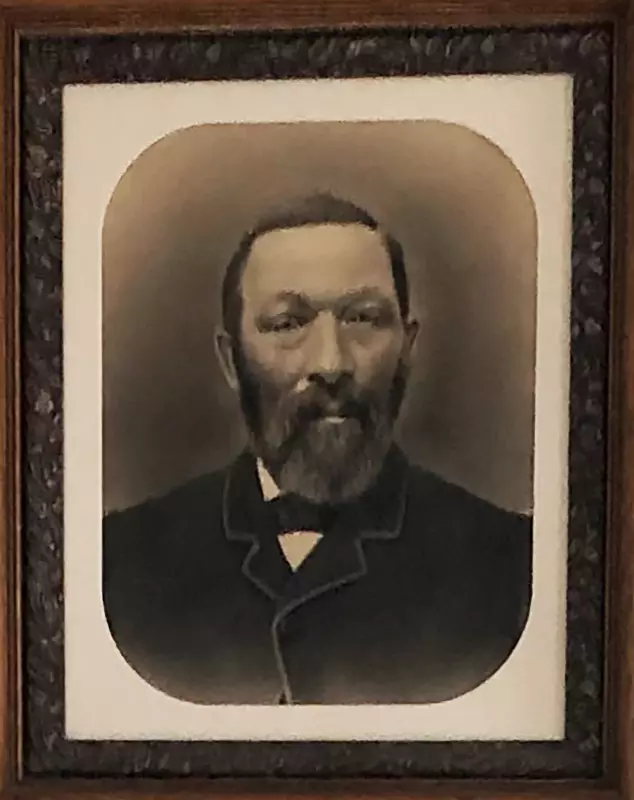 “Count” William Rehberg Portrait. Photo taken by Marie Demer Rader, Summer 2021
“Count” William Rehberg Portrait. Photo taken by Marie Demer Rader, Summer 2021
- On July 28, 1889, a concert was held at Rehberg Hall. Those participating included: Mrs. Gibsone, Miss Fuller, Miss Nellie Cook, Miss Amelia Hegmann, Mr. Singer of Vienna, Austria, Mr. Currier, Mr. Doolittle and Mr. Ecker. It is possible that Miss Fuller and/or Mr. Currier were members of the Middle Bass Club. No fundraising amount was listed for the concert.
- On August 11, 1889, a lecture, “Across the Continent,” was delivered by Rev. Mr. T. F. Hildreth of the Methodist Church in Cleveland, Ohio. The following day Rev. Hildreth preached in the Chapel.
- On August 9, 1890, Dr. Willits of the Third Street Presbyterian Church in Dayton, Ohio delivered a lecture titled “Sunshine.” Willits delivered a sermon in the Chapel the following day.
- On August 18, 1890, recitations by Mr. Backus with music by Miss Dodge of Cleveland and Mr. Gibson of Toledo were conducted for the benefit of the library. The performance netted $29.05 for the benefit of the library. It is probable that Mr. Backus and Miss Dodge were members of the Middle Bass Club.
- On August 15, 1891, a concert was given by Mr. Alfred George Robyn of St. Louis who was assisted by Mrs. Ida Bond Young of New York and others. Robyn was a renown pianist, organist and composer. In 1891, Mr. Robyn was noted for a ballad titled You.
Alfred George Robyn, Portrait (left); You by Alfred G, Robyn, Cover (right)
Mr. Robyn was associated with Middle Bass Club member Henry Martyn Blossom Sr. from St. Louis, Missouri. Besides being influential in the field of insurance, Henry Martyn Blossom Sr. composed Broadway musicals called operettas. In fact, in 1904 he wrote the lyrics for The Yankee Consul which was composed by Alfred G. Robyn.
- On July 4, 1892, the Odium Club of Cleveland, Ohio gave a concert.
- On Sunday, August 3, 1896 a concert was to be given to benefit the Chapel. A committee comprised of Mrs. Oliver Rodgers, Mrs. David M. Massie and Miss Martha Rodgers were in charge. It is unknown if a concert occurred on this day.
- On July 4, 1898, a lawn fete party was held on the Chapel lawn. Alexander W. Scott was requested to place a notice of the lawn fete in the Toledo newspapers. At the May 24, 1898 informal meeting “Mrs. [James Scott or Oliver?] to have charge. Mrs. George Hafer was appointed to look after the fancy work table, Mrs. Clarence Elisha Burke to see to a fish pond, and Mrs. Thomas C. Rowland and Mrs. Peter Frederick Berdan to see to the ice cream and cake, Mrs. [Samuel Bryant or E. M.?] Wood and Mrs. James Clark to have charge of the lemonade.” The lawn fete was so successful that the Middle Bass Chapel Association planned to have another one the following year. Sadly, the lawn fete in 1899 never happened due to scheduling conflicts.
- On July 8, 1899, Miss Olive Colton delivered an Illustrated lecture in the Chapel. Olive Colton is the daughter of Middle Bass Club member Abram Walter Colton and his wife Catherine VanHorne. From the July 21, 1898 Trustee meeting notes by Secretary Miss Edna Rowland [daughter of member Thomas Chapman Rowland and his wife Sarah Jane Miller]: “The first subject brought before the meeting was the consideration of Miss Olive Colton’s offer to give an illustrated lecture in the Chapel July 8th, for the benefit of the Chapel; the ladies to pay the expenses of herself and maid from Toledo to Middle Bass, and from Middle Bass to Put-in-Bay, also their hotel expenses for two days, and three dollars for filling gas tank. The ladies decided to accept Miss Colton’s offer.”
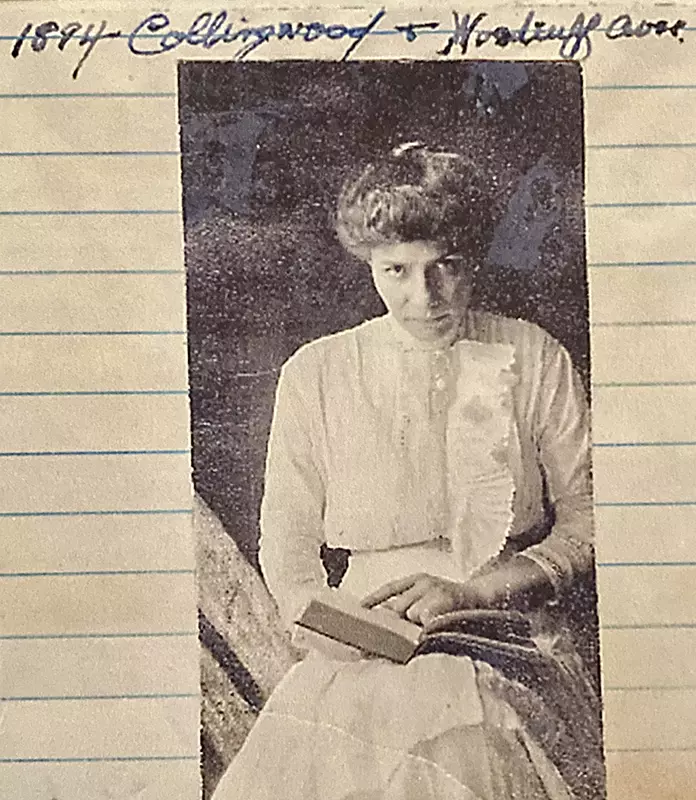 Olive Colton, Toledo 1894. Lisa Fine Personal Collection
Olive Colton, Toledo 1894. Lisa Fine Personal Collection
The Guest Register page below shows Olive Colton’s maid, Katie Mohn (?), arrived on Saturday July 8, 1899.
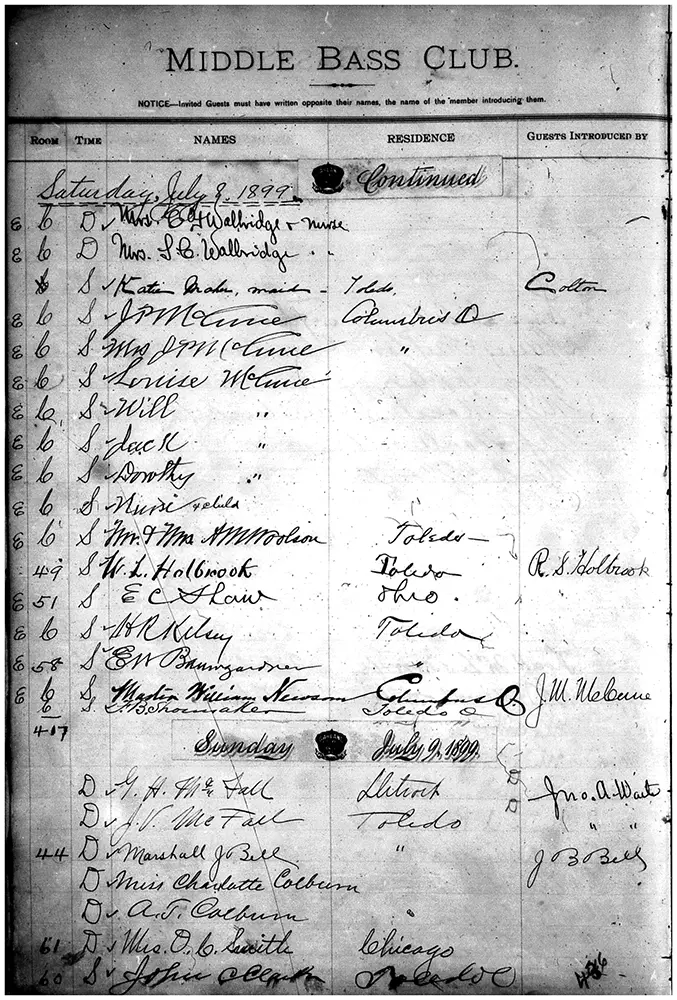 Middle Bass Club Guest Register entry: July 8, 1899
Middle Bass Club Guest Register entry: July 8, 1899
- Each August from 1899 to 1908 (1908 being the last year of entries in the Records Book), the Middle Bass Chapel Association arranged a “Sale of Fancy Articles” in the Club House Parlor. In 1900 they added $61.00 to the Chapel treasury and in 1901 they raised an amazing $101.26.
- On August 10, 1900, a card party tallied $45.60 for the Chapel fund.
- In 1901, at the Annual Meeting on August 19th, the Secretary was instructed to write a letter to Mr. Charles Scadding making the necessary arrangements as to time and cost for an illustrated lecture he kindly offered to give for the benefit of the Chapel. It is unknown whether Rev. Scadding put on the lecture.
The Money – Lending Library
Another program that fulfilled the Chapel’s mission to provide literary programs was the lending library which also added money to the Chapel’s treasury. The circulation library began in 1889 with $70 and a bookcase. Mrs. Alexander W. Scott, Mrs. James Scott Rodgers, Mrs. Aaron Lufkin Kelsey, Mrs. Thomas C. Rowland and Mrs. Peter Frederick Berdan each gave $10. It should be noted that these ladies were Trustees in 1887 that advanced $10 to pay for Chapel improvements as the treasury had insufficient funds. When the Middle Bass Chapel Association reimbursed the Trustees, they decided to donate those funds($50) to start a Chapel library. Additionally, Mr. and Mrs. Edward C. Bodman donated $20 and a bookcase for the cause.
The lending library supported itself and often times added money to the Chapel fund. In 1890, the Middle Bass Chapel Association members voted to spend $20 of the $34.36 collected from lending books to purchase new books for the library. In 1892, the Secretary [Miss Pamela Berdan] reported “$13 still remaining of the fund for the purchase of books. Having been connected with the Book Club of Toledo, the Secretary was asked to make a list of books she thought would be available for the library and send it to Mrs. Alexander W. Scott.” In 1897, Mrs. Alexander W. Scott and Miss Pamela Berdan were allotted $20 from the treasury to purchase new books. “It was thought best that the books be bought and sent to the island early in the season, not later than the middle of June. Mrs. George Hafer was appointed to receive and catalogue them.” In 1899, two new bookcases were added as the old ones were overcrowded. Thankfully, one Middle Bass Club Chapel library book exists today; it resides at the Taliak family’s “Grape Cottage” which was annexed into the Middle Bass Club circa 1980.
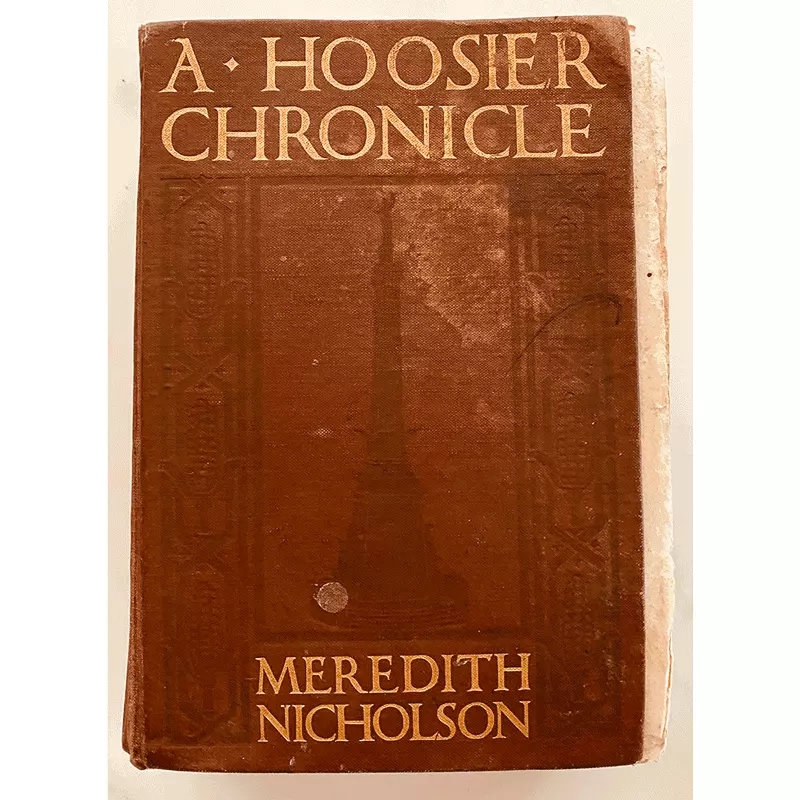 Middle Bass Club Chapel Library Book (multiple pages). Taliak Family Personal Collection. Photo by Marie Demer Rader, Summer 2021
Middle Bass Club Chapel Library Book (multiple pages). Taliak Family Personal Collection. Photo by Marie Demer Rader, Summer 2021
Brown-Hafer Chapel Wedding
For many years the Chapel provided church services, Sunday school, lectures, concerts, parties and housed a lending library to bring the Middle Bass Club families together for religious, educational and social purposes. Based upon the Records Book, the ladies were extremely dedicated to the Chapel; they met at various times during the year to plan the Chapel’s programs for the summer and worked hard to make them successful. The Brown-Hafer Wedding story properly illustrates how incredibly special the Chapel was to the Middle Bass Club membership. Walter Folger Brown and Katherine Mann Hafer Sheldon met at the Middle Bass Club and fell in love. Instead of holding their wedding ceremony in the larger, more prestigious hometown churches in Toledo and Cincinnati, the couple decided to wed in the tiny Chapel located in their beloved Middle Bass Club.
Walter Folger Brown, the groom, was a member of the Middle Bass Club from 1902 to 1907 (based on available membership lists) and was a guest in earlier years according to the Middle Bass Club Guest Register books. He was a prominent attorney from Toledo, Ohio who was very involved in the Ohio Republican party beginning with William McKinely‘s campaign for Governor in 1891. Walter Folger Brown was also influential in helping William Howard Taft gain the Presidential nomination in 1908. (As a matter of coincidence, President William Howard Taft was a frequent guest in the Middle Bass Club; he enjoyed the bass fishing.) Walter Folger Brown would go on to become the Assistant Secretary of Commerce from 1927 to 1929 and the 49th United States Postmaster General from 1929 to 1933 under President Herbert Hoover.
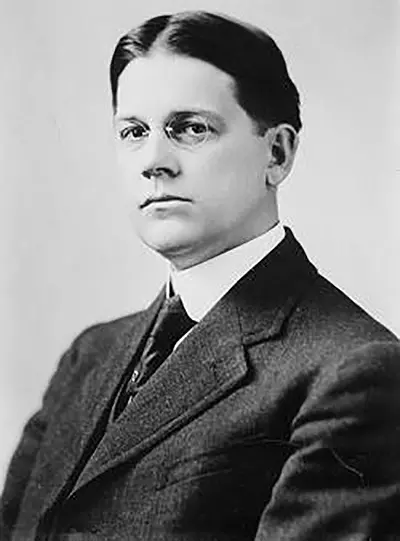 Walter Folger Brown. Middle Bass Club member 1902 to 1907. He married Katherine Hafer Sheldon on September 10, 1903. They were married by Charles H. Tucker, rector St. Paul's Episcopal Church, Put in Bay, Ohio. Source: Wikipedia & Ancestry research.
Walter Folger Brown. Middle Bass Club member 1902 to 1907. He married Katherine Hafer Sheldon on September 10, 1903. They were married by Charles H. Tucker, rector St. Paul's Episcopal Church, Put in Bay, Ohio. Source: Wikipedia & Ancestry research.
Katherine Mann Hafer Sheldon, the bride, was the daughter of Middle Bass Club member George Hafer and his wife Kate Mann Ocheltree and the widow of Ralph Sheldon who died in 1897. George Hafer was a member of the Middle Bass Club from 1888 to 1907 (based on available membership lists). He was a well-respected businessman from Cincinnati, Ohio who served as the “last” mayor of Avondale, Ohio (Avondale was annexed to Cincinnati, Ohio in 1896). George Hafer was appointed Receiver and then once the company was back on track, he was promoted to President of the Cincinnati, Lebanon and Northern Railroad. Kate Mann Hafer, the bride’s mother, served as a Middle Bass Chapel Association Trustee from 1890 to 1910 and was elected Treasurer from 1895 to 1906 (this is the last year that the Records Book identified officers). The Hafer family owned a cottage on Grove Avenue in the Middle Bass Club that exists today; William Rehberg’s 1st Addition: lot 32 which is currently owned by the Aquilla family.
It is apparent that Walter Folger Brown and the Hafer family enjoyed spending time at the Middle Bass Club and that the Chapel was important to them. Therefore, it is understandable that the couple married in the Chapel. Sadly, I have been unable to locate any wedding photos. However, we have the 1903 Guest Register book which contains the names of the Hafer and Brown family members who attended the wedding and a copy of their Marriage Certificate. George Hafer (father of the bride) and Walter F. Brown (groom) signed in on Wednesday, September 9, 1903 and stayed at a cottage (Hafer). It is unknown whether the groom stayed at the Hafer cottage or another member’s cottage. Members of the groom’s family arrived on the same day: Miss Sarah R. Folger (groom’s cousin) and James Marshall Brown (groom’s father) signed in as guests of Walter F. Brown and stayed in the Club House, rooms 56 & 57. Members of the bride’s family also arrived that day: Edward Hafer (bride’s brother), Frank Hafer (bride’s brother) and Edward Frazier Hafter (bride’s nephew) signed in as guests and stayed in a cottage (Hafer). The groom’s brother, Ralph P. Brown, arrived on the day of the wedding (Thursday, September 10, 1903) and stayed in the Club House, room 54. It is unclear when the bride and her mother arrived at the Middle Bass Club.
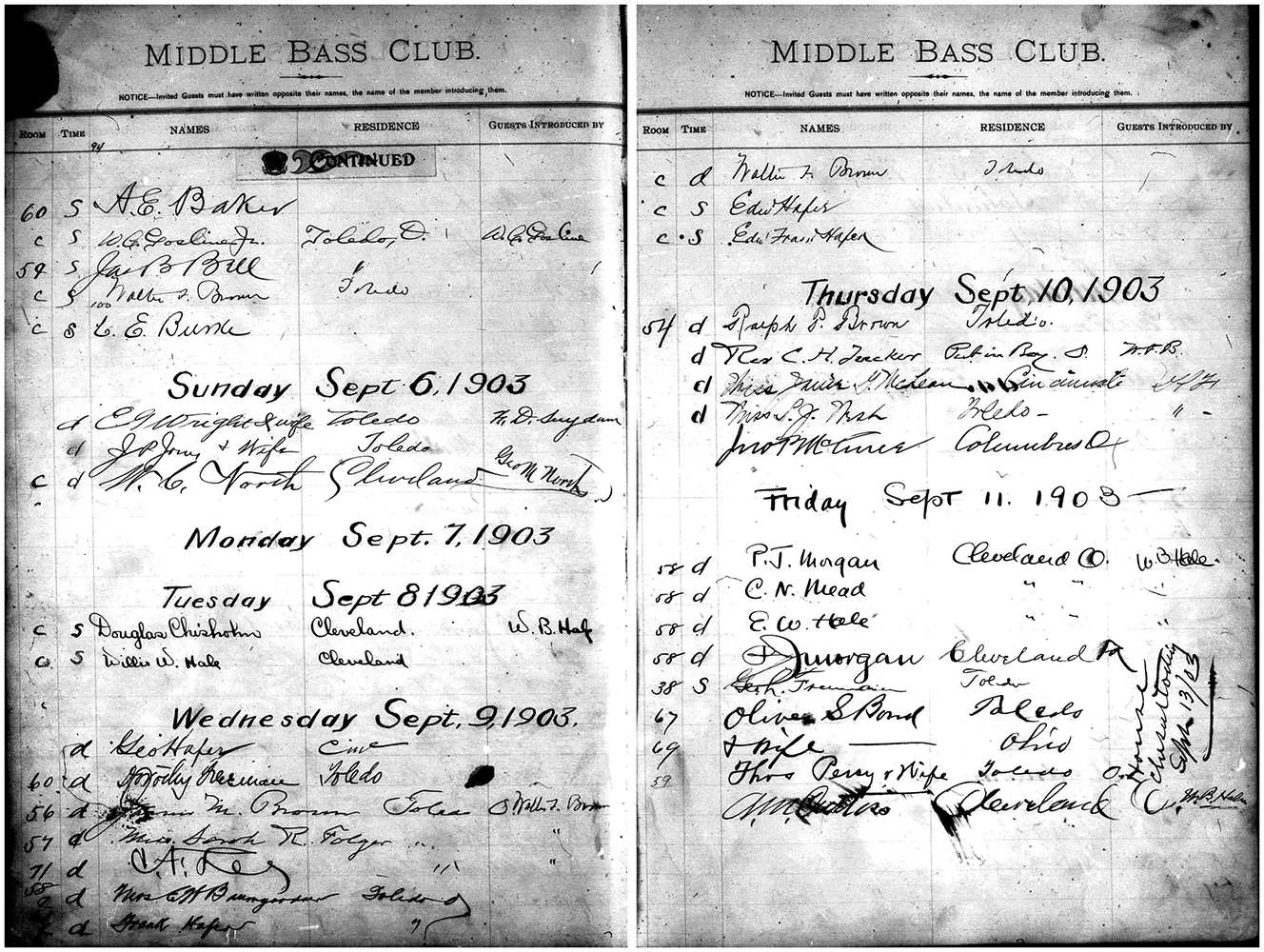 Middle Bass Club Guest Register entry: September 9. 1903. Two pages showing entries from September 5 through 11
Middle Bass Club Guest Register entry: September 9. 1903. Two pages showing entries from September 5 through 11
“On Sept. 10, 1903, at Middle Bass Island, in Lake Erie, he [Walter Folger Brown] was united in marriage to Miss Katherine Hafer, daughter of George Hafer a well-known citizen of Cincinnati.” (Source: In the Memoirs of Lucas County & City of Toledo – Vol. II – Publ. 1910 – Page 179.) The Folger-Hafer Marriage Certificate is signed by Charles H. Tucker, Rector St. Paul’s Reformed Episcopal Church (REC), Put-in-Bay, Ohio. It should be noted that Rev. Charles H. Tucker signed in on the Middle Bass Club House’s Guest Register book on Thursday, Sept. 10, 1903 (see above), at a time of “d” (which stands for dinner - the daytime meal) and did not have a room number or cottage indicated. From this notation we can assume that Rev. Charles H. Tucker did not stay overnight in the Middle Bass Club; he most likely took a boat back to Put-in-Bay after the wedding ceremony and/or celebration meal at the Club House.
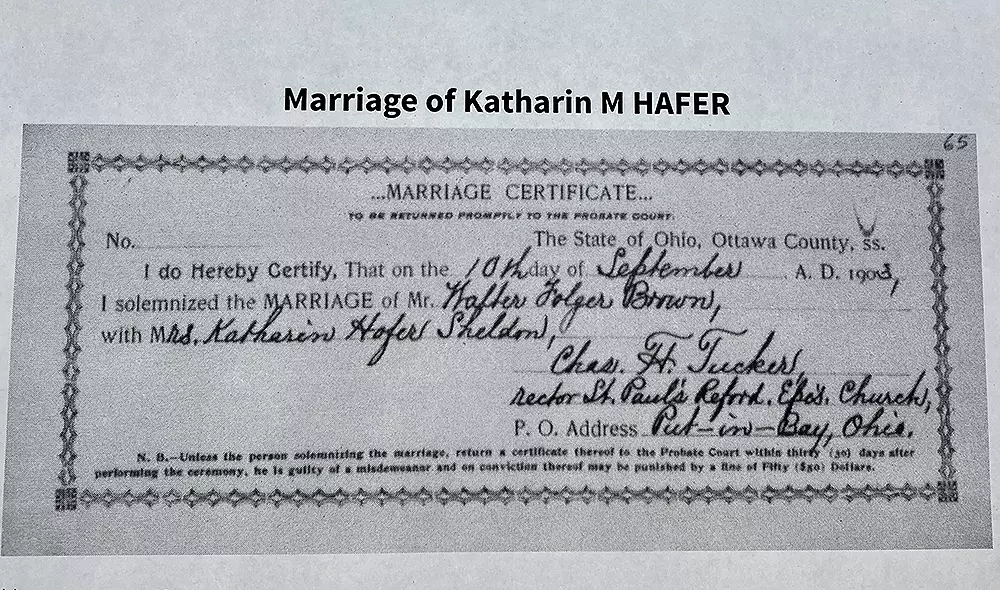 Brown-Hafer Marriage Certificate. Source: Ancestry
Brown-Hafer Marriage Certificate. Source: Ancestry
Rev. Tucker graduated from Kenyon College in 1866. In fact, he signed the document to establish the Reformed Church on December 2, 1874. Rev. Tucker served the following parishes: Emmanuel Church (Chicago, Illinois), Church of our Redeemer (Philadelphia, Pennsylvania), Mustang Creek and White Oak (Indiana Territory), First Church (Boston, Massachusetts) and St. Luke’s Reformed Church (Boston, Massachusetts). At the suggestion of Jay Cooke of Gibraltar Island, Rev. Tucker accepted the position to become Rector of St. Paul’s REC at Put in Bay, Ohio in 1898 and served the parish until 1906. (Source: St. Paul’s Episcopal Church, Put in Bay, Ohio) Perhaps Rev. Tucker met Jay Cooke while at Kenyon College or in Philadelphia?
Based upon available Middle Bass Club records, this was the only Chapel wedding. Likewise, the St. Paul’s Episcopal Church records indicate that Rev. Tucker performed wedding ceremonies for a number of Middle Bass Island people, but this was the only one showing the wedding was held at the Toledo Club. Specifically, the St. Paul’s records confirm the Middle Bass Wedding on September 10th and indicate that the groom was 34 years old, the bride was 30 and the wedding took place at the “Toledo Club House” (i.e., the Middle Bass Club). (Source: St. Paul’s Episcopal Church, Put in Bay, Ohio)
A proper way to end the Middle Bass Club Chapel Story is to applaud the ladies of the Middle Bass Chapel Association. They succeeded in their efforts to build a beautiful Chapel on the grounds of the Middle Bass Club and provide religious, educational, literary and scientific programs for the membership. Sadly, the Chapel no longer exists today but I hope by sharing its history the Chapel came back to life for a minute. If you have any photographs or information to share about the Middle Bass Club Chapel, please contact me and we will update the story (
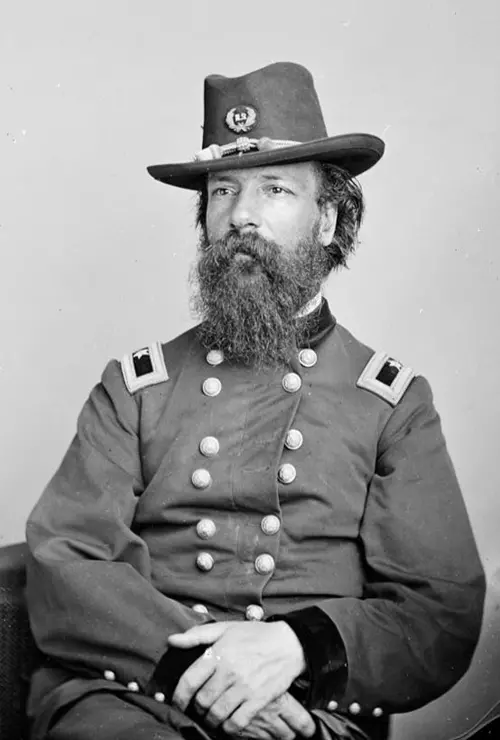 General John Wallace Fuller. Middle Bass Club member 1877 to 1890 with Mrs. Fuller being a member until 1898. Source: ironbrigader.com
General John Wallace Fuller. Middle Bass Club member 1877 to 1890 with Mrs. Fuller being a member until 1898. Source: ironbrigader.com
General John Wallace Fuller
John Wallace Fuller was born in Cambridge, England in 1826 and moved with his family to Utica, New York where he established a successful book selling and publishing business. After a fire ruined his business in 1859, Mr. Fuller moved to Toledo to start over. Although his publishing business was flourishing when the Civil War began, Mr. Fuller decided to join the Union cause.
The highlights of General Fuller’s military career include:
- Elected Colonel of the 27th Ohio Volunteer Infantry (OVI) in February 1862 and joined General John Pope with successful battles in New Madrid and Island No. 10 along the Mississippi river. (Source: Memoirs of Lucas Country & City of Toledo, Vol. II, by Harvey Scribner, Page 40)
- Given command of the “Ohio Brigade” (27th, 39th, 43rd & 63rd Ohio regiments) operating in Mississippi in 1862.
- “For the valatorious action of the brigade at Corinth, Fuller was personally thanked by the Union Commander, General William S. Rosecrans.” (Source: Memoirs of Lucas Country & City of Toledo, Vol. II, by Harvey Scribner, Page 41)
- Commanded a post at Memphis through the winter of 1863.
- Promoted to Brigadier General on January 5, 1864 for his bravery and leadership.
- Led a division during the Battle of Atlanta during the summer of 1864. (Source: Historica Wiki website)
- His brigade took part in General William Tecumseh Sherman’s March to the Sea and the campaign in South Carolina and North Carolina. (Source: Historica Wiki website)
- Brevetted to the rank of Major General of Volunteers on March 13, 1865 “for gallant and meritorious services.” (Source: History of Ohio, The Rise and Progress of an American State by Emilius O. Randall and Daniel J. Ryan, 1915, p. 199)
- Was one of the few generals in the Civil War who was not born in the United States.
After the war, General Fuller was influential in the mercantile business; becoming a senior partner in the wholesale shoe and boot house called Fuller, Childs and Company. In addition to running the shoe and boot business, General Fuller served as collector of the port of Toledo from 1874 until 1881 (appointed by both Presidents’ Grant and Hayes), Director of the Merchants’ National Bank and Director of the Toledo Moulding Company.
General Fuller was a founding member of the Middle Bass Club (MBC) in 1877 and was a member until his death in 1891; his wife Anna retained MBC membership until 1898. General Fuller had business and family relationships within the Club.
- His son, Edward C., a manager at the Ohio Pipe Company in Columbus, was a member of the MBC from 1907 until 1915.
- His daughter Florence married Thomas A. Taylor, owner of the old Manhattan Mill in Toledo, who was a MBC member in 1881.
- His business partner True W. Childs was another founding member of the MBC whose membership remained active until 1904.
General Fuller is buried in Woodlawn Cemetery in Toledo.
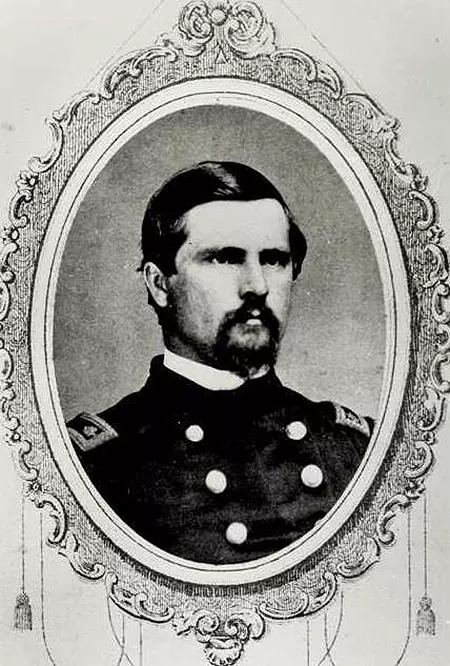 Dr. John Birchard Rice. Middle Bass Club member from 1881 to 1890. Fremont, Ohio. Source: Find A Grave
Dr. John Birchard Rice. Middle Bass Club member from 1881 to 1890. Fremont, Ohio. Source: Find A Grave
Dr. John Birchard Rice
John Birchard Rice was born in 1832 in Lower Sandusky (now Fremont), Ohio. He studied at Oberlin College for two years and then enrolled at University of Michigan Medical School where he graduated in 1857. Dr. Rice continued his medical training at Jefferson Medical College in Philadelphia and at clinics in Bellevue Hospital in New York City. He married Sarah E. Wilson in 1861 and was practicing medicine with his father, Dr. Robert S. Rice in Fremont at the onset of the Civil War. Dr. Rice volunteered to serve and was appointed Assistant Surgeon of the 10th Regiment Ohio Volunteer Infantry (OVI) serving in West Virginia. In 1861 he was promoted to Surgeon and assigned to the 72nd OVI where he stayed until the end of the war.
- “Dr. Rice was handicapped in his surgical work during the war by a complete lack of antiseptic facilities … and he possessed only an equipment of an old time saw and lancet and had no sanitary protection even for himself or his patients.” (History of Northwest Ohio, Vol. III, by Nevin O. Winter, LITT D, 1917, p. 811)
- One surgical achievement by Dr. Rice during the Civil War was an elbow joint resection surgery performed on Private J. L. Jackson of the 72nd OVI, Company A. Private Jackson survived, recovered and later became a night watchman in the Treasury Department in Washington, D.C. (History of Northwest Ohio, Vol. III, by Nevin O. Winter, LITT D, 1917, p. 811)
After the war, Dr. Rice returned home to his wife and medical practice in Fremont, now working with his brother Dr. Robert Harvey Rice. He was a faculty member of the Charity Hospital Medical College of Cleveland and a lecturer on military surgery and obstetrics in the University of Wooster. “Throughout the remainder of his life he occupied a recognized position as one of the foremost surgeons and physicians of that portion of Ohio.” (History of Ohio, The Rise and Progress of an American State by Emilius O. Randall and Daniel J. Ryan, 1915, p. 654)
Besides medicine, he founded the Trommer Extract of Malt Co in 1875 with his brother Dr. Robert H. Rice, Stephen Buckland and Dr. Gustavus A. Gessner. Politically, Dr. Rice served as a U.S. Congressman from Ohio’s 13th district from 1881 until 1883; he decided to return to Fremont after one term.
Dr. John B. Rice was a member of the Middle Bass Club (MBC) from 1881 to 1890 and had many family and business relationships within the Club.
- One brother, Dr. Robert H. Rice joined the MBC in 1881 and remained a member until 1902. Robert H Rice served in the Civil War, Unit B of the 176th Ohio Infantry.
- A second brother, Charles Fitch Rice joined the MBC in 1888.
- A third brother, Alfred H. Rice, was a member of the MBC from 1888 until 1895 and was involved in the mercantile business and a well-respected attorney. Alfred Rice served in the Civil War in the 72nd
- His brother in law, Charles Granville Wilson, an attorney and banker from Fremont was also a MBC member in 1888.
- Gustavus A. Gessner of the Tommer Extract of Malt Co. was also a MBC member from 1881 to 1890. Dr. Gessner was doctor in the Civil War assigned to the 21st Regiment OVI.
Dr. Rice is buried in Oakwood Cemetery in Fremont.
It should be noted that the Rutherford B. Hayes Presidential Library has a collection of Rice family correspondence from the Civil War.
General Wager Swayne. Middle Bass Club member 1877. Sources: Encyclopedia of Alabama (left); Wikipedia (right).
General Wager Swayne
Wager Swayne’s parents moved from Virginia to “free territory” because of their strong opposition to slavery. In fact, his mother freed her inherited slaves in Virginia. Later Wager Swayne was born in Columbus, Ohio in 1834. He graduated from Yale in 1856 and then Cincinnati Law School in 1859 and was a practicing lawyer in Toledo at the onset of the Civil War. It should be mentioned that in 1861, Wager Swayne’s father, Noah Haynes Swayne Sr., was President Lincoln’s first appointee to the United States Supreme Court. Associate Justice Noah Haynes Swayne served until 1881 and was a strong supporter of President Lincoln’s Civil War measures.
The highlights of General Swayne’s military career include:
- Appointed Major in the Union Army, 43rd Ohio Volunteer Infantry (OVI) by Ohio Governor William Dennison on August 31, 1861.
- “Participated in the capture of New Madrid and Island Number Ten and in the campaign down the Mississippi River, for much of the time being in command of the regiment, as its colonel, J.L. Kirby Smith was occupied with the command of the brigade.” (History of Ohio, The Rise and Progress of an American State by Emilius O. Randall and Daniel J. Ryan, 1915, p. 152)
- Awarded the Medal of Honor in August 1893 for “Conspicuous gallantry in restoring order at a critical moment and leading his regiment in a charge” during the second Battle of Corinth in Mississippi when his commanding officer Colonel J. L. Kirby Smith was mortally wounded on October 4, 1862. (Source: Congressional Medal of Honor Society website) General Grenville M. Dodge remarked, “Under a withering fire he changed front without confusion, a movement that would have tried the mettle and steadiness of any regiment that ever saw a battlefield, and, together with the Sixty-third Ohio, he is credited with defeating the determined effort of the enemy to take Forts Williams and Robinette.” (History of Ohio, The Rise and Progress of an American State by Emilius O. Randall and Daniel J. Ryan, 1915, p. 152)
- “Swayne led the 43rd OVI with distinction during the Atlanta Campaign until February 2, 1865 when he suffered a severe wound at the Battle of Rivers’ Bridge in South Carolina which resulted in the amputation of his right leg.” (Source: Wikipedia)
- Appointed Brigadier General of Volunteers on March 13, 1865 by President Abraham Lincoln, confirmed by Congress on March 10, 1865. (Source: Wikipedia)
- Appointed Major General of Volunteers on May 1, 1866 by President Andrew Jackson, confirmed by Congress on April 26, 1866. He was the last Major General of Volunteers appointed during the American Civil War. (Source: Wikipedia)
- Commissioned Colonel of the newly authorized 45thS. Infantry which was later consolidated into the 14th U.S. Infantry in 1869.
- Brevetted Brigadier and Major General, United States Army in 1867. General Swayne left the Volunteer Army but remained in the United States Army.
- Served as Assistant Commissioner of the Alabama Freedmen’s Bureau until 1868 where he “instituted various enterprises for the education of the blacks to provide them with sustenance and the opportunity to become self supporting.” (History of Ohio, The Rise and Progress of an American State by Emilius O. Randall and Daniel J. Ryan, 1915, p. 154) General Swayne is credited with securing funds to establish temporary schools and permanent educational institutions at Talladega, Montgomery and Mobile constituting “the first educational privilege of the colored people of that state had ever enjoyed.” (Source: History of Ohio, The Rise and Progress of an American State by Emilius O. Randall and Daniel J. Ryan, 1915, p. 154)
After Alabama, General Swayne was assigned to duty in the war department at Washington. In 1868 General Swayne married Ellen Harris from Louisville, Kentucky. Upon his retirement in 1870, General Swayne returned to Toledo to practice law and remained there until 1879. He then moved to New York City to serve as counsel for several significant railroad and telegraph companies.
General Swayne was a founding member of the Middle Bass Club (MBC) in 1877 and had numerous family relationships within the Club membership.
- One brother, Francis Bond Swayne was a founding member of the MBC who retained his membership until 1898. He moved to New York City where he was a noteworthy railroad attorney. Francis B. Swayne’s wife, Helen Young, was the sister of 2 MBC members: Horatio Sam Young and Morrison Waite Young.
- Horatio Sam Young was a founding MBC member who kept his membership until his death in 1894; his wife Antoinette King remained a member until 1904 His father in law, Francis J. King, was a member from 1881 until 1890; his wife continued to be a member until 1904. It should be noted that Horatio S. Young served in the Civil War, 130th OVI, Company C.
- Morrison Waite Young was a MBC member in 1904. He married Kittie Cummings whose father John Cummings was a member from 1881 until 1907, Uncle Joseph W. Cummings was a founding club member active until 1898 and Uncle William Cummings was a MBC member from 1888 until 1898. John Cummings was a Toledo broker and businessman. Joseph W. Cumings was an attorney and judge who “enlisted in an Indiana company in the Civil War, but the company was not used due to a lack of weapons. He later enlisted for 30 days to help in the defense of Washington when it was attacked by General Early and General Breckenridge.” (Source: Find A Grave). William Cummings served as the Treasurer of Lucas County and was involved in the Produce Exchange and the Northern National Bank. Morrison Young’s sister in law, Elizabeth Sinclair Cummings, married Silas Cornell Walbridge who was a MBC member from 1904 until 1907. Silas Cornell Walbridge’s brother Carlton Hopkins Walbridge was a MBC member in 1890, brother Ebenezer Franklin Walbridge was a member in 1904 and Uncle Herman D. Walbridge was a founding member of the MBC active until 1881.
- A second brother, Henry Stewart Swayne, was a founding MBC member in 1877.
- A third brother, Noah Haines Swayne Jr., was a founding member retaining his membership until 1904. Noah H. Swayne Jr.’s law practice included Rathbun Fuller whose father General John Wallace Fuller was a MBC member from its inception in 1877 until 1890. Noah H. Swayne Jr. provided the “vision and land for the Swayne baseball field in Toledo, home of the Toledo Mud Hens from 1909 until 1955.” (Source: Find A Grave)
Thus, the Swayne, Young, King, Cummings and Walbridge Middle Bass Club families were all related by marriage.
General Swayne is buried in Section 3 of Arlington National Cemetery beside his wife Ellen Harris Swayne.
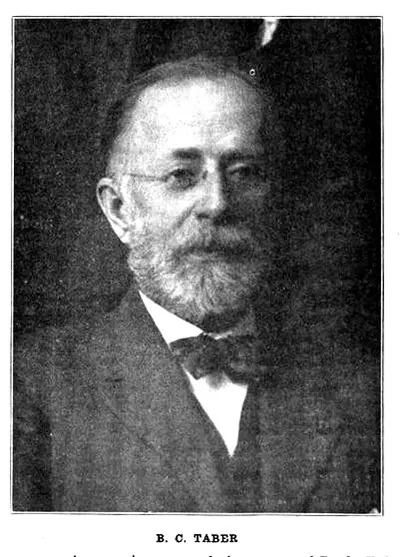 Benjamin Charles Taber. Middle Bass Club member from 1890 to 1898. Norwalk, Ohio. Source: Find A Grave
Benjamin Charles Taber. Middle Bass Club member from 1890 to 1898. Norwalk, Ohio. Source: Find A Grave
Captain Benjamin Charles Taber
Benjamin Charles Taber was born in 1840 in Somerville, New Jersey and moved to Norwalk, Ohio in 1856 working as a store clerk. After gaining experience and possessing good business and organization skills, he took over the successful dry goods store Parker, Manahan & Taber Co. and renamed it the B. C. Taber Company. He was one of the original incorporators of the Huron Country Banking Company serving as Vice President and then President. “Mr. Taber’s fame as a great merchant and financier was not confined to his hometown, but he was widely known and respected in the business and banking circles of New York, Cleveland and other cities where he had investments and connections.” (The Firelands Pioneer, Vol. 21, 1920, p. 2480)
When the Civil War started, he was the first to be placed on the original muster roll of volunteers for the Norwalk 55th Ohio Volunteer Infantry (OVI), Company D. Captain Taber served the Union Army every day of the Civil War (September 13, 1861 until December 28, 1864) and fought in 20 major battles including: (Source: Find A Grave)
- Bull Run – Manassas, VA – August 1862
- Chancellorsville, VA – May 1863
- Gettysburg, PA – July 1863
- Siege of Atlanta, GA – December 1864
After serving in the war, Captain Taber married Mary Parker in 1866 and together they had 3 children: Cora Isabelle, Thomas and William. Captain Taber was a member of the Middle Bass Club (MBC) from 1890 to 1898 and had the following family connections:
- His father in law and business partner, Constantine Sobieski Parker, was a member of the MBC in 1888.
- His wife’s uncle, Welcome Otis Parker was a founding member of the MBC in 1877 who remained a member until 1898.
Captain Taber is buried in Woodlawn Cemetery in Norwalk, Ohio.
1908 Presidential Nominee William Howard Taft Sojourns at the Middle Bass Club
By Marie Demer Rader, December 2023
William Howard Taft was a Solicitor General, Judge on the 6th Circuit Court of Appeals, Civilian Governor of the Philippines, Secretary of War under President Theodore Roosevelt and the 1908 Republican Presidential Nominee. The following is a summary of the Middle Bass Club’s involvement in President Taft’s campaign for the White House.
William Howard Taft. Source: Wikipedia
Charles T Lewis, President of the Middle Bass Club (MBC), personally extended an invitation to Judge Taft and his family to visit the MBC for rest and relaxation before the start of the campaign season. Lewis was a prominent Toledo railway attorney, Vice President of the Toledo & Ohio Central and the Zanesville & Western Railway, Director of the Northern National Bank and a staunch Taft supporter. Some believe that Lewis invited Taft to the MBC to repair Taft’s relationship with another MBC member, Ohio Republican Senator Joseph B Foraker, before the presidential campaign commenced.
“Judge Taft and family and Mr. and Mrs. Corbin will be housed at Middle Bass in the Edward Ford cottage through the kindness of their daughter, Mrs. William Knight. The rest of the party will be put up at the MBC, where a party of 150 are staying.”[1] Edward Ford’s son George R Ford and daughter Mrs. William Knight arrived for dinner at the MBC on August 31st to greet the Taft family. Edward Ford founded the Ford Plate Glass Company and built the city of Rossford, Ohio (a suburb of Toledo) for the employees of his glass factory. Later his company would merge with other Toledo glass companies to become the Libbey-Owens-Ford (LOF) company. The Ford cottage remains today on Grape Avenue in the MBC, boasting 13 rooms on 3 full floors and is owned by the FitzGerald family.
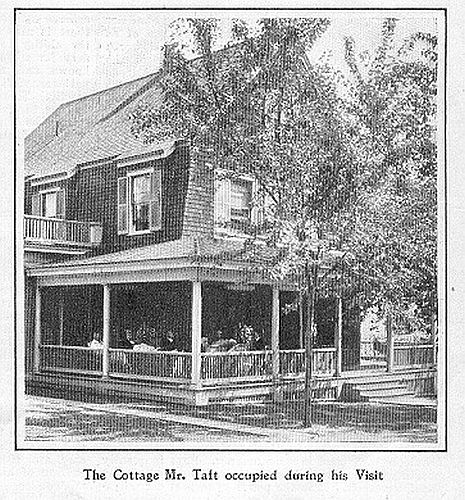 1908 Edward Ford’s Cottage in the MBC. Source: Dr Martin Taliak
1908 Edward Ford’s Cottage in the MBC. Source: Dr Martin Taliak
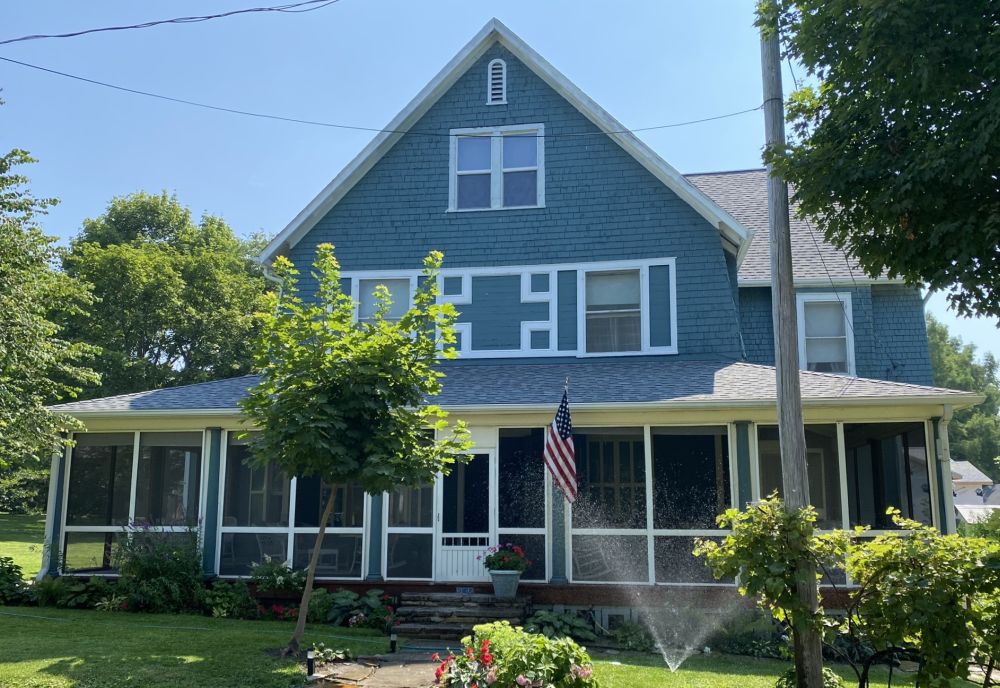 FitzGerald Cottage in the MBC, 2023. Source: FitzGerald Family, Photo by Marie Demer Rader
FitzGerald Cottage in the MBC, 2023. Source: FitzGerald Family, Photo by Marie Demer Rader
“William H. Taft, Republican nominee for President, and his party, will arrive in Toledo over the Ohio Central lines at 10:50, and in fifteen minutes will be on their way to Middle Bass Island, a trip with Commodore S O Richardson, of the Jessamine expects to make it two and a half hours.”[2] MBC member Commodore Solon O Richardson Jr provided Taft’s transportation to and from Middle Bass Island. Richardson was the Vice President then President of the Libbey Glass Company.
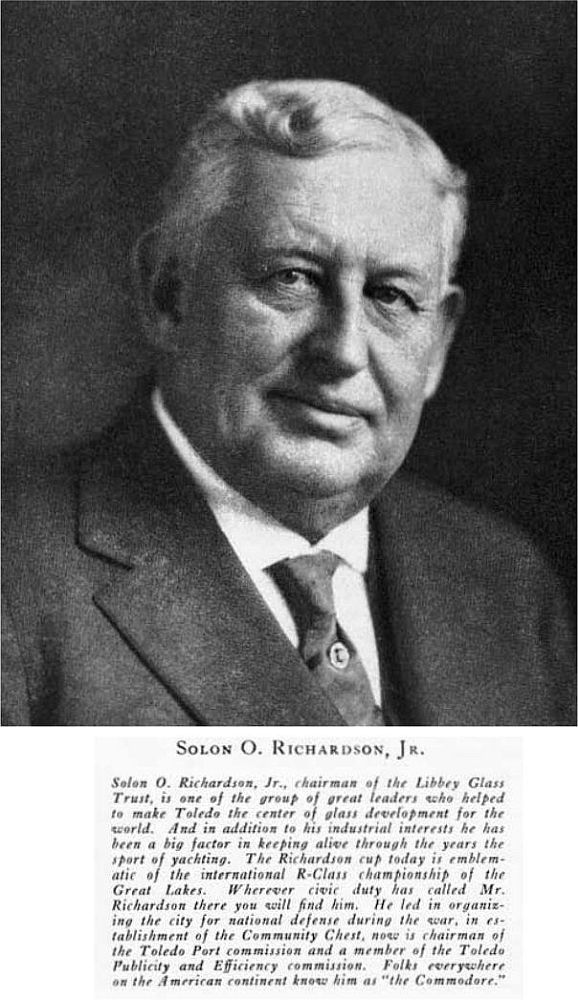 MBC Member Solon O. Richardson. Source: Find A Grave
MBC Member Solon O. Richardson. Source: Find A Grave
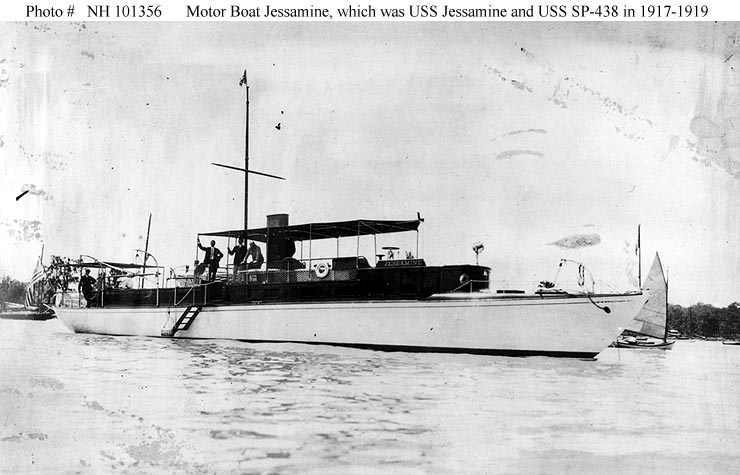 Solon O. Richardson’s Yacht, Jessamine. Source: Dr. Martin Taliak
Solon O. Richardson’s Yacht, Jessamine. Source: Dr. Martin Taliak
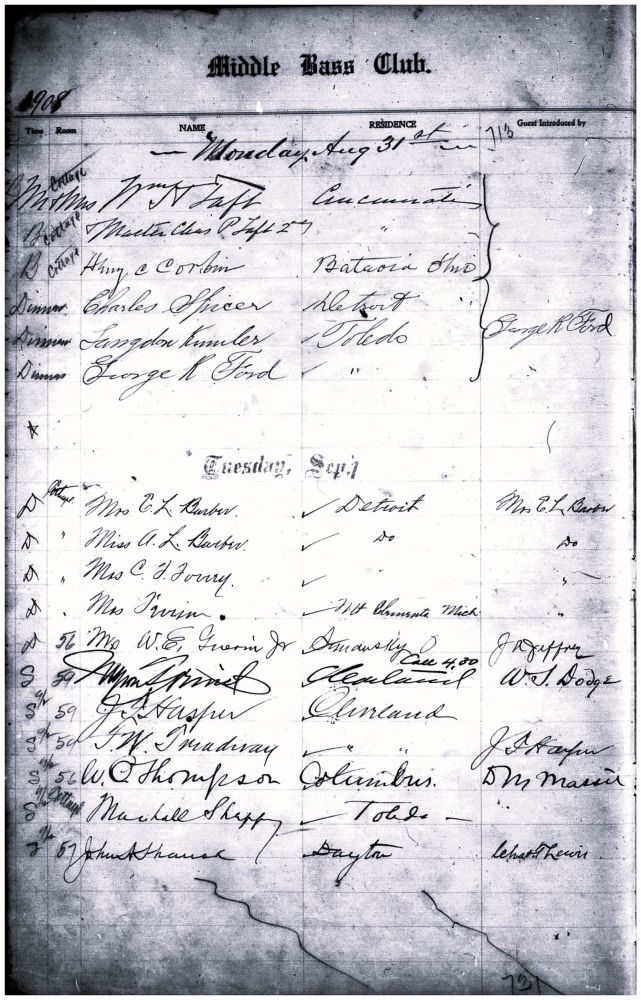 Club House Guest Book: August 31, 1908. Source: Morton Family
Club House Guest Book: August 31, 1908. Source: Morton Family
Taft arrived at 4 o’clock in the morning and after a 5 hour sleep, had breakfast and attended services in the MBC Chapel. That evening, Judge and Mrs. Taft attended a musical soiree at the Club House where they were introduced to the Club members and their guests by MBC President Lewis.
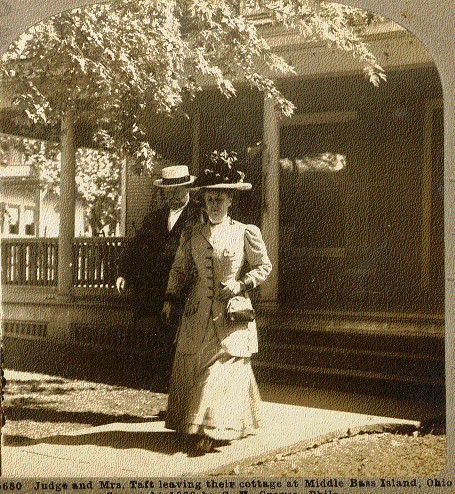 William Howard Taft & Helen Taft on front sidewalk of the Ford Cottage in the MBC. Source: Morton Family
William Howard Taft & Helen Taft on front sidewalk of the Ford Cottage in the MBC. Source: Morton Family
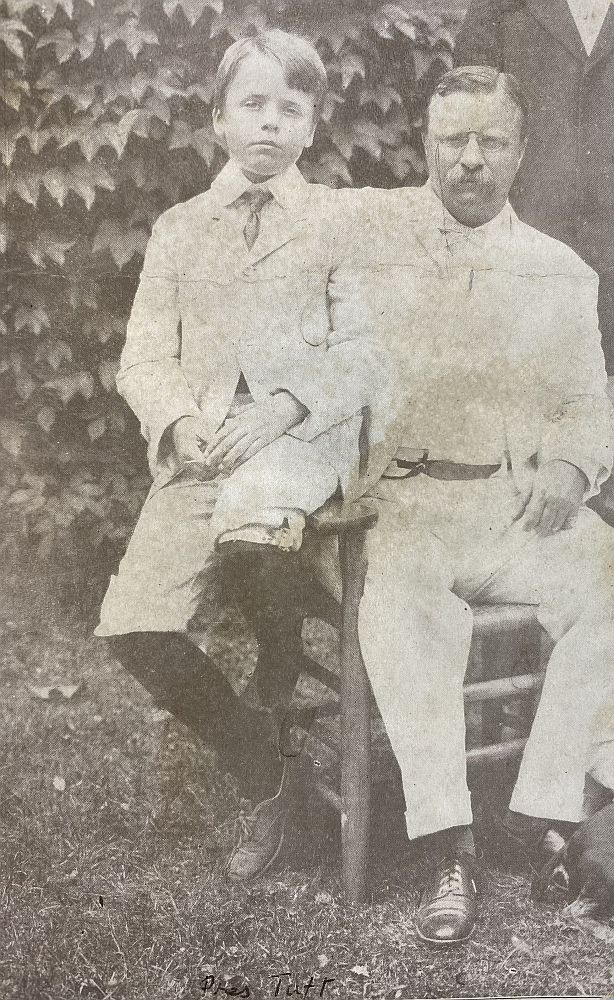 William Howard Taft & son Charlie at Ford Cottage in the MBC. Source: Cumberworth Family
William Howard Taft & son Charlie at Ford Cottage in the MBC. Source: Cumberworth Family
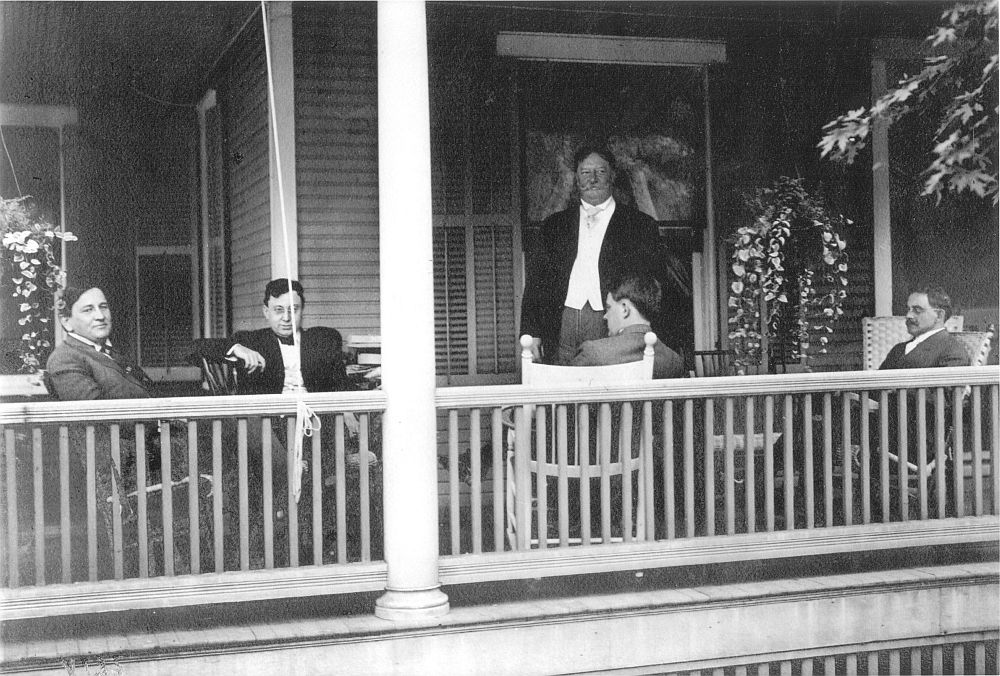 William Howard Taft standing on front porch of the Ford Cottage in the MBC. Source: Dr. Martin Taliak
William Howard Taft standing on front porch of the Ford Cottage in the MBC. Source: Dr. Martin Taliak
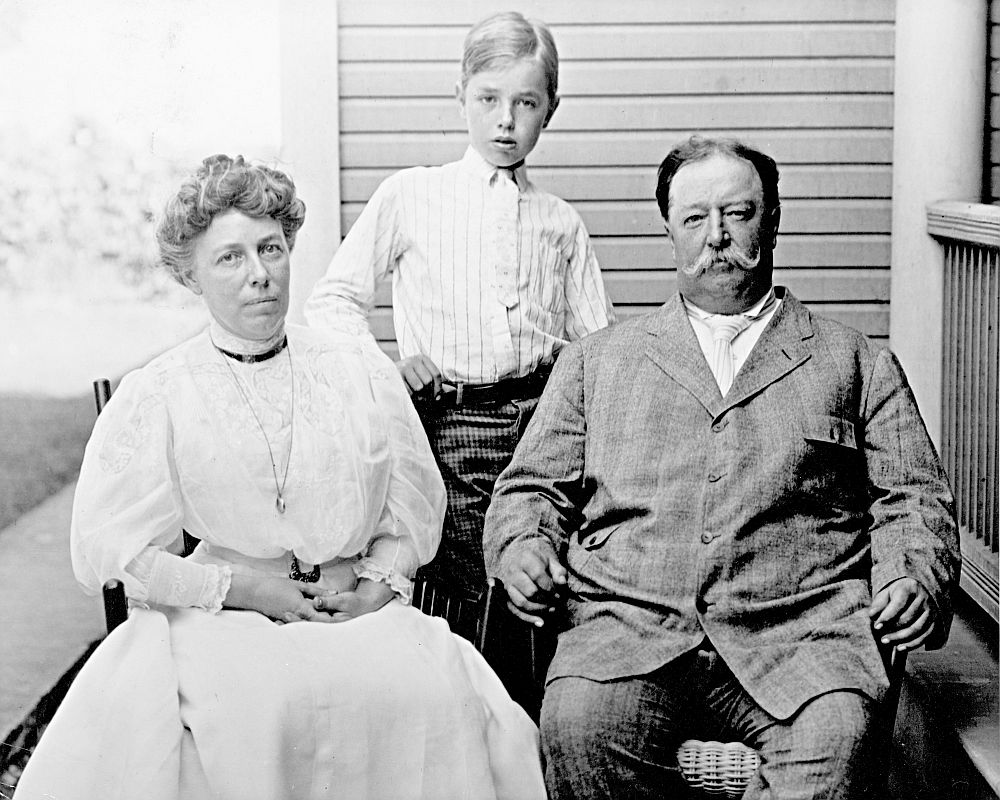 Helen Taft, Charlie Taft & William Howard Taft at Ford Cottage in the MBC. Source: Mike Gora
Helen Taft, Charlie Taft & William Howard Taft at Ford Cottage in the MBC. Source: Mike Gora
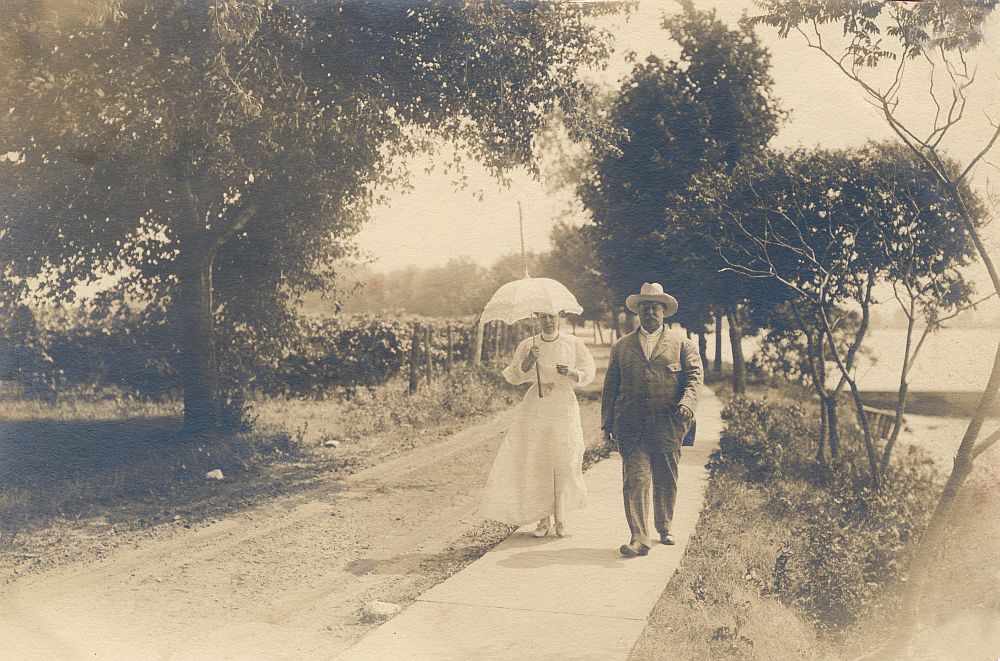 William Howard Taft & Helen Taft walking down Lake Avenue on Middle Bass Island. Source: Morton Family
William Howard Taft & Helen Taft walking down Lake Avenue on Middle Bass Island. Source: Morton Family
Taft went bass fishing as often as possible with his son Charlie. Taft’s favorite spot to fish was at the reef at Rattlesnake Island. One fishing excursion comprised Taft (donning a straw hat), Taft’s son Charlie, General Henry Clarke Corbin, Edward H Marsh and MBC members Walter Beckwith and Ed Miller. Corbin accompanied Taft on his visit to the MBC staying with him in the Ford cottage and served as a friend and advisor during the 1908 presidential campaign. Marsh was Taft’s Yale classmate and friend from Sandusky, Ohio. Beckwith was the President of the Citizen’s Telephone and Message Company in Fostoria, Ohio. I believe Ed Miller is MBC member Theron B Miller as there are conflicting reports in the newspaper calling the member Ed Miller and Ted Miller from Columbus. Miller was a capitalist and leading attorney from Columbus, Ohio; his family scrapbook included many photographs of Taft at the MBC including one of showing Miller with Charlie Taft (age 11) and his son Thomas E Miller (age 8) in small rowboats on the MBC dock.
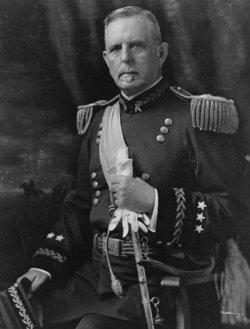 MBC Guest Henry C. Corbin. Source: Find A Grave
MBC Guest Henry C. Corbin. Source: Find A Grave
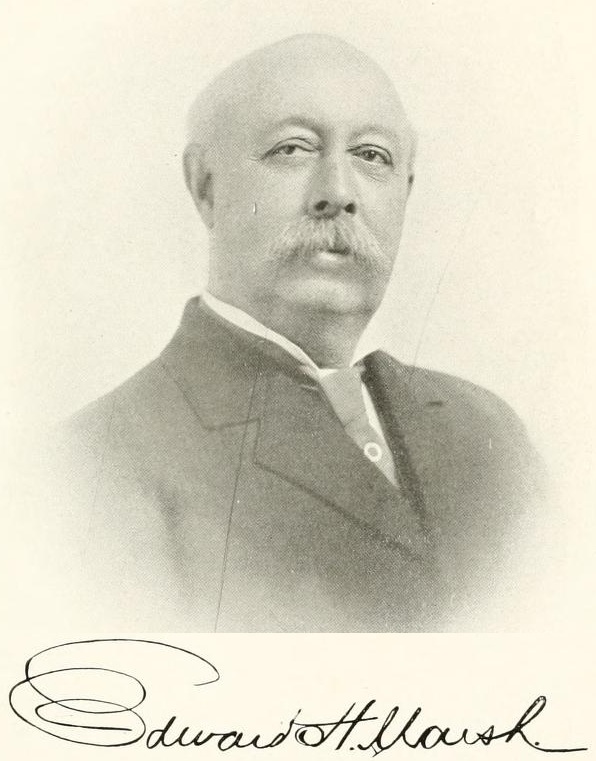 MBC Guest Edward H. Marsh. Source: Find A Grave
MBC Guest Edward H. Marsh. Source: Find A Grave
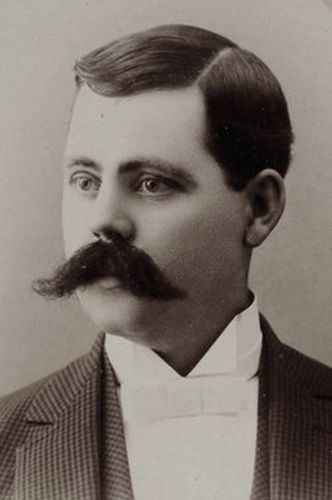 MBC Member Walter C. Beckwith. Source: Find A Grave
MBC Member Walter C. Beckwith. Source: Find A Grave
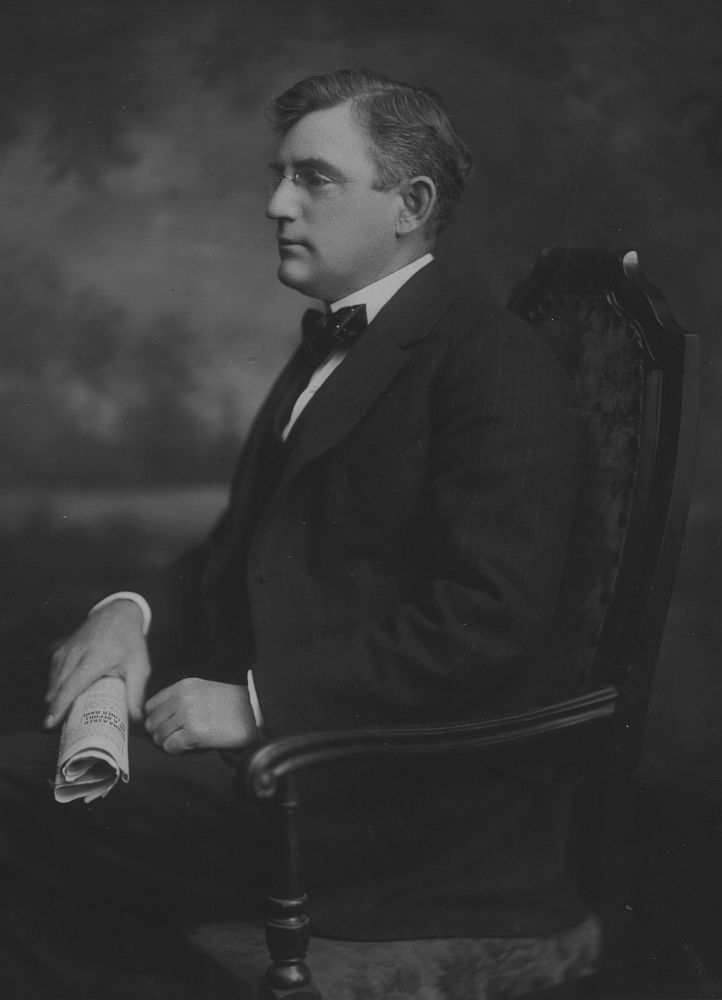 MBC Member Theron B. Miller Source: T. Ewing Miller Family
MBC Member Theron B. Miller Source: T. Ewing Miller Family
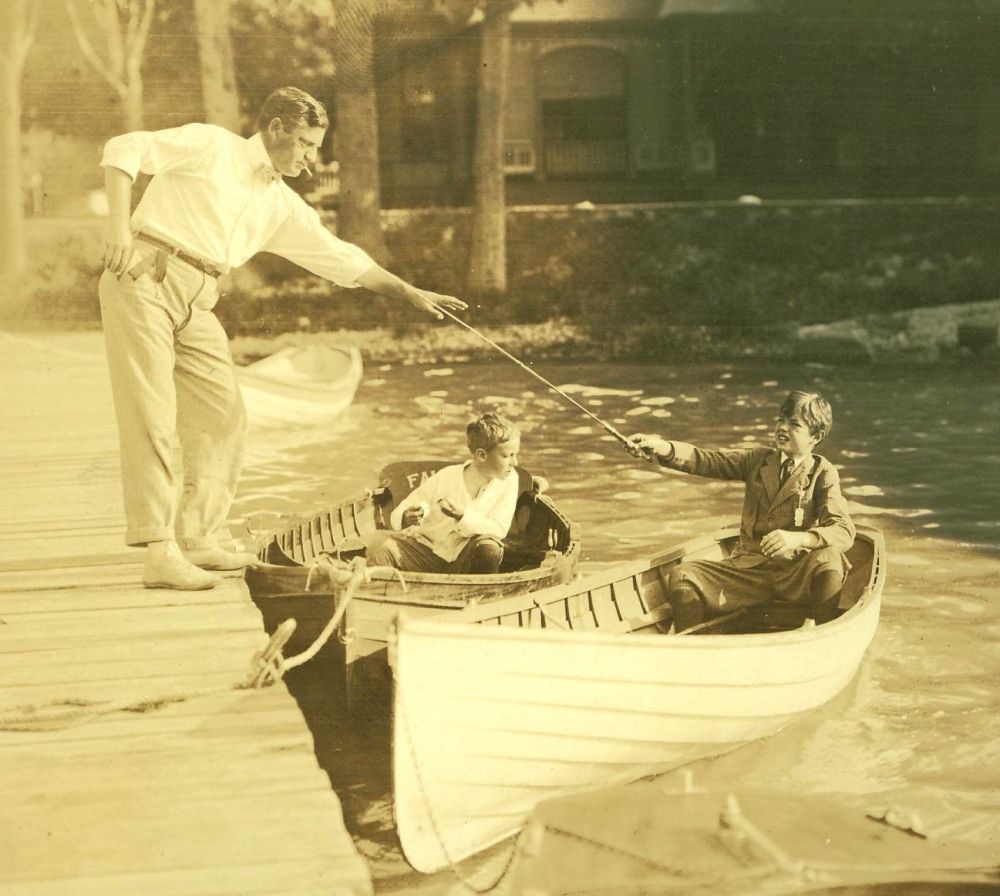
The fishing party headed toward Rattlesnake Island on Beckwith’s power boat Faustina towing rowboats from which they would fish along with expert oarsmen. They were fishing for black bass, white bass and perch.
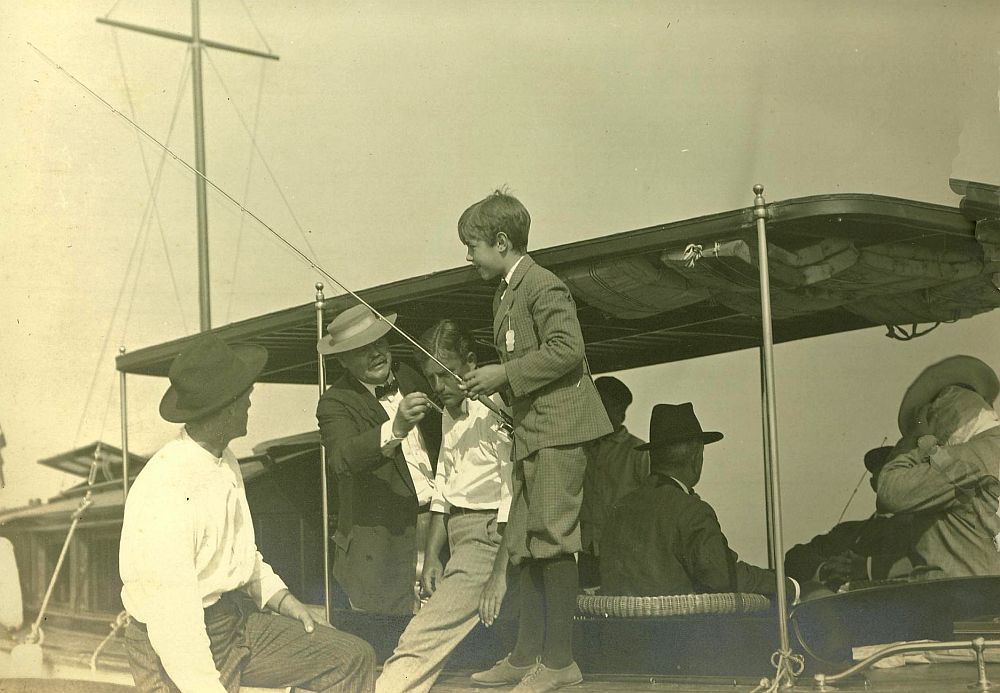
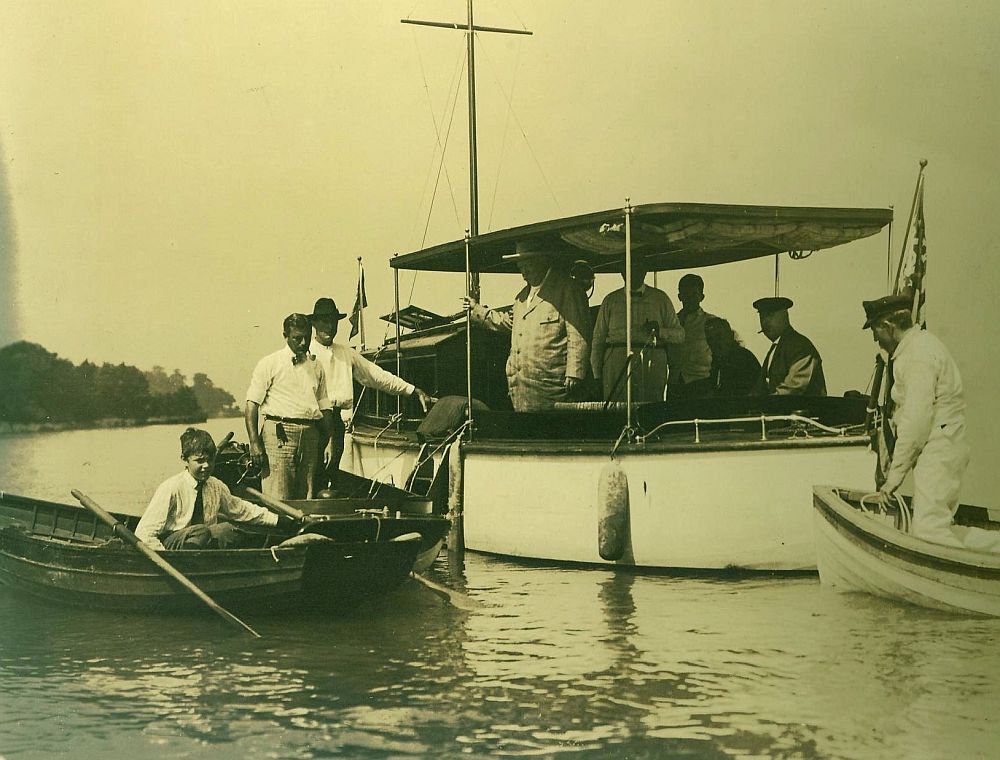
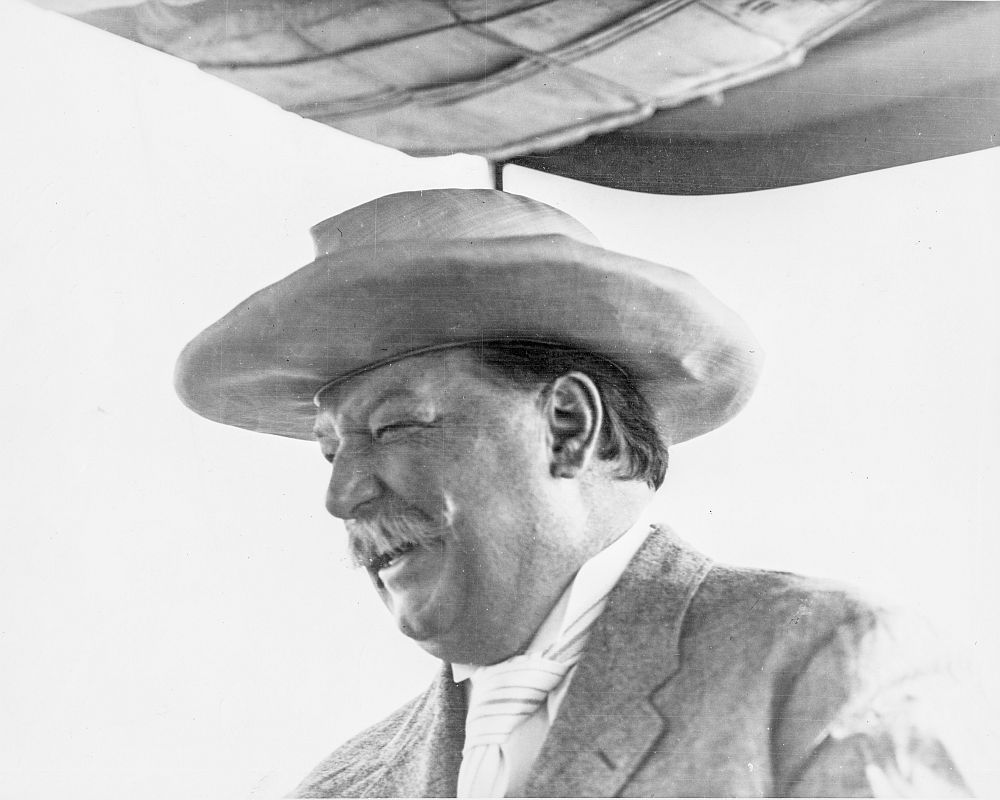 William Howard Taft in the straw hat. Source: Mike Gora
William Howard Taft in the straw hat. Source: Mike Gora
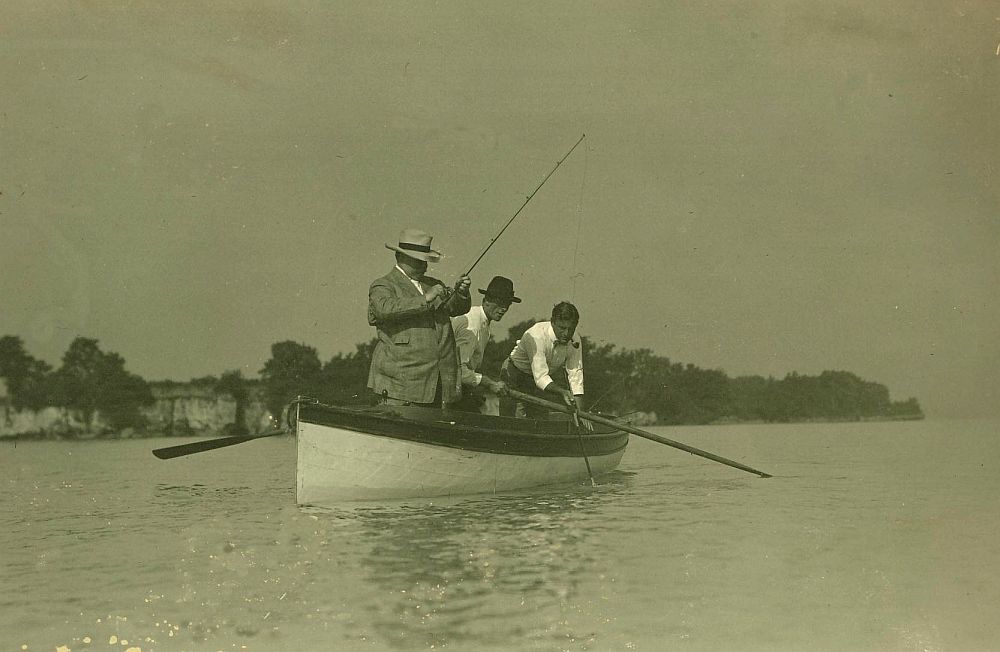
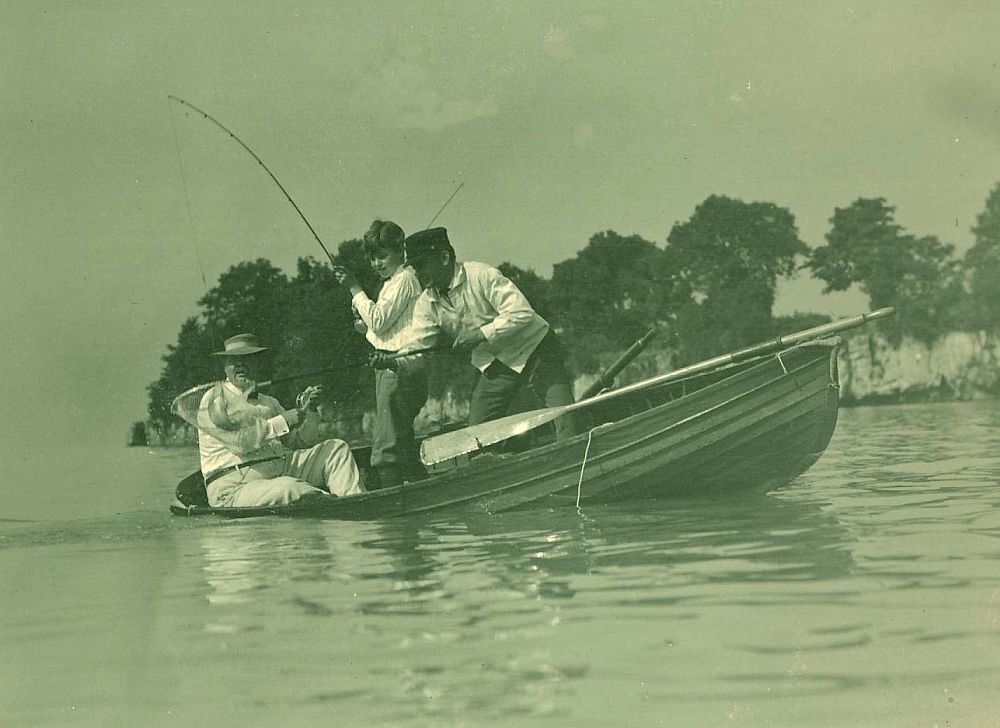
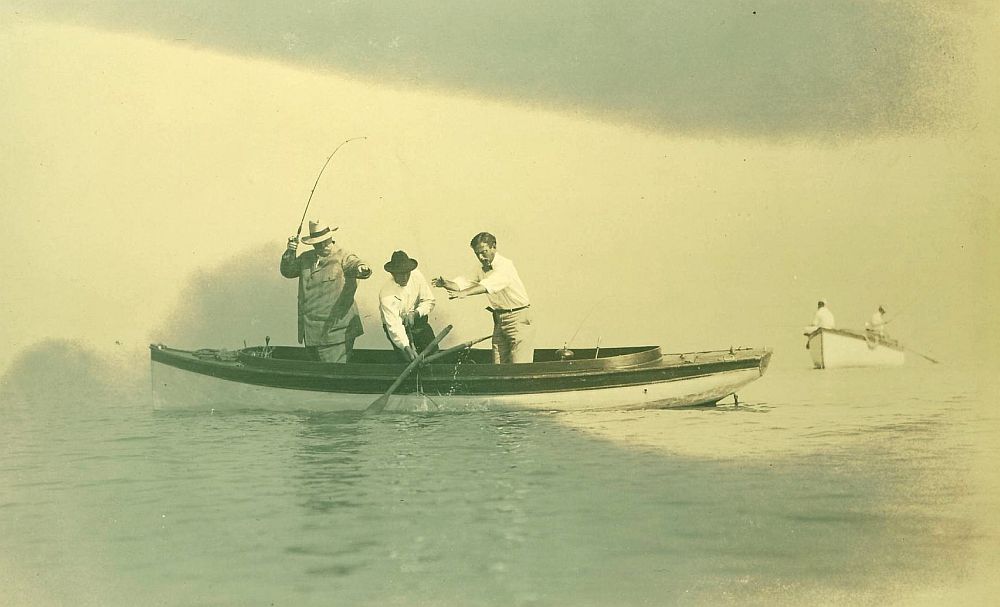
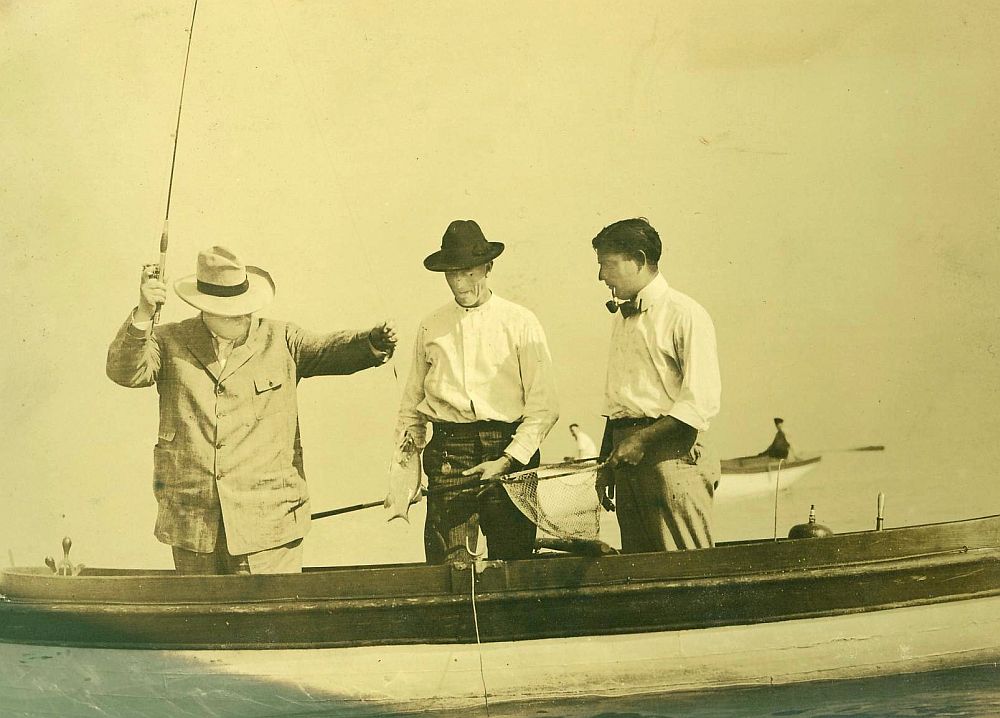
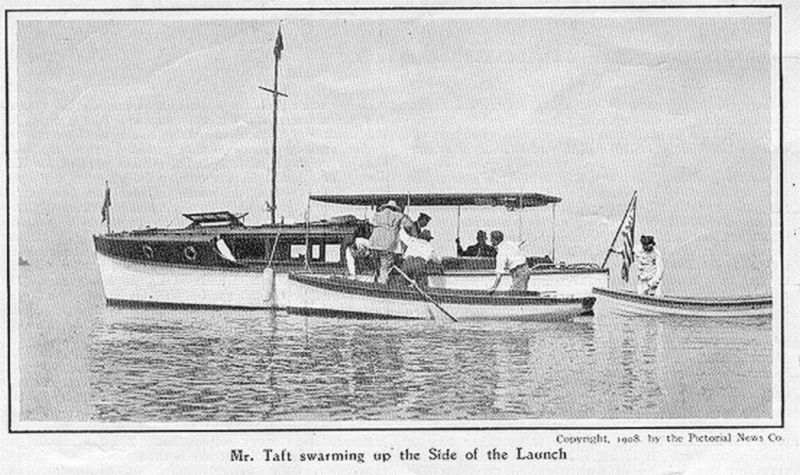 William Howard Taft boarding the Faustina from a rowboat. Source: Dr. Martin Taliak
William Howard Taft boarding the Faustina from a rowboat. Source: Dr. Martin Taliak
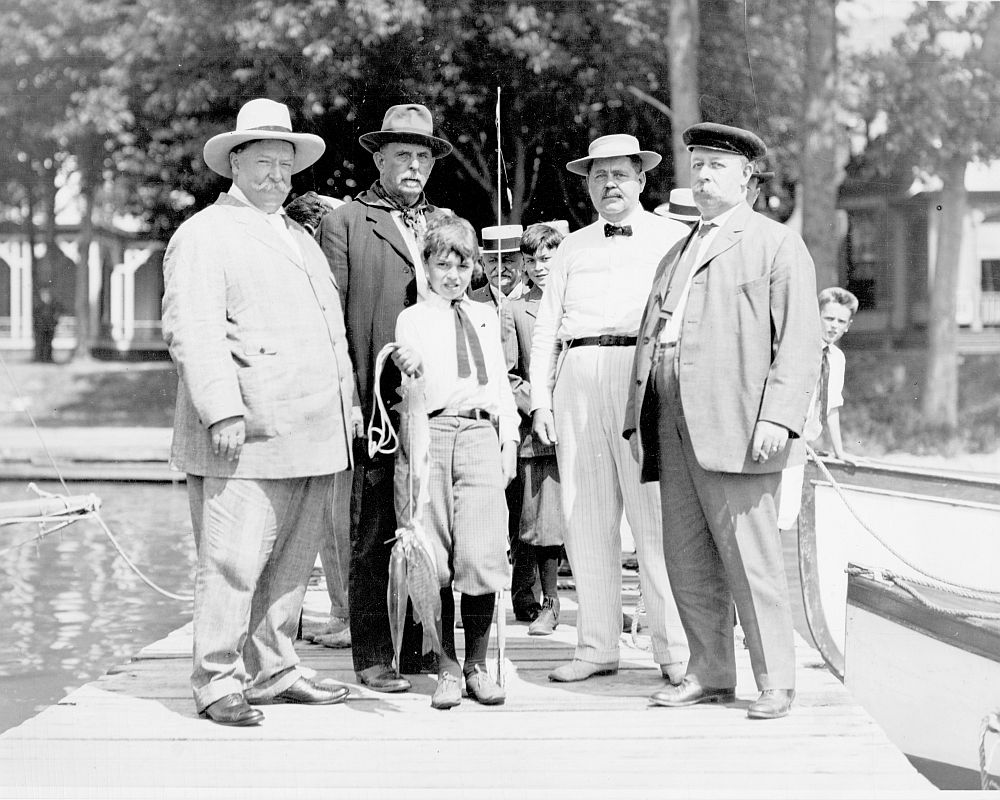 William Howard Taft’s Fishing Party standing on MBC dock with their catch. Source: Louis Van Oeyen, the Scipps-McRae photographer. Enhanced by Mike Gora
William Howard Taft’s Fishing Party standing on MBC dock with their catch. Source: Louis Van Oeyen, the Scipps-McRae photographer. Enhanced by Mike Gora
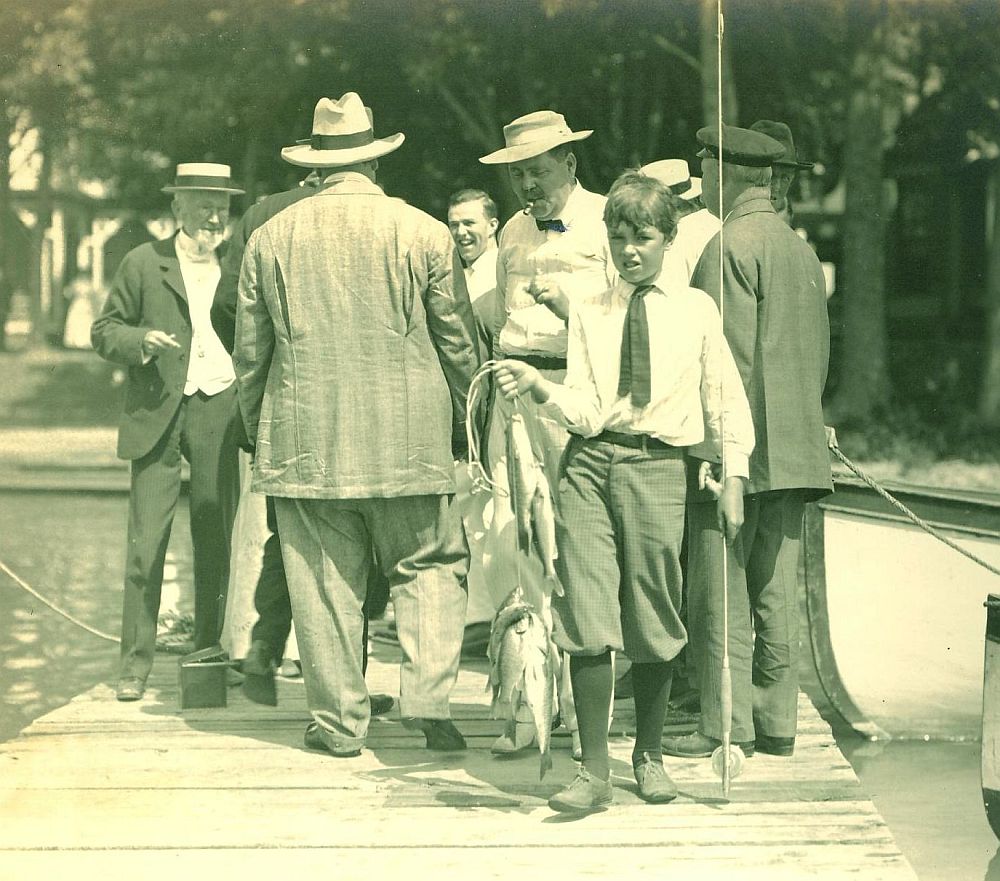
Unfortunately, their fishing trip was interrupted by a launch approaching them at high-speed firing a cannon to get their attention as they had an urgent message from President Theodore Roosevelt’s War Department brought by Colonel Clarence Edwards. Edwards was Chief of the Bureau of Insular Affairs. The NY Times reported Taft as saying,” Do you know, that I have become convinced bass are not partial to launches and cannon” as he only caught 2 bass that day.
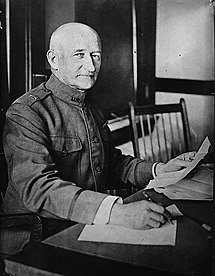 Clarence Edwards. Source: Wikipedia
Clarence Edwards. Source: Wikipedia
According to Taft’s Datebook, on August 31st Taft caught 2 bass while Charlie caught 1 pickerel and 1 bass, on September 3rd Taft caught 5 bass (1 pound each) while Charlie caught 3 bass and 3 sheephead and on September 4th they had no luck.[3]
During Taft’s sojourn at the MBC, only a few journalists and photographers were invited to stay at the exclusive MBC. The press accompanied Taft on his fishing trips and to his only planned campaign event in Toledo - a parade of Civil War & Spanish American War veterans and then a speech at the Lyceum Theatre where he decided to share the platform with his rival, Senator Foraker. Four preferred press members arrived a day prior to the Taft family and stayed in a cottage in the MBC. Gus J Karger of the Cincinnati Star served as the personal press representative for Taft in the 1908 presidential campaign. James Hay Jr of the Washington Times was the White House correspondent and close personal friends with both Taft and President Woodrow Wilson. Journalist Ralph LeBlond and photographer Louis Van Oeyen worked for the United Press Association which sent 10,000 words per day via Morse telegraph to 369 newspapers.[4] Other journalists from the NY Herald, NY World, NY Sun, Harpers Weekly, NY Tribune and the Washington, D.C. Associated Press arrived on August 31st and stayed at the Middle Bass Club House.
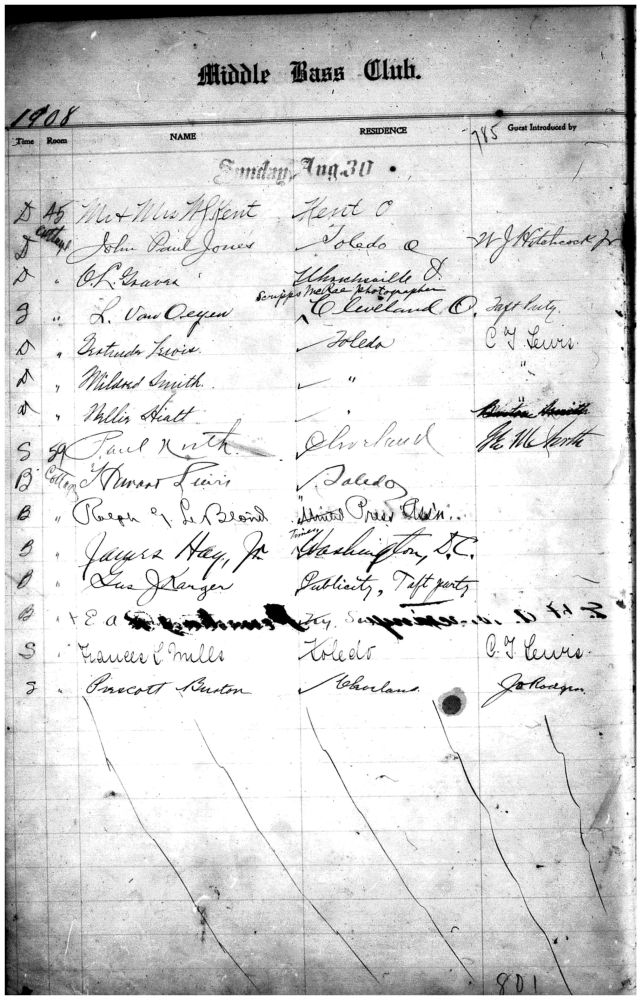 Club House Guest Book: August 30, 1908. Source: Morton Family
Club House Guest Book: August 30, 1908. Source: Morton Family
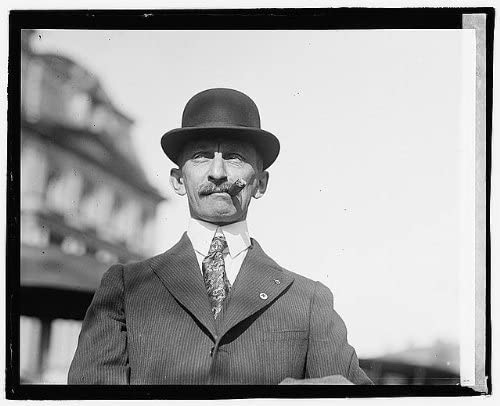 MBC Guest Gus K. Karger. Source: Amazon, Historic Photographs, LLC Photo: Gus Karger 1 1 https://www.amazon.com/Historic-Photographs-LLC-Photo-Karger/dp/B06X9F3658
MBC Guest Gus K. Karger. Source: Amazon, Historic Photographs, LLC Photo: Gus Karger 1 1 https://www.amazon.com/Historic-Photographs-LLC-Photo-Karger/dp/B06X9F3658
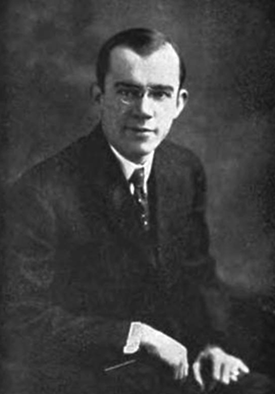 MBC Guest James Hay, Jr. Source: Encyclopedia.org which originated from the Dictionary of North Carolina Biography
MBC Guest James Hay, Jr. Source: Encyclopedia.org which originated from the Dictionary of North Carolina Biography
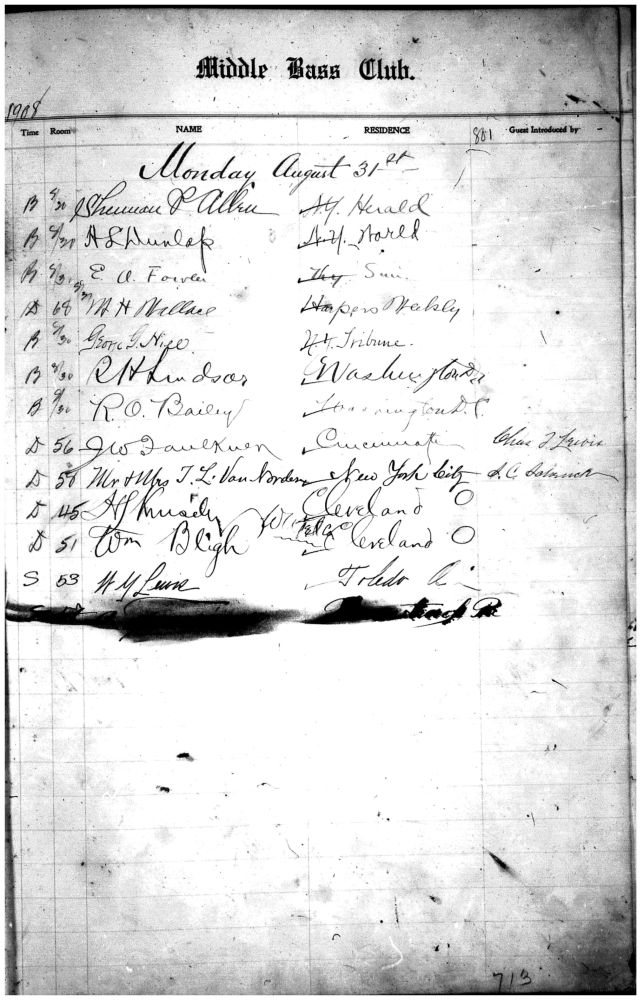 Club House Guest Book: August 31, 1908. Source: Morton Family
Club House Guest Book: August 31, 1908. Source: Morton Family
While at the MBC, Taft sat for a portrait commissioned by the New York Republican Club. An artist from Manhattan, J Elmer Salsbury, arrived on September 3rd as a guest of MBC President Lewis and stayed in Club House room 53. Salisbury was a noted landscape and portrait artist who sold several paintings to Andrew Carnegie. Salsbury’s portrait of Taft was later given to the Cincinnati Art Museum but has since been deaccessioned.[5]
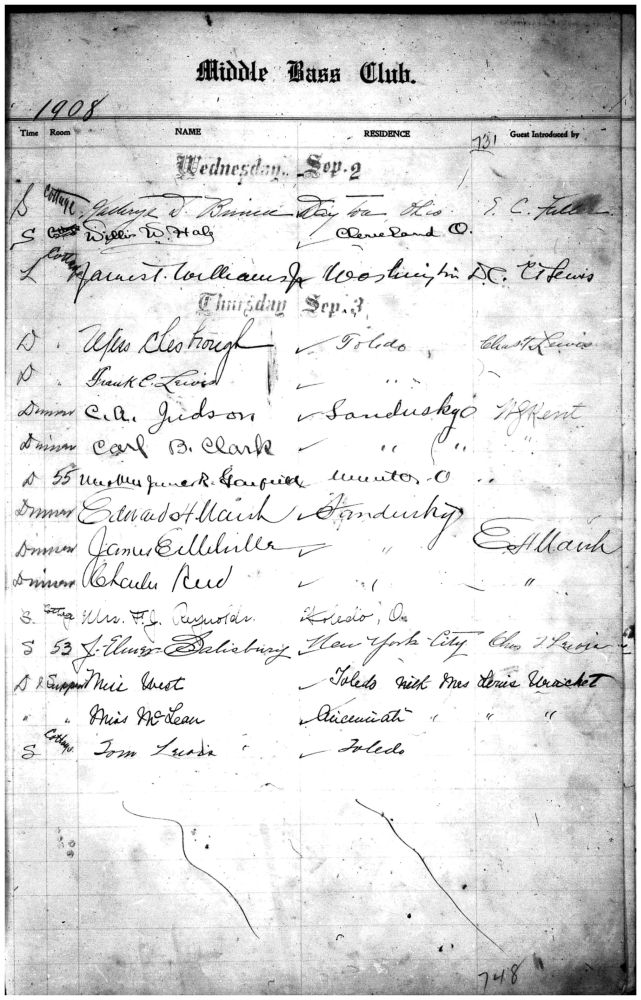 Club House Guest Book: September 3, 1908. Source: Morton Family
Club House Guest Book: September 3, 1908. Source: Morton Family
Taft continued his correspondence during the sojourn. The Library of Congress houses many letters that Taft sent and received, especially those between Taft and President Theodore Roosevelt which focused on Taft’s presidential campaign. While most correspondence dealt with Taft’s campaign strategy and logistics, some letters were more entertaining including the one from Taft to Mrs. J T Wyckoff because “she asked for his autograph.” It should be mentioned that Taft’s letterhead clearly displays “Middle Bass Island, Ohio.”
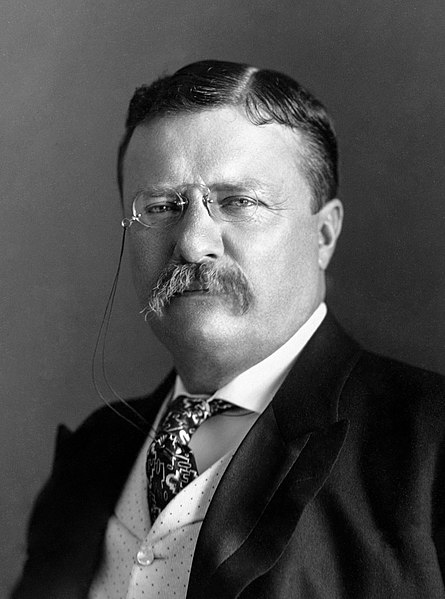 Theodore Roosevelt. Source: Wikipedia
Theodore Roosevelt. Source: Wikipedia
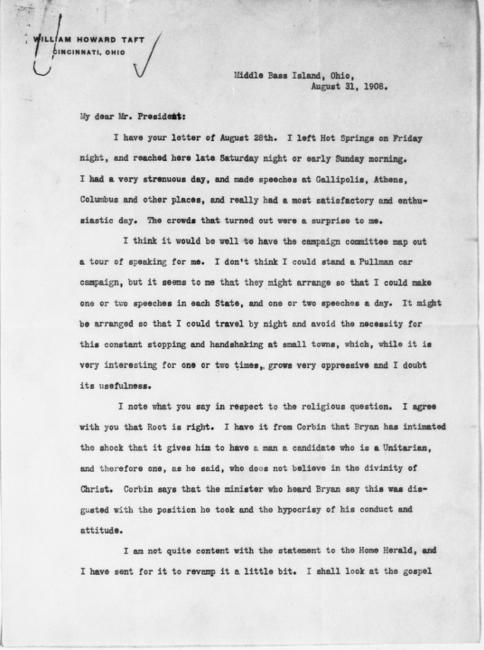
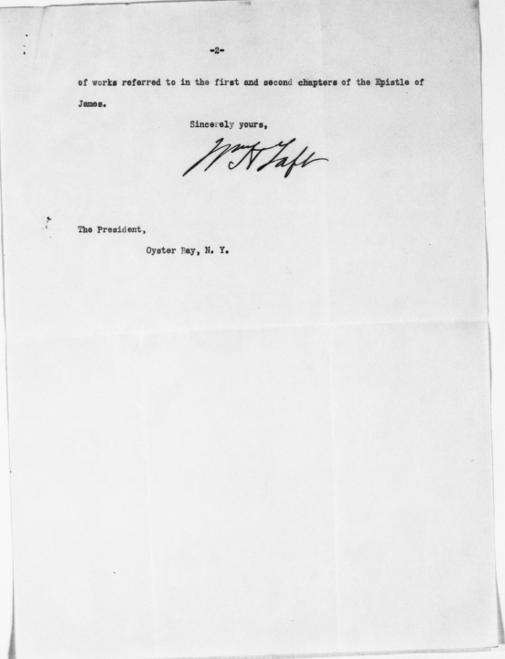 Letter Taft to Roosevelt: August 31, 1908, pp. 1-2. Source: Library of Congress, Theodore Roosevelt Papers: Series 1: Letters and Related Material, 1759-1919; 1908, July 19-Sept. 21, Images 611 and 612
Letter Taft to Roosevelt: August 31, 1908, pp. 1-2. Source: Library of Congress, Theodore Roosevelt Papers: Series 1: Letters and Related Material, 1759-1919; 1908, July 19-Sept. 21, Images 611 and 612
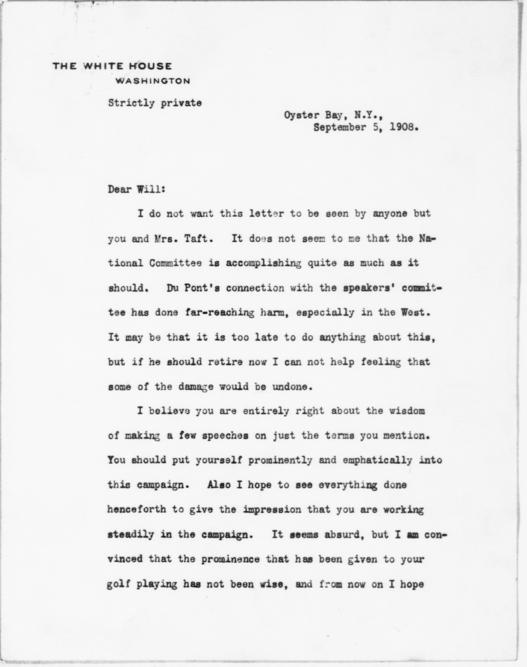
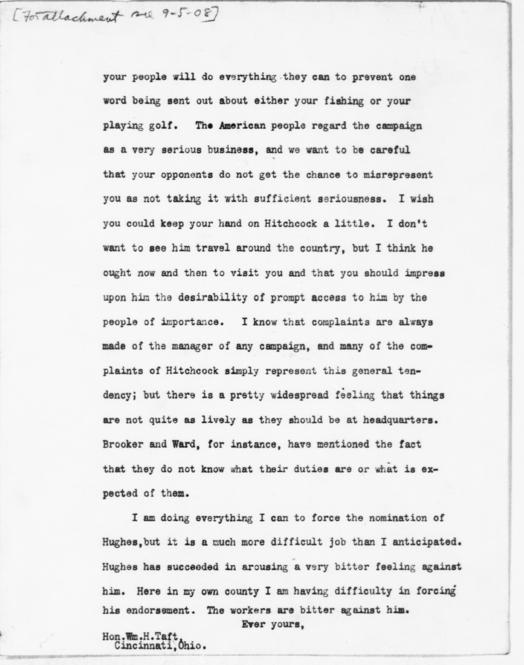
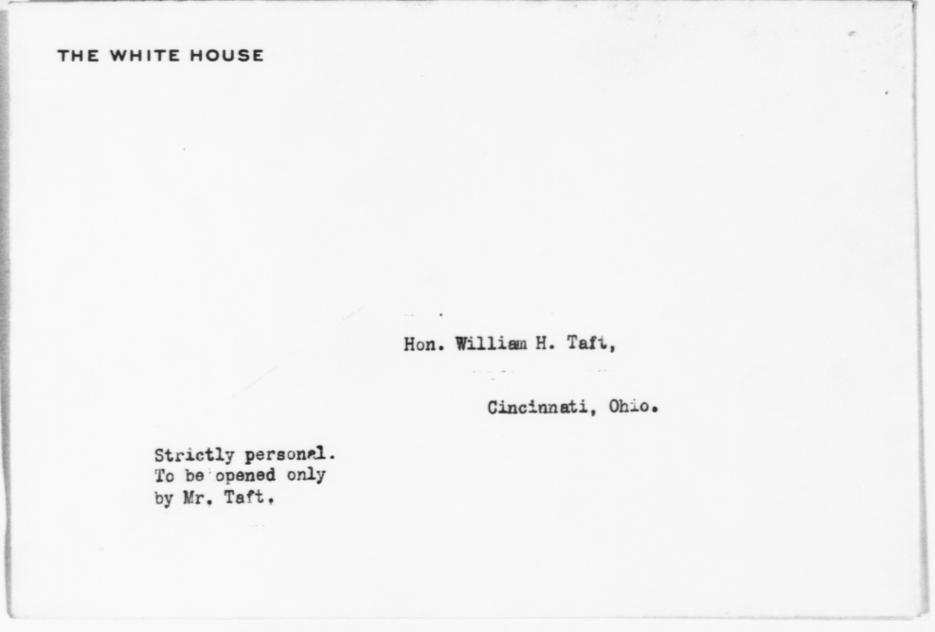 Letter Roosevelt to Taft: September 5, 1908, pp. 1-3. Source: Library of Congress, Theodore Roosevelt Papers: Series 1: Letters and Related Material, 1759-1919; 1908, July 19-Sept. 21, Images 678, 679, and 680
Letter Roosevelt to Taft: September 5, 1908, pp. 1-3. Source: Library of Congress, Theodore Roosevelt Papers: Series 1: Letters and Related Material, 1759-1919; 1908, July 19-Sept. 21, Images 678, 679, and 680
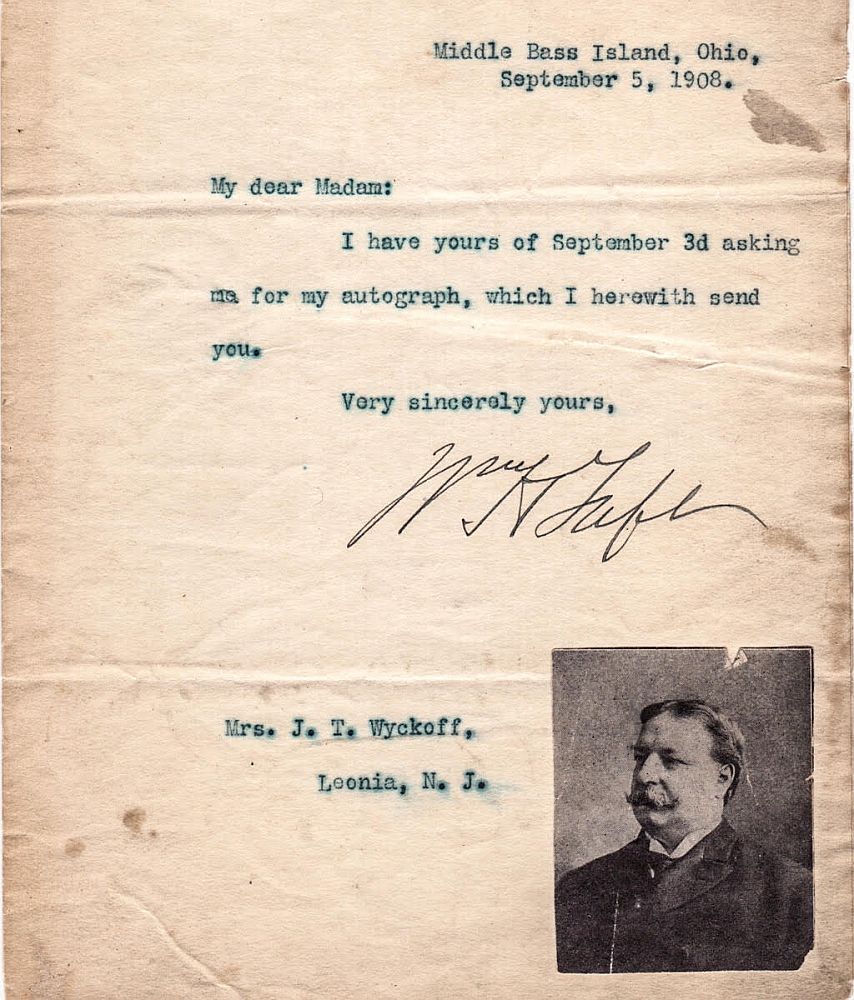 Letter Taft to Wyckoff: September 5, 1908. Source: Mike Gora
Letter Taft to Wyckoff: September 5, 1908. Source: Mike Gora
The Middle Bass Club property was only accessible to members and their guests so it provided a private, secure and isolated location where Taft could freely meet with key Republican strategists to plan his campaign. Taft connected with MBC members J Warren Keifer from Springfield and Noah Haines Swayne from Toledo who served as delegates to the 1908 Republican Convention during his sojourn. Taft also met with member Walter Folger Brown from Toledo who was the Chairman of the Ohio Republican State Committee. Brown greeted Taft upon his arrival and departure from the MBC and invited important guests to meet with Taft during his stay.
During the sojourn, Taft was able to privately discuss campaign strategy, support and donations with invited guests. A few important visitors are listed below by their arrival date at the MBC.
On August 31, 1908 and for the entire sojourn:
General Henry Clarke Corbin
Corbin was an important advisor and friend to many U. S. Presidents, was assigned to the White House for Presidents Rutherford B Hayes and James A Garfield, acted as “Chief of Staff” for President William McKinley and was named Commander of the U.S. Army’s Atlantic Division, Philippine & Northern Divisions before his retirement.
On September 1st,
Myron T. Herrick
Taft sent a letter to Herrick about his visit to the MBC on August 31st. Herrick was the Ohio Governor from 1904 to 1906 and an overall delegate from Ohio to the 1908 Republican Convention. Herrick accompanied Taft to Toledo for the only planned campaign event. He was a guest of MBC member Wilson Shannon Dodge and stayed in Club House room 59. Dodge was an important banker and President of the Cleveland Steam Guage Company.
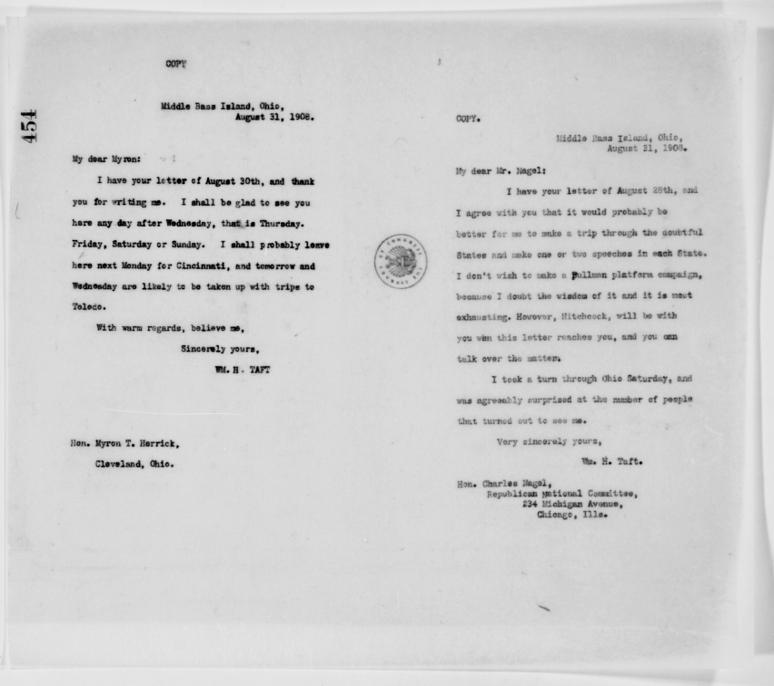 Letter Taft to Herrick: August 31, 1908. Source: Library of Congress, William H Taft Papers: Series 8: Letters, 1872-1921; Secretary of War Personal Letters; Vol 24, 1908 Aug. 18-Sept. 18, Image 486
Letter Taft to Herrick: August 31, 1908. Source: Library of Congress, William H Taft Papers: Series 8: Letters, 1872-1921; Secretary of War Personal Letters; Vol 24, 1908 Aug. 18-Sept. 18, Image 486
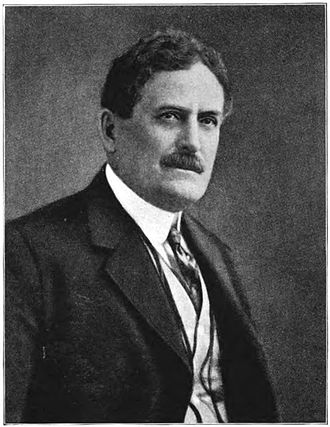 MBC Guest Myron T. Herrick. Source: Wikepdia
MBC Guest Myron T. Herrick. Source: Wikepdia
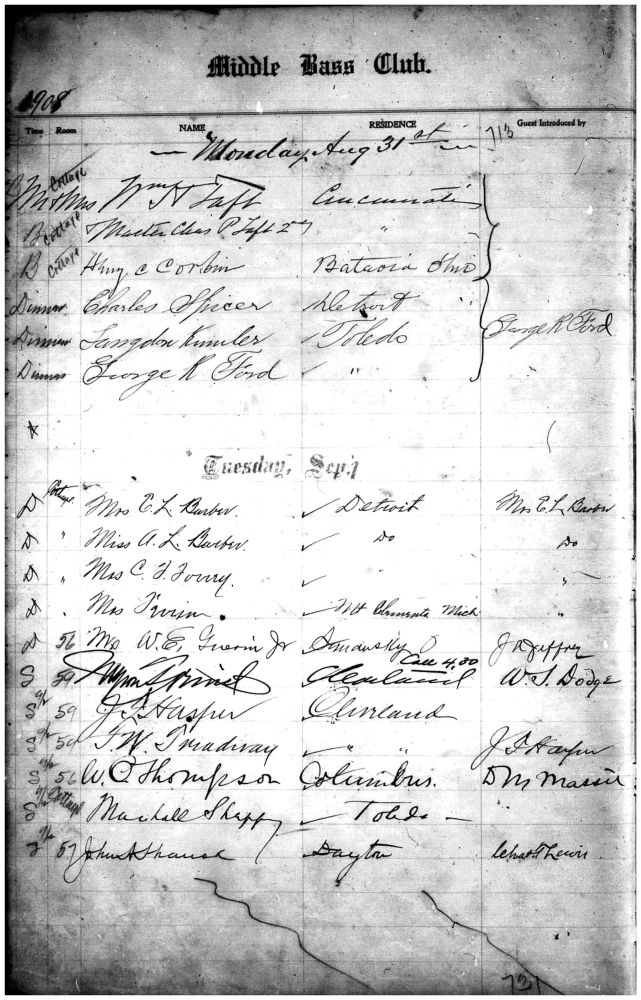 Club House Guest book: September 1, 1908. Source: Morton Family
Club House Guest book: September 1, 1908. Source: Morton Family
Colonel Frank J. Hecker
Hecker was President of the Peninsular Car Company and a member of the Panama Canal Commission. Hecker brought Congressman Denbly and other politicians and key press members from Detroit on his yacht Halcyon to pay their respects to Taft for a short visit; they did not sign the Guest Book.
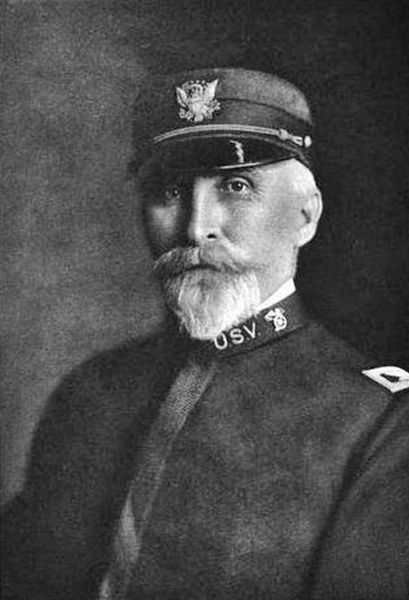 MBC Guest Frank J. Hecker. Source: Wikipedia
MBC Guest Frank J. Hecker. Source: Wikipedia
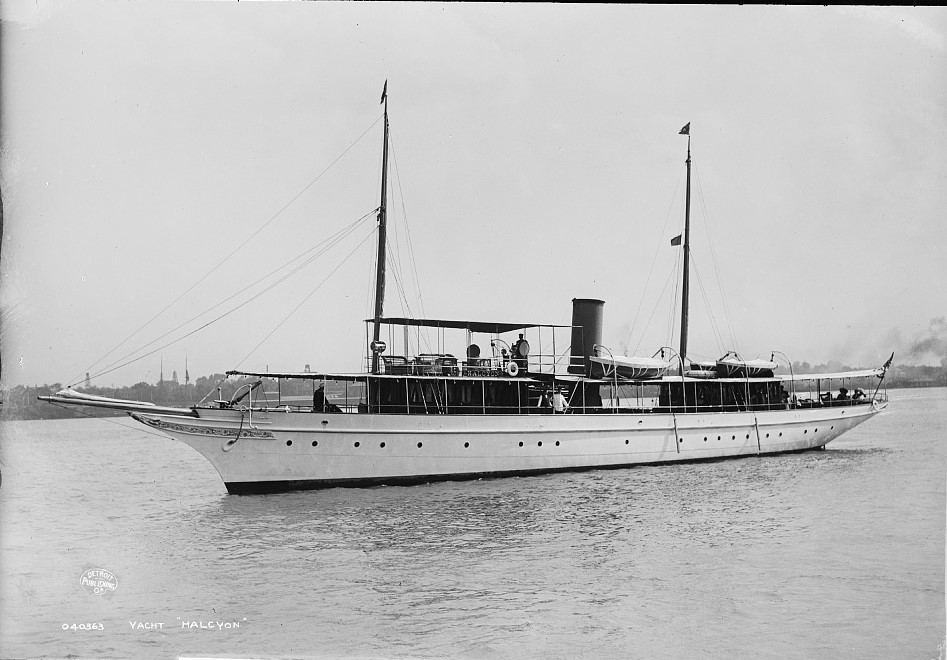 Frank J. Hecker’s Yacht Halcyon. Source: Library of Congress, det 4a27553 //hdl.loc.gov/loc.pnp/det.4a27553
Frank J. Hecker’s Yacht Halcyon. Source: Library of Congress, det 4a27553 //hdl.loc.gov/loc.pnp/det.4a27553
On September 2nd,
James T. Williams Jr
Williams was the Washington correspondent for the Boston Evening Transcript and became a member of Taft’s campaign staff. Williams was a guest of MBC President Lewis and stayed in a cottage.
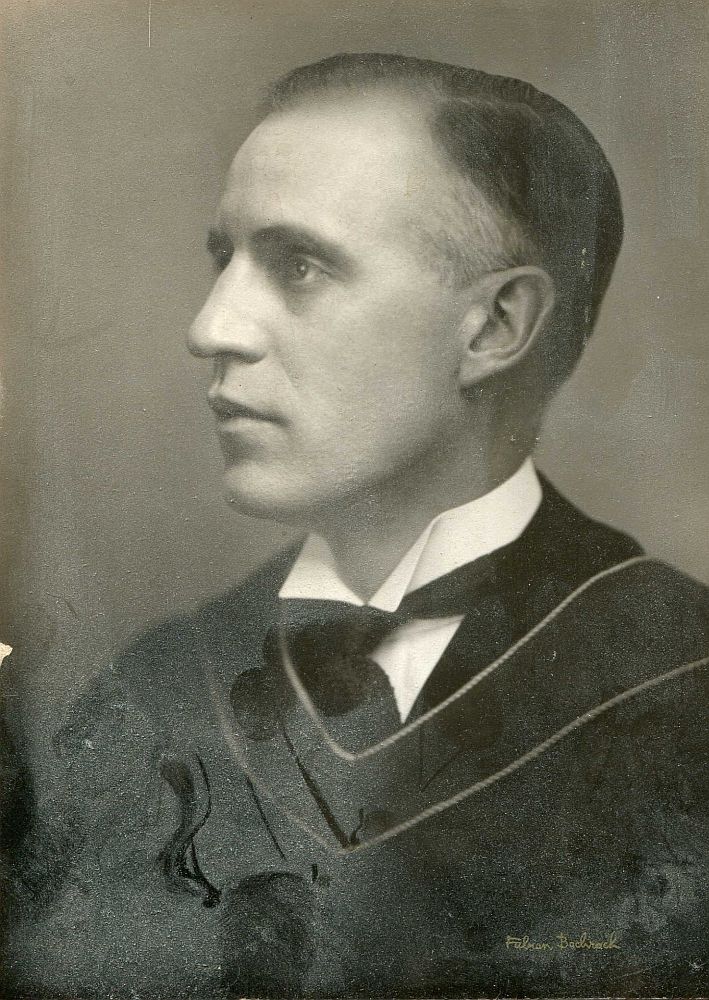 MBC Guest James T. Williams. Source: Ancestry
MBC Guest James T. Williams. Source: Ancestry
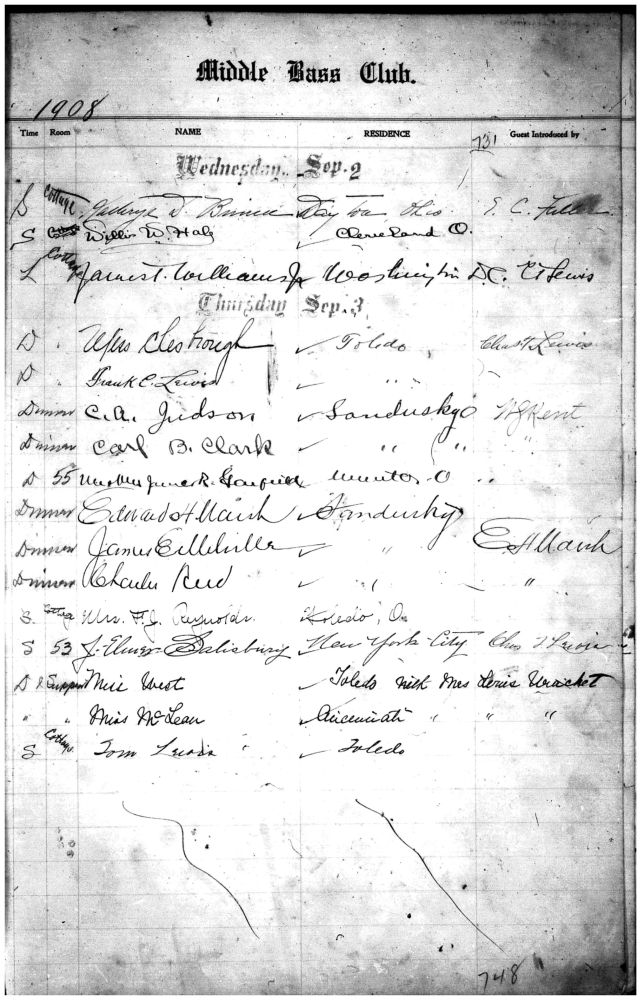 Club House Guest Book: September 2, 1908. Source: Morton Family
Club House Guest Book: September 2, 1908. Source: Morton Family
On September 3rd,
Charles A. Judson
Judson was appointed by President Theodore Roosevelt as Collector of US Customs in Sandusky and re-appointed by President Taft. Judson also served as a delegate from Ohio’s 13th district to the 1908 Republican Convention. He arrived for dinner as a guest of MBC member William Stewart Kent. Kent was President of the Kent National Bank and donated 52 acres of land to establish what is now Kent State University.
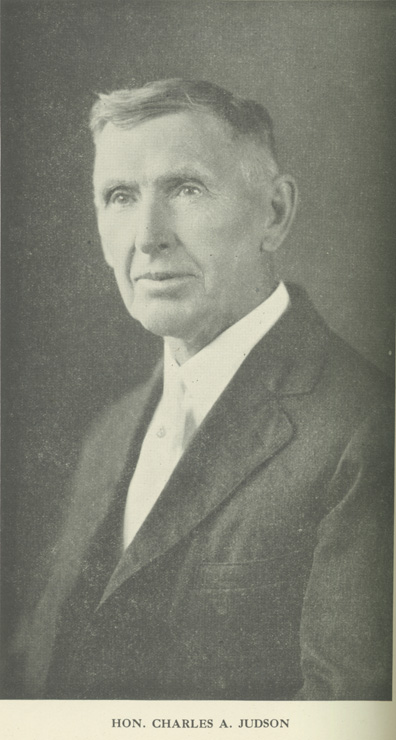 MBC Guest Charles A. Judson. Source: Sandusky History blogspot
MBC Guest Charles A. Judson. Source: Sandusky History blogspot
 Club House Guest Book: September 3, 1908. Source: Morton Family
Club House Guest Book: September 3, 1908. Source: Morton Family
James R. Garfield
Taft’s schedule would not permit a visit to Mentor, so Taft invited the Garfields to the MBC to discuss his upcoming speeches in Maine. Garfield was President Theodore Roosevelt’s Secretary of the Interior and the son of President James A Garfield. Mr. and Mrs. Garfield from Mentor, Ohio arrived for dinner and stayed in Club House room 55.
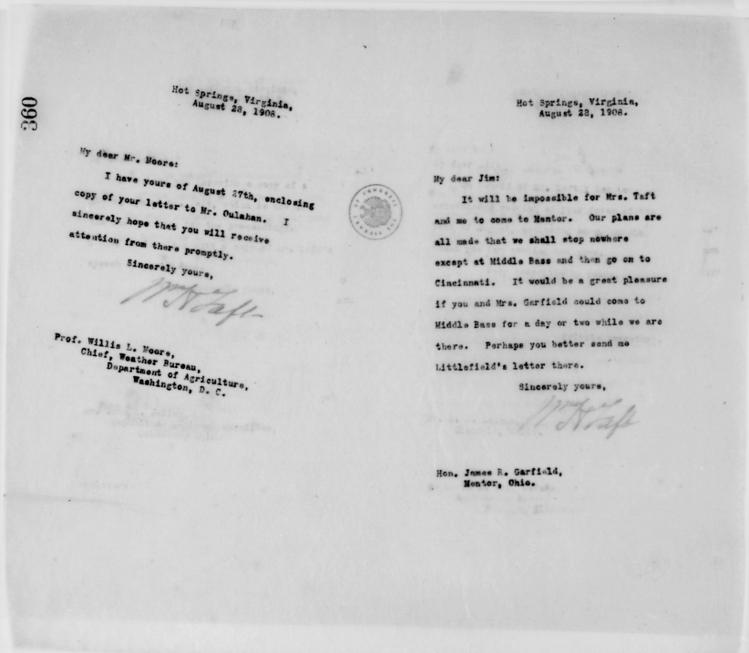 Letter Taft to Garfield: August 28, 1908. Source: Library of Congress, William H Taft Papers: Series 8: Letters, 1872-1921; Secretary of War Personal Letters; Vol 24, 1908 Aug. 18-Sept. 18, Image 390
Letter Taft to Garfield: August 28, 1908. Source: Library of Congress, William H Taft Papers: Series 8: Letters, 1872-1921; Secretary of War Personal Letters; Vol 24, 1908 Aug. 18-Sept. 18, Image 390
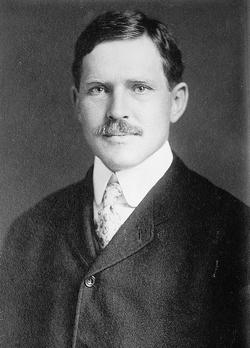 MBC Guest James R. Garfield. Source: Find A Grave
MBC Guest James R. Garfield. Source: Find A Grave
On September 4th,
Webb C. Hayes
Hayes served in Troop A as the personal escort for all presidents from Hayes to Taft and was the 2nd son of President Rutherford B Hayes. Hays from Fostoria, Ohio arrived at supper and stayed in Club House room 56.
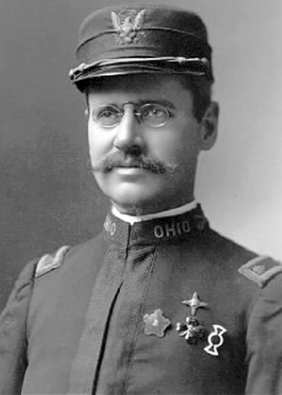 MBC Guest Webb C. Hayes. Source: dvs.ohio.gov
MBC Guest Webb C. Hayes. Source: dvs.ohio.gov
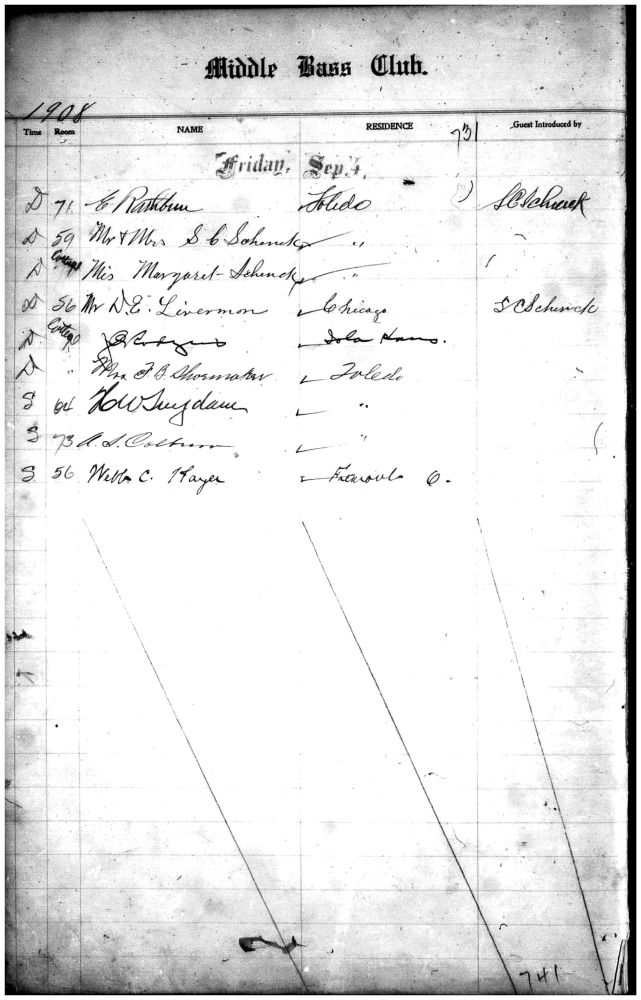 Club House Guest Book: September 4, 1908. Source: Morton Family
Club House Guest Book: September 4, 1908. Source: Morton Family
On September 5th,
Wade E Ellis
Taft sent Ellis a letter on August 31st. Ellis was Ohio’s Attorney General and a delegate from Ohio’s 2nd district to the 1908 Republican Convention. Ellis traveled from nearby Lakeside, Ohio where he was vacationing to meet with Taft to discuss a job offer from President Roosevelt. Later Ellis accepted the position, promoting him to the Assistant to the Attorney General of the United States. Ellis did not sign the Guest Book during his visit.
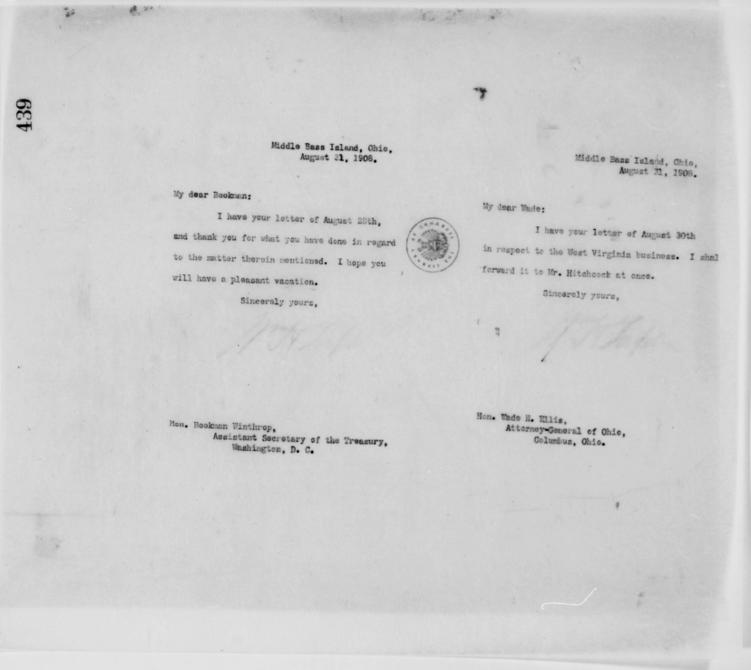 Letter from Taft to Ellis: August 31, 1908. Source: Library of Congress, William H Taft Papers: Series 8: Letters, 1872-1921; Secretary of War Personal Letters; Vol 24, 1908 Aug. 18-Sept. 18, Image 471
Letter from Taft to Ellis: August 31, 1908. Source: Library of Congress, William H Taft Papers: Series 8: Letters, 1872-1921; Secretary of War Personal Letters; Vol 24, 1908 Aug. 18-Sept. 18, Image 471
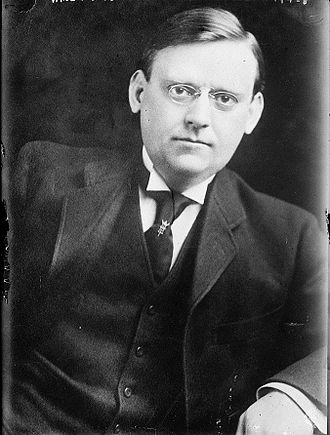 MBC Guest Wade H. Ellis. Source: Wikipedia
MBC Guest Wade H. Ellis. Source: Wikipedia
Frank Harris Hitchcock
Hitchcock was Chairman of the Republican National Committee and later the Postmaster General of the United States under President Taft. Hitchcock visited Taft on the island for a couple of hours, so his signature is not in the Guest Book. Thus, we rely on The Sun newspaper from New York to describe Hitchcock’s visit, “…the Halcyon soon placed Mr. Hitchcock in a big wicker arm rocking chair beside the candidate (Taft) on the back porch of the Ford cottage…” [6]
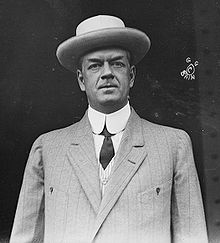 MBC Guest Frank J. Hitchcock. Source: Find A Grave
MBC Guest Frank J. Hitchcock. Source: Find A Grave
Levi Scofield
Mr. and Mrs. Scofield were guests of MBC member George James Johnson and stayed in Club House room 40. Johnson was involved in real estate and lived on Cleveland’s infamous Euclid Avenue. Scofield was a prominent Cleveland architect and friend of John D Rockefeller who allowed President Garfield’s body to be housed in his mausoleum in Lake View Cemetery until the Garfield Memorial was built.
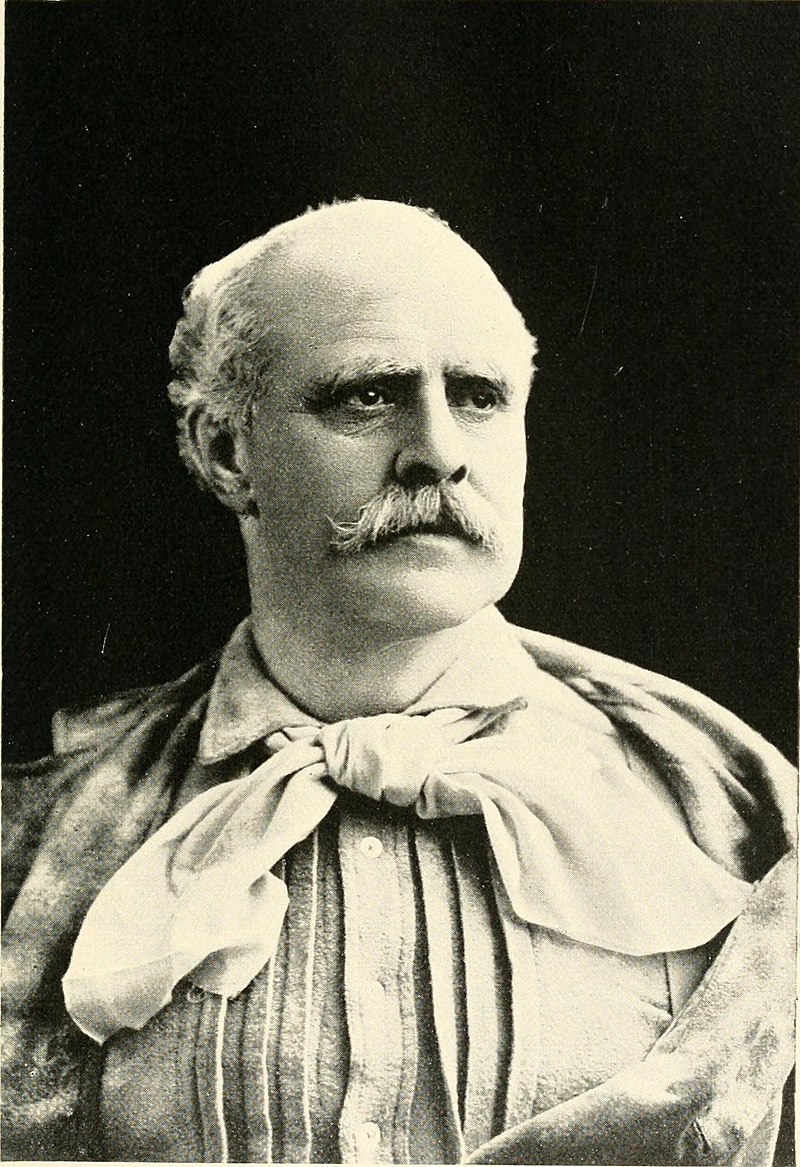 MBC Guest Levi Scofield. Source: Wikipedia
MBC Guest Levi Scofield. Source: Wikipedia
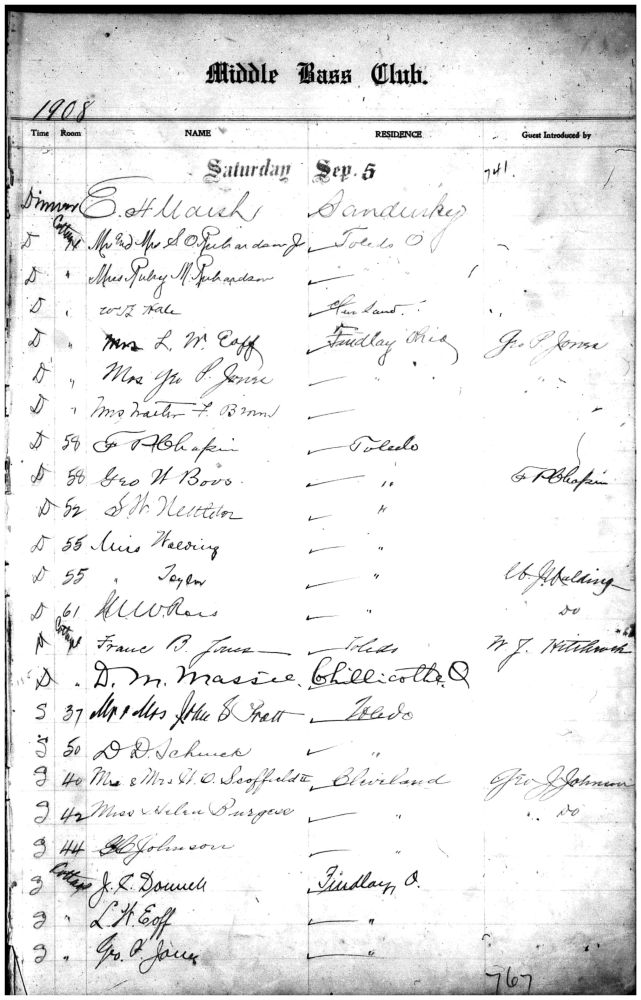 Club House Guest Book: September 5, 1908. Source: Morton Family
Club House Guest Book: September 5, 1908. Source: Morton Family
On September 6th,
Arthur I. Vorys
Vorys served as Taft’s Chief of Staff during his presidential campaign and was an overall delegate from Ohio to the 1908 Republican Convention. Vorys arrived at the MBC on September 6th as a guest of MBC member Walter Folger Brown and stayed in a cottage.
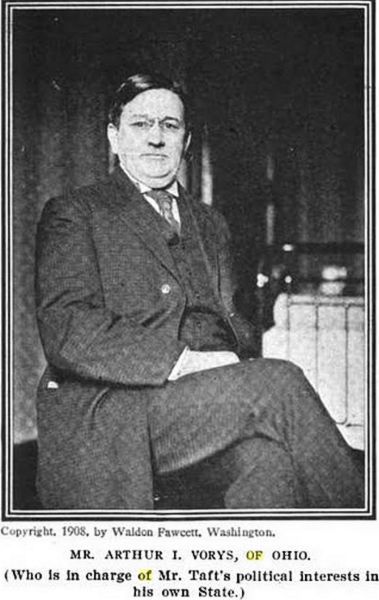 MBC Guest Arthur I. Vorys. Source: Find A Grave
MBC Guest Arthur I. Vorys. Source: Find A Grave
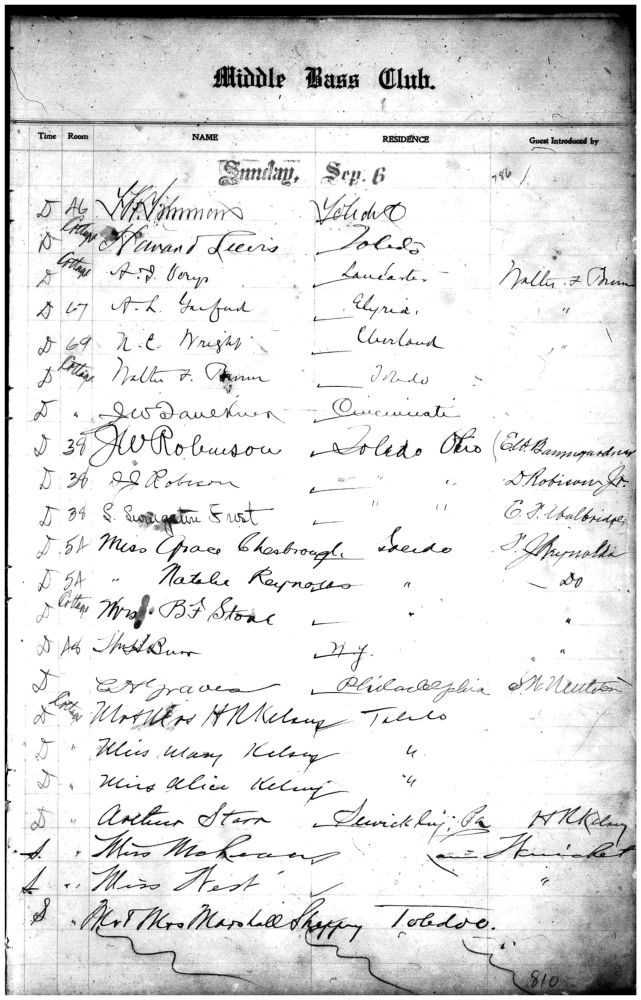 Club House Guest Book: September 6, 1908. Source: Morton Family
Club House Guest Book: September 6, 1908. Source: Morton Family
Arthur L. Garford
Garford was an industrialist, politician and inventor of the first padded bicycle seat (“Garford Saddle”). Garford served as a delegate from Ohio’s 14th district to the 1908 Republican Convention. Garford arrived on September 6th as a guest of MBC member Walter Folger Brown and stayed in Club House room 67. The photo shows James Garfield, President Theodore Roosevelt and Arthur Garford.
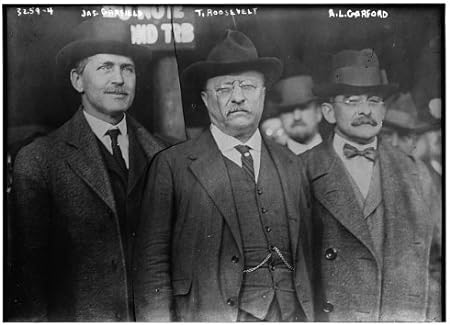 MBC Guest James Garfield, President Theodore Roosevelt & MBC Guest Arthur Garford – Photo not taken at the MBC. Source: amazon.co.jp
MBC Guest James Garfield, President Theodore Roosevelt & MBC Guest Arthur Garford – Photo not taken at the MBC. Source: amazon.co.jp
Nathaniel C. Wright
Wright was the President and Editor of the Cleveland Leader and later became the Managing Editor of the Toledo Blade. Wright arrived at the MBC on September 6th as a guest of MBC member Walter Folger Brown and stayed in Club House room 69.
Taft’s sojourn at the MBC ended on the morning of September 7th. Members gathered together on the dock to say farewell to the Taft family with much celebration, including Yale’s infamous Eli Yell.
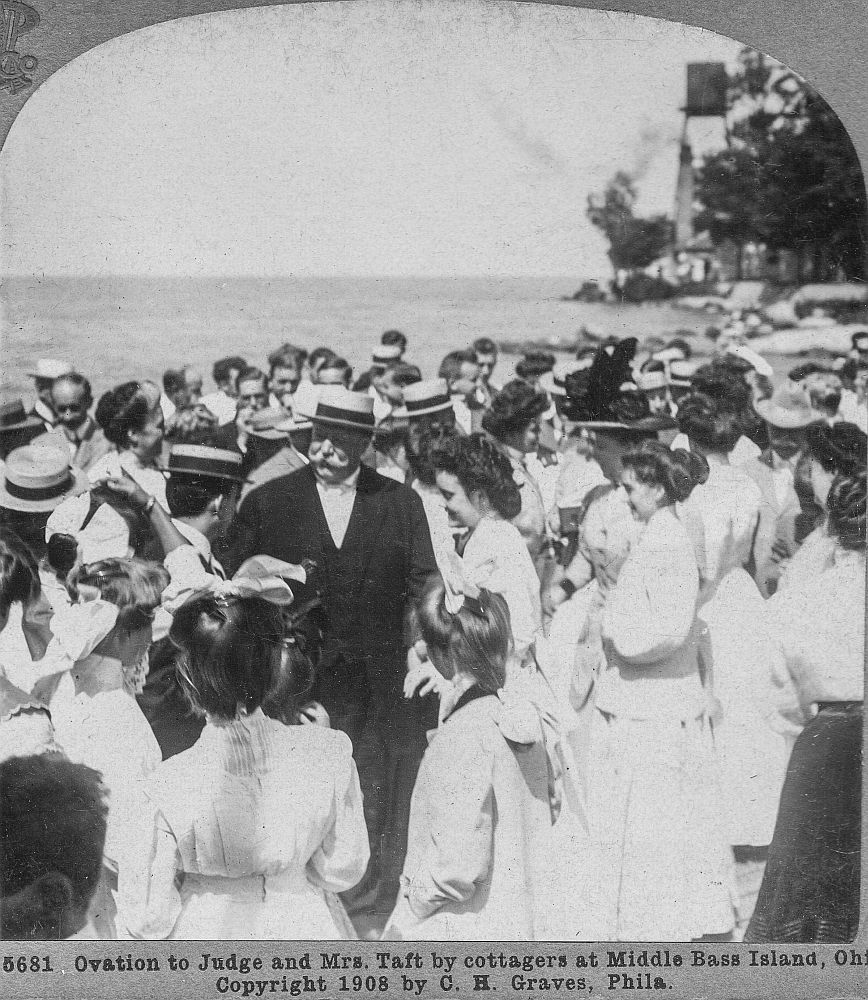 William Howard Taft at MBC surrounded by Club members. Source: Mike Gora
William Howard Taft at MBC surrounded by Club members. Source: Mike Gora
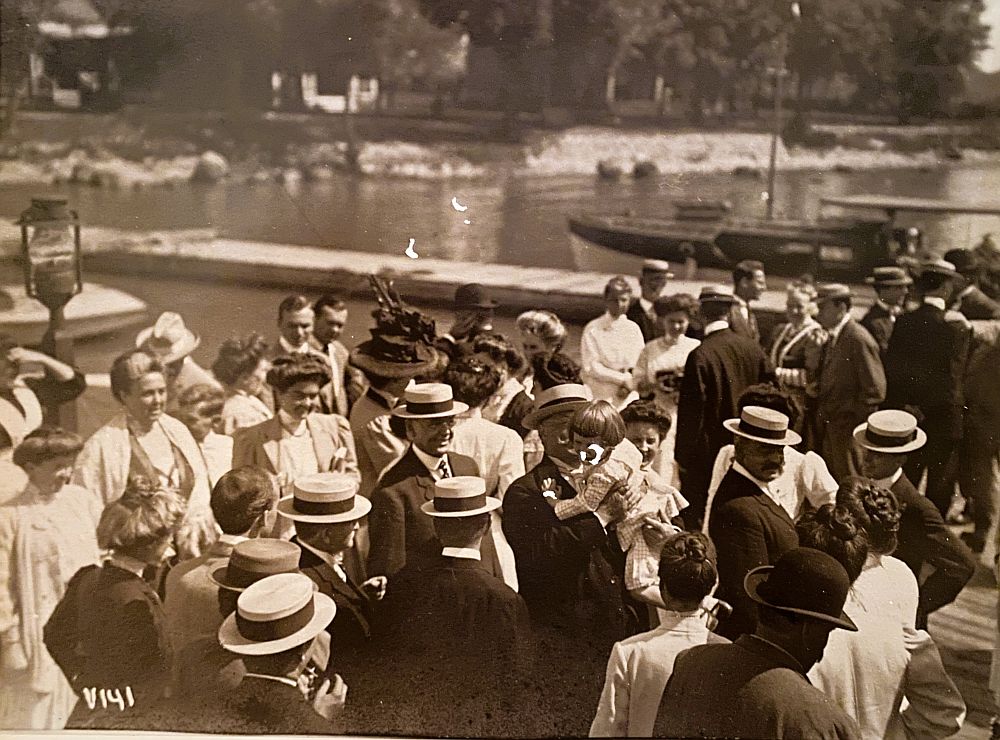 William Howard Taft at MBC surrounded by Club members. Source: Dr. Martin Taliak
William Howard Taft at MBC surrounded by Club members. Source: Dr. Martin Taliak
The Taft family boarded the Jessamine and then drove to see Webb Hayes at the home of his father, President Rutherford B Hayes, in Fremont, Ohio. President Hayes’ property, Spiegel Grove, featured special trees: a Cleveland Hickory, a McKinley Oak and a Garfield Maple; they added a Taft Oak after that visit. Later that evening, the Tafts traveled to Sandusky to spend the night with Yale classmate Edward H Marsh. Taft’s official presidential campaign commenced the following day.
William Howard Taft became the 27th President of the United States, sworn in on March 4, 1909. After his presidency, William Howard Taft was named the 10th Chief Justice of the United States Supreme Court making him the only American to rise to the top echelon in two branches of government (executive & judicial).
Endnotes
[1] Toledo Blade Articles in Dr Martin Taliak Personal Collection
[2] Toledo Blade Articles in Dr Martin Taliak Personal Collection
[3] William Howard Taft National Historical Site, Taft Chronology 4 Aug 1907-1909, page(s) 43-44. www.NPS.gov/WIHO
[4] United Press Association – History, https://unipress.wordpress.com/
[5] askart.com - “Artist Biography & Facts John Elmer Salisbury by Edward P Bentley, Art researcher and collector, Greenville, Michigan.”
[6] The Sun, New York, New York, September 6, 1908
Acknowledgements
The Middle Bass Club Chapel Story is based upon recollections from Club member Maggie Kinsey Wood, the Middle Bass Chapel Association Records Book (1881-1910), the Middle Bass Club House Guest Register books (1899 – 1904 and 1908 - 1912) and my research which benefited greatly from analysis and documents gathered by Judith Flickenger Bahney, Gene Morton, Dr. Martin Taliak and Lisa Fine.
I am fortunate to have met one living person, Maggie Kinsey Wood, who remembers being inside the Middle Bass Club Chapel. Maggie Kinsey Wood’s parents, Isaac Kinsey Jr. and Phyllis Bigelow Kinsey, owned a cottage in the Middle Bass Club. Phyllis Bigelow Kinsey purchased the cottage from Herman D. Rehberg in December 1926 (Ottawa County Recorder’s Office: Volume 93 , Page 306). This cottage exists today on Grape Avenue in William Rehberg’s 2nd Addition: lot 40 and is owned by the Demer family. When Maggie Kinsey Woods was a young girl in the early-1930s, the Chapel and a few Middle Bass Club cottages were “abandoned” which made great fun for the children to go on “adventures” where they could explore and play inside the buildings. Maggie Kinsey Wood remembers that the Chapel looked like the picture above; it had a front porch and at least one stained glass window. She said that it still felt like a church inside: there were rows of pews and an open Bible sitting on the lectern. Maggie Kinsey Wood assured me that the children were respectful while playing inside the Chapel because they knew better than to “mess up a church.”
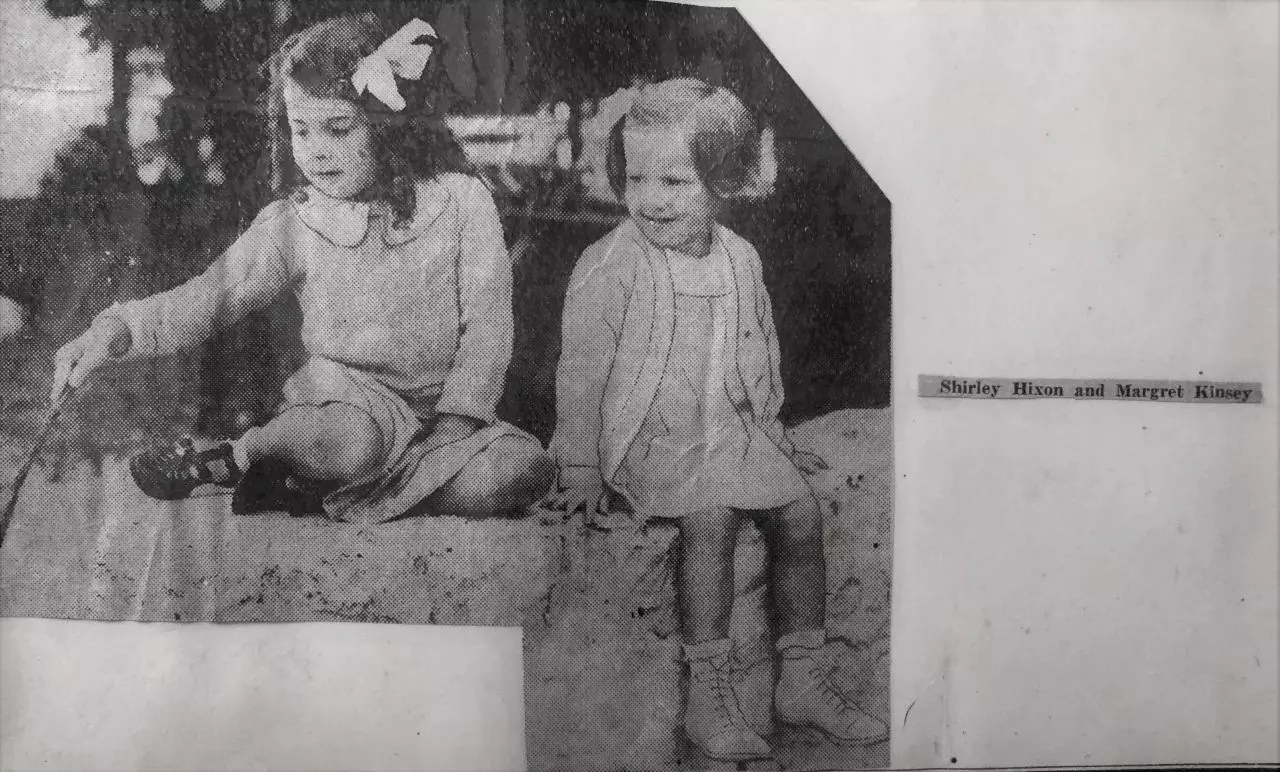 Shirley Hixon and Margaret (Maggie) Kinsey on Middle Bass Club wall. Circa 1933. Obtained from Phyllis Bigelow Kinsey Bennett's scrapbook. Source: Maggie Kinsey Wood
Shirley Hixon and Margaret (Maggie) Kinsey on Middle Bass Club wall. Circa 1933. Obtained from Phyllis Bigelow Kinsey Bennett's scrapbook. Source: Maggie Kinsey Wood
Judie Flickenger’s family preserved the Middle Bass Chapel Association Records Book for many years and then offered it to her childhood friend from the Middle Bass Club, Dr. Martin Taliak who graciously shared it with me. The Records Book contains handwritten meeting minutes of the Middle Bass Chapel Association (which formed in 1881) and the Constitution and By-Laws that governed the organization. I have transcribed the Records Book and there is a link below to read it in its entirety. Because the Records Book was handwritten, some names and verbiage are italicized to indicate that portion of the transcription is “estimated.” A reference of the original Records Book’s page number is listed for each section. The Records Book ends in 1910 with the latter years having little documentation about the Association, focusing solely on the ministers who came to preach at the Chapel or the list of Trustees. In the near future, the Records Book will be housed at the Canaday Library at the University of Toledo which is associated with the Toledo’s Attic website.
![]() Middle Bass Chapel Association Records Book
Middle Bass Chapel Association Records Book
Microfilm copies of the Middle Bass Club House Guest Register books (1899 – 1904 and 1908 - 1912) reside at the Jerome Library at Bowling Green State University. Eugene Morton donated copies of the James Clark family’s scrapbooks and Middle Bass Club documents. The Morton family bought their cottage from descendants of James Clark who was a founding member of the Middle Bass Club from Louisville, Kentucky. James Clark built his cottage in 1876 and it stands today on Grape Avenue, Rehberg’s Original Subdivision lot 6, and is owned by the Gill family. It’s amazing that the cottage has only been owned by two Middle Bass Club families: James Clark and his descendants and Eugene Morton and his descendants. Please note that the Other Archives sections of this website contains many documents and pictures from the James Clark family. The Guest Register books on microfilm document Middle Bass Club members and their guests who visited the private Middle Bass Club property during summers. All members and guests were required to sign the Guest Register book, even if the members stayed in their own cottages. At that time, everyone dined at the Middle Bass Club House as member cottages did not have kitchens. Most likely, the strict rule of signing the Guest Register book was to ensure proper record keeping so that the Club House could appropriately charge the members for their lodging and meals.
Access the photo, video and documents archives here
Photo and Document Archives: Artifacts and Documents
Photographs of artifacts
Original and recently taken photographs of the club grounds: Middle Bass Chapel, Club House, Boat House and Dock, Cottages, and Rehberg Hall
Digitized primary sources, organizational records
Photo and Document Archives: Members and Guests
Photos and filmed footages of members and guests at Middle Bass Club
Member Portraits
Related inforation:

